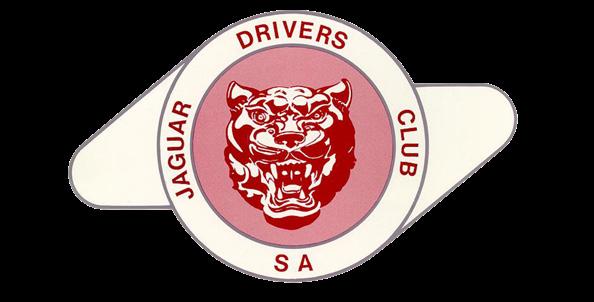
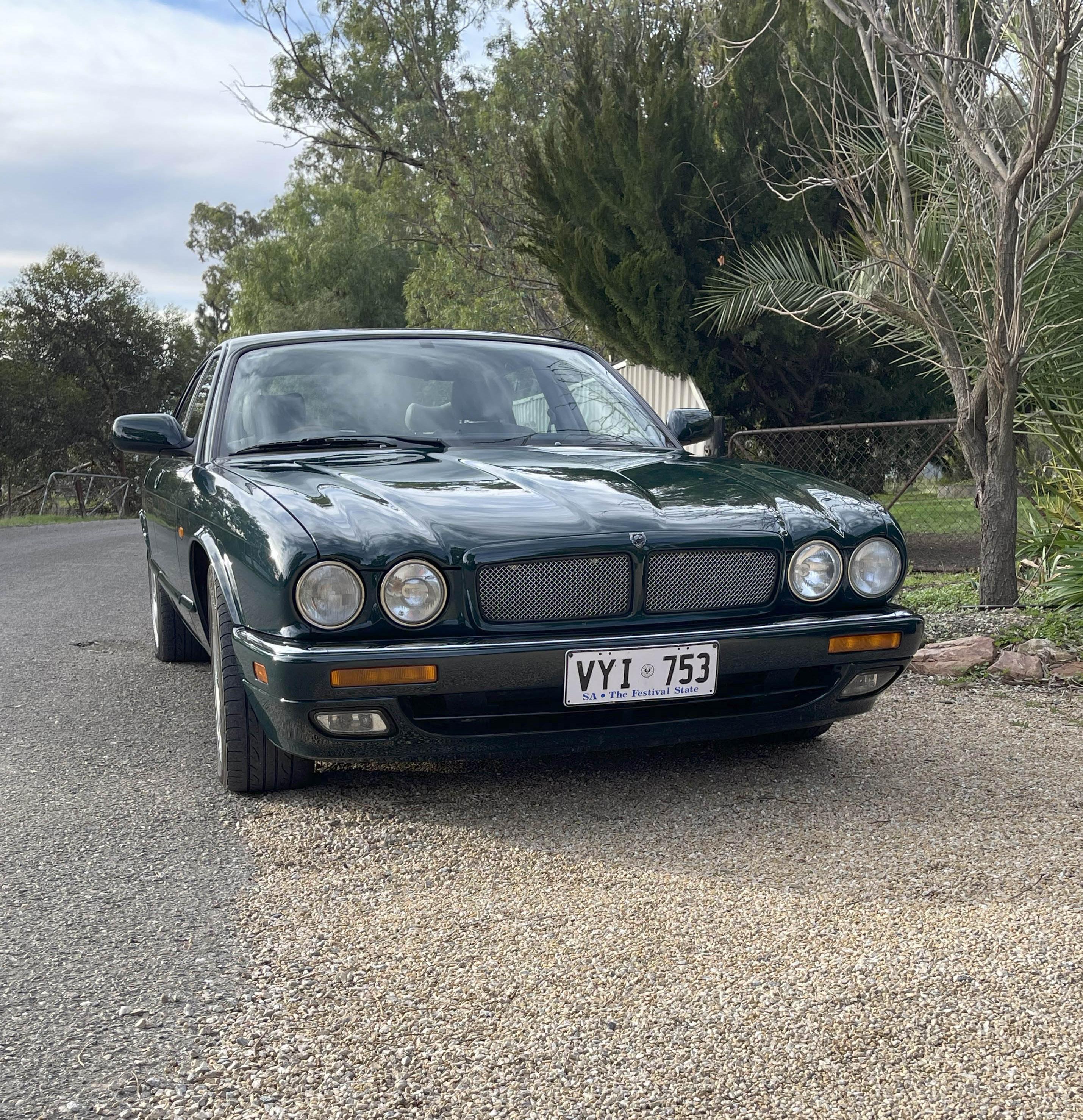



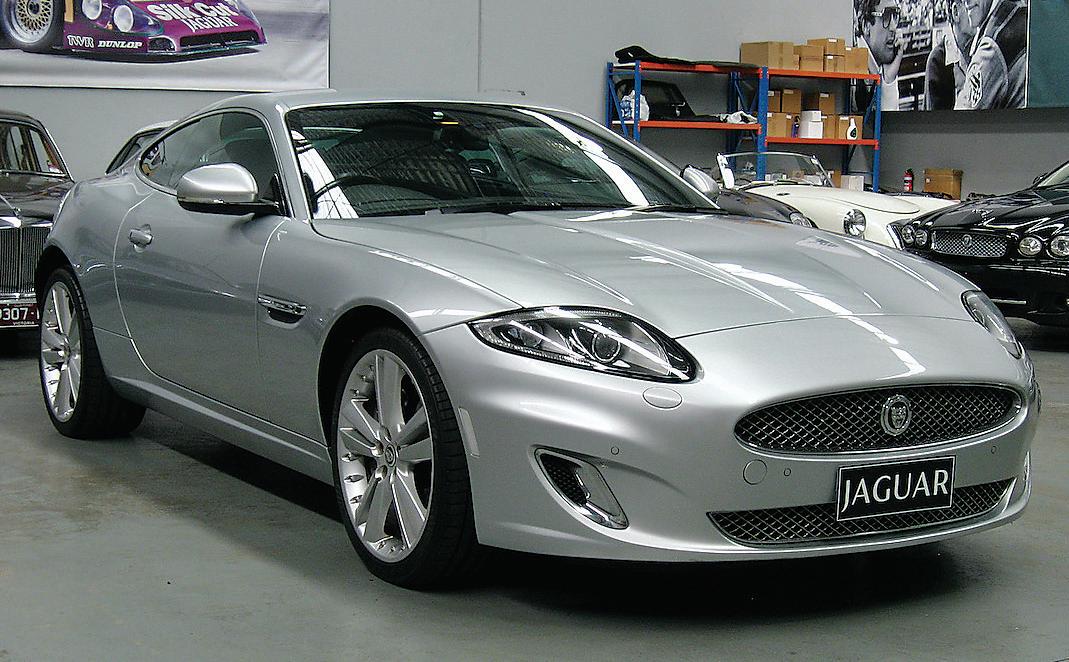
Last and best of the XK Series with revised front bumper and light design. Low kilometre example with service history including log book, various owner manuals and spare key. Excellent condition inside and out, last of the great XKs.

Low kilometre MY18 Jaguar F-Pace 25T 2L Turbocharged Petrol in excellent condition inside and out. Very well maintained, the car comes with service history, owner manuals and spare key. Well optioned, any test welcome.

Very well maintained with Jaguar service history, various owner manuals and spare key. The Lunar Grey duco, Barley leather and Burr Walnut timber inserts all present in first class condition and the car drives exceptionally well.
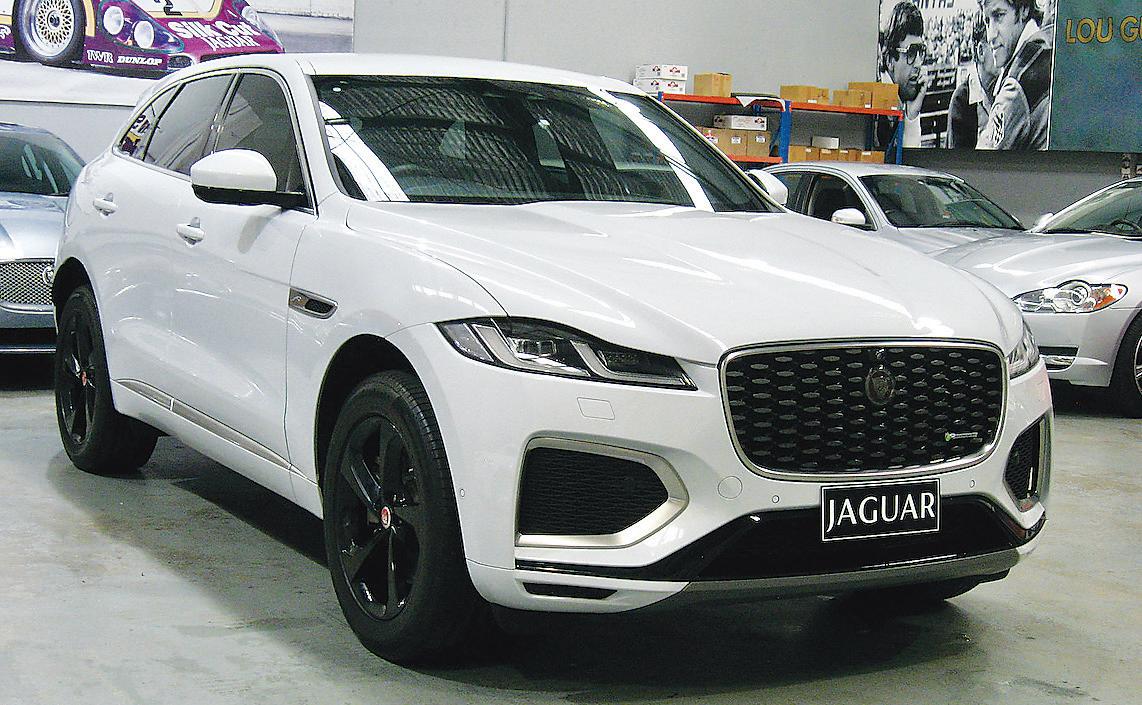
Low km, 2021 update P250 R-Dynamic S Turbo Petrol in excellent condition inside and out. Very well maintained, the car comes with service history including service log, owner manuals, spare key and balance of new car factory warranty.
The past month seems to me to have been a little quiet. As I write this there have only been three register events and numbers attending those were a bit down. Must be the time of year with some members escaping to warmer climates.
One event that was only slightly shy of the number last year, was our Annual Presentation Dinner; and what a great event it was. The success of the event in 2024 was enough to go again and we were not disappointed this year. The venue is very good; as was the food, service and entertainment. A very big “well done" to Tricia Clarke, Heather Buck and Daphne Charman for organising the event for us. We were able to recognise members for their special efforts by presenting the following perpetual trophies:
▪ Editor’s Award – Gordon Elley
▪ President’s Award – Tim White
▪ Most Enthusiastic Member – Bruce Davis
▪ Club Person of the Year – Alan Bartram OAM
In addition to the major awards we also recognise members who have attained 10, 20, 30, 40 and 50 years of membership.
This year there were 46 members who reached one of these milestones but only 16 were present on the night. The full list is below.
Some very good news, Jag Day is on! It is very pleasing that Suzanne Jarvis has put her hand up to co-ordinate Jag Day 2025 (Sunday 26th October). Suzanne has previously demonstrated her excellent organisational skills both as the previous E, F & GT Register Secretary and the chief organiser of our 50th Anniversary Dinner in 2023. Thank-you Suzanne.
I am advised that there are still 67 Logbooks that have yet to be renewed despite the many and varied opportunities to do so. If you have a Logbook that has not been renewed please don’t drive your car – it is unregistered and heavy penalties apply.
The Annual General Meeting (2nd September) Notice of Meeting is repeated in this issue of Classic Marque and I encourage members to attend if possible. Until next month, mind how you go.
Michael
The following members achieved significant milestones in 2025, and we congratulate them. Certificates and badges will be forwarded to members unable to attend the 52nd dinner. Congratulations to the following, and previous members, who have achieved these milestones.
Don Heartfield
Toni Heartfield
Chris Worthley
Pamela Worthley
John Lewis
Jenny Lewis
David Holt
Randall Sach
Colin Williamson
Nan Williamson
Peter Taylor
Kathy Taylor
Dan Jeffries
Clayton
Kenneth Davies
Victoria Traino
Peter Cox
David Rogers
Angela Rogers
Mark WalkerRoberts
Davidson
Lynda Reseigh
Robert Wilson
Jacqueline Wilson
Rodney Irvine
Jennifer Kennedy
Rick Luff
Sharon WalkerRoberts
Andrew Tessari
Simone Tessari
Trevor Norley
Raelene Ringwood
John Cribb
Maria Cribb
Wayne Buttery
Beverly Buttery
Paul Moore
Janice Moore
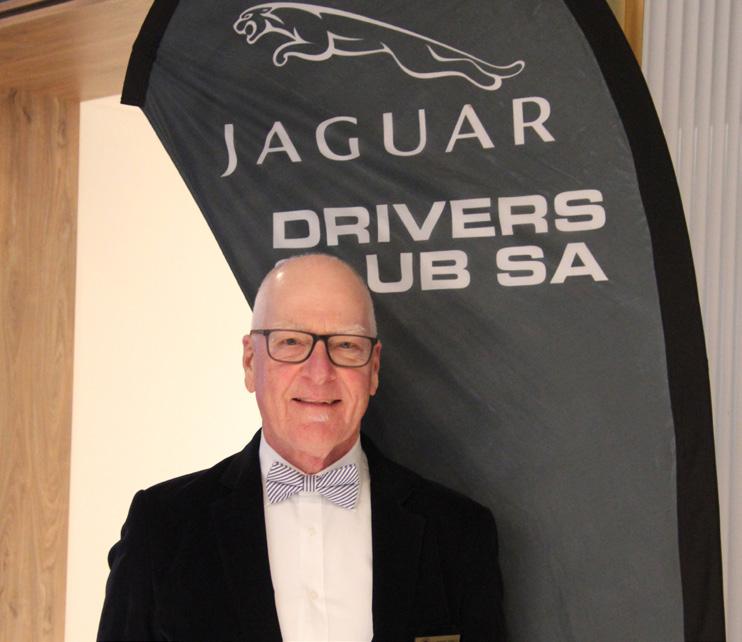
Eugene Clark
Pamela Clark
Trevor Jacobs
Simon Ewart
Natalie Ewart

TUESDAY 5th AUGUST
TUESDAY 12th AUGUST
WEDNESDAY 13th AUGUST
THURSDAY 21st AUGUST
SUNDAY 24th AUGUST
TUESDAY 2nd SEPTEMBER
WEDNESDAY 10th SEPTEMBER
THURSDAY 18th SEPTEMBER
THURSDAY 25th SEPTEMBER
26 - 29th SEPTEMBER
TUESDAY 7th OCTOBER
WEDNESDAY 8th OCTOBER
14th - 18th OCTOBER
SUNDAY 19th OCTOBER
21st - 24th OCTOBER
SUNDAY OCTOBER 26th
JDCSA August General Meeting -
‘ The Junction”, 470 Anzac Highway. Starts at 7.30pm with meals available from 6:00pm. For a meal please register via TidyHq JDCSA August General Meeting
Compact Register Meeting : 6.00pm - 9.00pmMeeting at the Maid of Auckland Hotel, 926 South Road, Edwardstown at 6.00pm for a meal followed by an informal meeting.
Details and registration via TidyHq Compact Register August Meeting
XJ, MkX, 420G Register Meeting : 6.00pm - 8.30pm Come and join our monthly meeting. Meet at the Bartley Hotel. More details via email and TidyHQ closer to event. Please mark the date in your diary.
E, F & GT Register Meeting & BBQ: 6.00pm - 8.30pm
To be held at Peter Thomas’s workshop at Lonsdale. It will include a complementary BBQ. Details and registration via TidyHq E,F & GT August Meeting & BBQ
XK 7. 8 & 9 Register Meeting/Compact Register BBQ Meeting: 11.00am - 3.00pm Lunchtime BBQ get together at the home of Steve & Celia Schubert. Please register via TidyHq XK 7, 8, 9 Register Meeting & BBQ
JDCSA September Annual General Meeting
‘ The Junction”, 470 Anzac Highway. Starts at 7.30pm with meals available from 6:00pm. More details will be provided closer to the event via Email & TidyHQ.
XJ, MkX, 420G Register Meeting : 6.00pm - 8.30pm
Come and join our monthly meeting. Meet at the Bartley Hotel.
More details via email and TidyHQ closer to event. Please mark the date in your diary.
Jaguar Ladies Social Register : Co-hosting with the Multivalve register. The ladies will dine at the Ovingham Hotel, North Adelaide and the gentlemen will dine at the Adelaide Oval with an optional tour of the Oval prior.
Multivalve Register Meeting/Dinner : 6.00pm - 9.00pm The Kensington Hotel, 23 Regent St, Kensington. 6:00pm for dinner with meeting at 7:30pm. More details via email and TidyHQ closer to event. Please mark the date in your diary.
SS, Mk IV & Mk V Multi-State Border Run to Dubbo
The event has been organised by Nik Cirakovic, Secretary, SS, MkIV & MkV Register, Jaguar Car Club of Victoria. Details on TidyHq. Multi-State Border Run to Dubbo
JDCSA October General Meeting‘ The Junction”, 470 Anzac Highway. Starts at 7.30pm with meals available from 6:00pm. More details will be provided closer to the event via Email & TidyHQ.
XJ, MkX, 420G Register Meeting : 6.00pm - 8.30pm
Come and join our monthly meeting. Meet at the Bartley Hotel. More details via email and TidyHQ closer to event. Please mark the date in your diary.
XK 7, 8 & 9 Register Border Run - Clare Valley.
The full program will include visits to historic homesteads, a day in the old mining town of Burra visiting several historic sites and a variety of hospitality venues, including wineries for meals. More details via email and TidyHQ closer to event. (See Page 59)
RAA Bay to Birdwood 2025 Registrations open Now!
Multivalve Register - Trip to Bendigo
More details via email and TidyHQ closer to event. Please mark the date in your diary.
https://baytobirdwood.history.sa.gov.au/
SA JAG DAY - Wigley Reserve, Glenelg: 10am to 2.30pm
Enjoy a magnificent display of 150+ Jaguar and Daimler cars ranging in ages from the mid 1930s to present day. All models, any condition welcome. Celebrating 50th Anniversary of the Jaguar XJC and the Jaguar XJS. CATS and CANS Food Drive is on again!
FRIDAY 7th NOVEMBER 2025
SATURDAY 13th DECEMBER
Climb to the Eagle 2025: Registrations open Now!
Convene at the Victoria Park grandstand and proceed to Hahndorf for morning tea via Eagle on the Hill and then proceed to Victor Harbor. Climb to Eagle
XJ Mk10 & 420G Register Christmas Dinner & Show 2025: 5.30pm - 11.30pm
Join us at the Glenelg Golf Club for our annual XJ Register Christmas Dinner and Show. Please register via TidyHq
XJ Mk10 & 420G Register Christmas Show
As usual there is coverage of Club events, which of course includes the Annual Presentation dinner. Congratulations to all winners including Gordon Elley who won the Editor’s Award for his "Members Story" in the September 2024 edition of Classic Marque.
Jaguar Land Rover are under some pressure with sales and profits down, but they are not alone. Facing Trump’s tariffs and slowing demand in China, MercedesBenz and Porsche have also slashed their earnings forecast.
If you are a connoisseur of single malt whiskey, Jaguar and Scotland’s oldest working distillery, "The Glenturret", are marking the 70th anniversary of the Jaguar D-Type with the latest edition in their whiskey collaboration series. The 35 year old whiskey is available to order with a recommended retail price of £2,200. (AU$4,500). (Yikes).
This month we are celebrating 30 years of the XJ X300, a car which has since become one of the most respected
models in Jaguar’s history. Thank you to the members who provided stories. Finally, I am still looking for photos for next year's club calendar. Last year we were oversubscribed. I think the cold weather has put members into hibernation.
I don’t need the photos right now – just let me know and I will reserve a space. Graham
This year's AGM is fast approaching. All members are encouraged to attend as this is an important meeting with the election of Club Officers for the next two years.
For the first time, in a long time, it looks like we may have several nominations for the same position(s).
A healthy sign for any club.
So please come along and have your say. Repeat - “this is an important meeting with the election of Club Officers for the next two years”.
Editor.

You should have received an email or letter asking you to renew your financial Membership. Please renew now! (If you have not yet done so).
Once you have renewed your membership, your Logbook can be updated for another year. Please mail your Logbook(s) to JDCSA, PO Box 6020, Halifax St, Adelaide, 5000. (Including A Stamped, Self-Addressed Envelope). For further information please call Tim White on 0419809021 or logbookofficer@jdcsa.tidymail.co
The following application for membership has been lodged with the Membership Secretary and are listed in accordance with clause 5.4 (b) of the Constitution. If there are no objections, membership will be ratified one month from this August, 2025 Classic Marque magazine:
◊ Jeffrey & Dawn Drewer: 1957 XK150 3.8L FHC
◊ Cromwell Irving & Kylie French: 1972 5.3L E-Type Coupe
The following applications listed in the July, 2025 Classic Marque magazine have been accepted:
◊ Michael McCarthy: 1974 Jaguar XJ6 4.2 Litre Sedan.
◊ Graham Cocks: 1996 Jaguar X300 4.0 Litre Sedan.
We hope you will take advantage of the benefits available, and that you will contribute in your own way to make this a better club for everyone. I particularly ask that Register Secretaries and current members make these new members welcome at meetings and functions.
Daphne Charman Membership Secretary
Jaguar Drivers Club of South Australia Inc. NOMINATIONS FOR
The Annual General Meeting is to be held on Tuesday 2nd September 2025 at 7.30pm at the Junction, Stables One Room, 470 Anzac Highway, Camden Park.
This is the initial call for nominations for the elected positions on the Executive Committee. Nominations received from members will be recorded along with their personal Bio in the September Classic Marque.
In accordance with the Constitution the following applies: Nominations must be:
a. In writing, on the prescribed form (refer below).
b. Details of the necessary qualifications and job description for the positions, shall be provided and details of the suitability for the position as part of the nomination form.
c. Endorsed by a financial member.
d. Certified by the nominees who must be a financial Member expressing their willingness to accept the position for which they are nominating.
e. Delivered to the Club by the date fixed for the Annual General Meeting. Nominations are called for:
a. President
b. Vice-President
c. Treasurer
d. Committee Member (not a job specific position)
When lodging your nomination which, should be handed to or posted to the Secretary up to the start of the AGM. Please include the nomination form duly signed and attach a short description of your skills, experience and suitability for the role you are nominating for consistent with the Job Description provided. This information will be made available at the AGM for members.
As a financial member of the JDCSA we wish to submit the following nomination.
I (nominees name) _______________________________________ apply for the position of
President/ Vice-President / Treasurer / Committee Member (Please delete which is not applicable).
Signed by the Nominee: ___________________________________________
Dated: ________ / __________ / __________
Seconded by: (Name): ____________________________________________
Signature of Seconder: ____________________________________________
Dated: ________ / __________ / __________
My qualifications and experience for this role consistent with the provided job description are as attached: (Please attach a separate page with the appropriate details)
This form needs to be completed and handed to the club secretary.
Thank you to the 149 members who responded to our member survey. The lucky draw voucher winners were James Mann and Colin McEgan.
The primary goal was to determine reasons for non-attendance at General Meetings, but the survey also gathered feedback on other aspects of the Club. Key findings include:
◊ 57% valued social interaction with individuals sharing similar interests.
◊ 56% rated participation in Club events with other Jaguar owners as very or extremely important.
◊ 52% considered technical support and advice regarding their Jaguar to be an important or extremely important reason for joining.
◊ 39% learned about JDCSA from other members, while 23% found out through the website.
93% of respondents indicated satisfaction with how JDCSA membership met their reasons for joining.
For those who never or only occasionally attend General Meetings:
◊ 74% agreed or strongly agreed they received adequate information about the Club from Classic Marque.
◊ 45% felt sufficiently informed through Register Meetings.
◊ 42% reported that distance to travel was a factor.
◊ 20% disagreed or strongly disagreed that the timing or day of meetings was a reason for their non-attendance.
Feedback regarding events indicates that members appreciate a variety of activities, and considerations such as event timing will be considered by the Committee when planning the Club Calendar.
Issues identified as significant for the Executive Committee include increasing technical presentations and garage visits, greater involvement of countrybased members, and engaging younger members. These areas are noted for reinforcement in future planning.
There were many positive comments on the running of the Club and appreciation for the efforts of those who volunteer their time to support the Club.
The following nominations for vacancies on the Executive have been received so far. Nominations are open and remain open until commencement of the AGM on 2nd September. (See nomination form).
Nomination for President – Michael Pringle
Current President seeking a further term.
Nomination for President –Moira Lugg
I have been a member of the Jaguar Drivers Club of SA since 1973, actively organising events for the Green Triangle and XK, Mk 7, 8, 9 Registers and supporting numerous Club activities.
Professionally, I held management roles in Tertiary Education and the public sector, focusing on strategic and business planning, and performance monitoring and in those roles I have chaired several committees.
After retiring, I volunteered with Vinnies SA, serving as Regional President, State Vice President, and Chair of their initial Finance, Audit and Risk Management Committee.
I have held the position of Club Secretary for the past year, which has given me insight into the operation of the Executive Committee. My experience in planning, meeting management, time management and passion for Jaguars and motorsport make me a strong candidate for President.
If elected President I will ensure the best interests of the Club are foremost in decision-making and actions, that the efforts of those who volunteer is respected and recognised, and that the concerns of members are listened to.
Nomination for Vice President –Tim White
My involvement with the Jaguar Club is now approaching 24 years. Over that time, it has been a pleasure to assist the many committees over that time period to ensure that the JDCSA retains its relevance for members. With around 400 paying members and 400 family members there is a great amount of thinking and work to ensure this relevance continues as the membership ages and the need to recruit more younger members.
I believe with my professional background in accounting, finance, banking, governance, strategic planning and being a director of not for profit boards for over 25 years I can assist the Jaguar committee navigate through this pivotal, next few years. I continue to operate my Consulting business working with clubs and not for profit boards in the area of governance and building strategies for their future survivability.
Across the JDCSA, I have been President (2004–2007), Vice President (three times), Treasurer, Secretary, Register Secretary, Regalia Officer, Database
creator and Coordinator and Logbook Compliance Officer. In 2023 I largely wrote and edited the JDCSA Celebration Book.
Having the best interests of the club and a desire to see it succeed is my main goal in nominating for Vice President - plus to support Moira as President.
Nomination for Treasurer –Peter Thomas
Since an early age, I have been required to keep records of accounts for my own business and that of employers. Prior to computing, I maintained double entry ledger books of account and when computing became a normal way of life, I have used various versions of Excel to maintain comprehensive spreadsheets. My experience includes business ownership, management work for others and at present, I maintain numerous investment properties and a self-managed superannuation fund, all of which include budgeting, financial forecasts and the preparation of all financial documents for taxation returns.
Nomination for Committee
Member – Daphne Charman
Current Membership Secretary seeking a further term. .


JLR CEO Adrian Mardell, 64, is leaving the British manufacturer.
Mardell was appointed as CEO in November 2022, following the sudden departure of Thierry Bolloré, and has led the Jaguar and Land Rover brands through one of the most transformative periods in their respective histories.
A JLR spokesperson said in an official statement sent to Autocar India: "Adrian Mardell has expressed his desire to retire from JLR after nearly 3 years as CEO and 35 years with the company. His successor will be announced in due course.”
Mardell has steered the company through a remarkable financial turnaround, with it going from heavy losses and huge debt in the wake of the pandemic, to posting its best profit figures for a decade last year.
Mardell has also overseen the formation of JLR's House of Brands retail strategy, under which Defender, Discovery, Range Rover and Jaguar have each been carved out as distinct brands in their own right, with bespoke marketing strategies centred around the positioning of those model families.
But arguably the most significant moment of Mardell's tenure as boss was the unveiling of the radical Jaguar Type 00 concept, which marked the beginning of the all-out transformation of the marque.
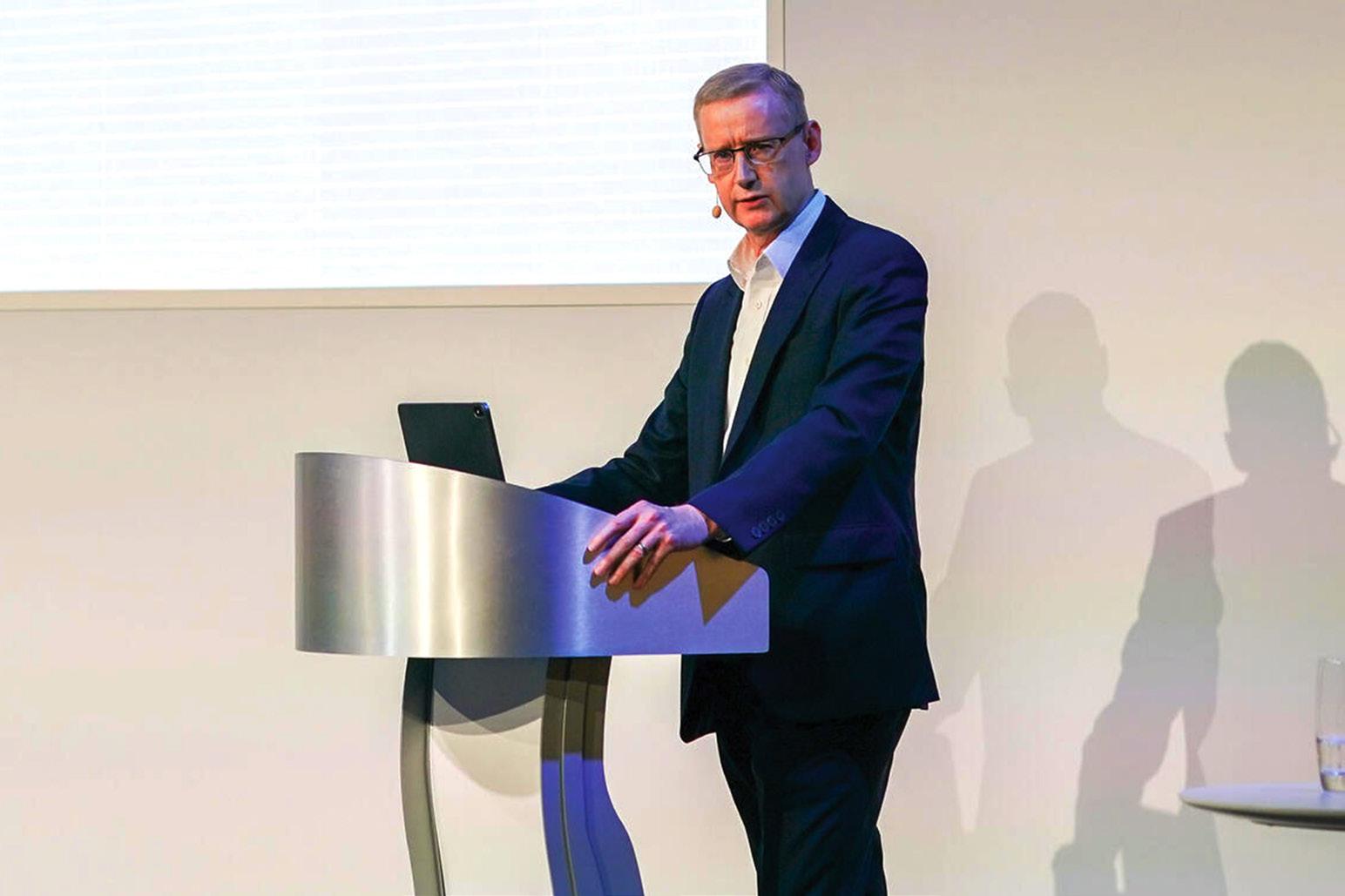
In a recent interview with Autocar, Mardell revealed that he had driven the new GT and said it was the "most fun I've had" in his time as JLR boss. "It was stunning in terms of its speed, its acceleration, its performance, but also how it delivered the power with a real sense of character," he said. "The chassis team are really excited about the possibilities of the vehicle.”
Speaking more generally about Jaguar's prospects as an all-electric luxury brand, Mardell said he was "certain we will have wait lists which are significant relative to
the volumes we aspire for with the first product”.
He continued: "In today’s market conditions, I don’t see anything which is going to concern me about the success of the new Jaguar in this new world at all, actually.”
Mardell leaves JLR in a position of far greater stability than that it was in when he took the top job, but the company still faces strong headwinds. .
Editor: Information for this story sourced from "AUTOCAR".
The new Jaguar EV is back out testing, this time its getting miles in at the Nürburgring as the engineering team charged with bringing the company’s all-electric car to market continue to define what Jaguar’s future products drive and feel like.
At around five metres in length, the four-door Type 00 (as it is for now known) saloon will form the basis for Jaguar’s reinvention as an all-electric brand, with a coupe-style SUV set to follow and, potentially, a two-door coupe if everything goes to plan. Not that this is a given considering the catastrophic fall in sales of premium electric vehicles.
The car was first spotted during cold weather systems testing in Sweden with Bosch, where the car’s drivetrain, braking, stability controls and everything else that works to keep it the right way up were being developed, tweaked, updated and recalibrated.
The latest images captured in and around the Nürburgring, show the four-door silhouette of Type 00 more clearly. And yes, that rear door opening does look suspiciously small and hint at suicide openings. Built on a totally new 800-volt electric architecture called JEA, the new family of electric Jaguars will have a claimed range of around 500 miles with a sizable battery
to provide it, circa 100 to 150kwh with today’s technology. The upshot of this is the Jaguar’s four-figure power output of around 1000bhp. Then again, don’t expect it to weigh much less than 2500kg. Scheduled to be revealed in production form in 2026 (with a near production ready vehicle set to shown later in 2025) the Type 00 will go on sale as Jaguar’s first all-new electric car in 2027. .
Editor: Information sourced from "EVO" and "Drive Australia".


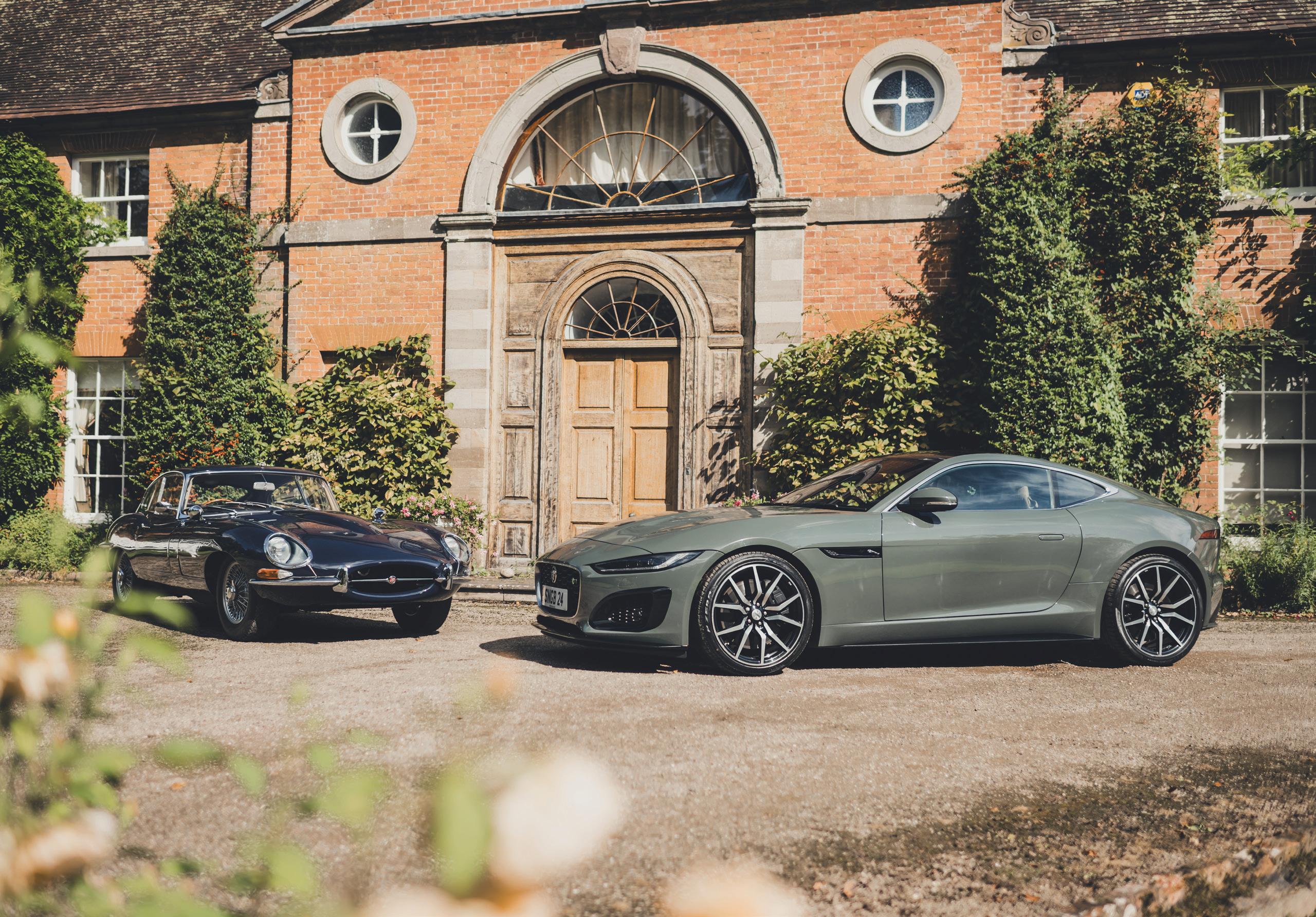
After a schedule of high-profile public appearances, the Type 00 finally arrived for its highly anticipated UK public debut. Jaguar dropped off two of its Type 00 concept cars at the Goodwood Festival of Speed, and on the first morning of the very first day of the show they were already pulling in the crowds.
We can see why. In the flesh it’s a properly imposing piece of design. With supremely clean surfaces and ultra matte paints it’s clearly a concept car. It won’t make production looking like this, but if the proportions are similar when it transforms into a four-door road car then it’ll be quite something.
Gone are traditional Jaguar cues like rear windscreens and chrome grilles. Instead, the Type 00 wears a sweeping "E-Type" fastback silhouette, exaggerated rear overhang, and an uninterrupted brass-finished tail that conceals integrated rear-view cameras.
Festival goers were treated to the concept’s striking 23-inch wheels, full-width “Strikethrough” lighting and a cabin design
hidden from view – designed to enhance mystique. So, we guess the only question that remains is what colour are you specking yours in - grey, blue or that pink from the initial launch images? Because we know you all loved the pink… .
Editor: Information sourced from "UK Top Gear" and "Which Car?"
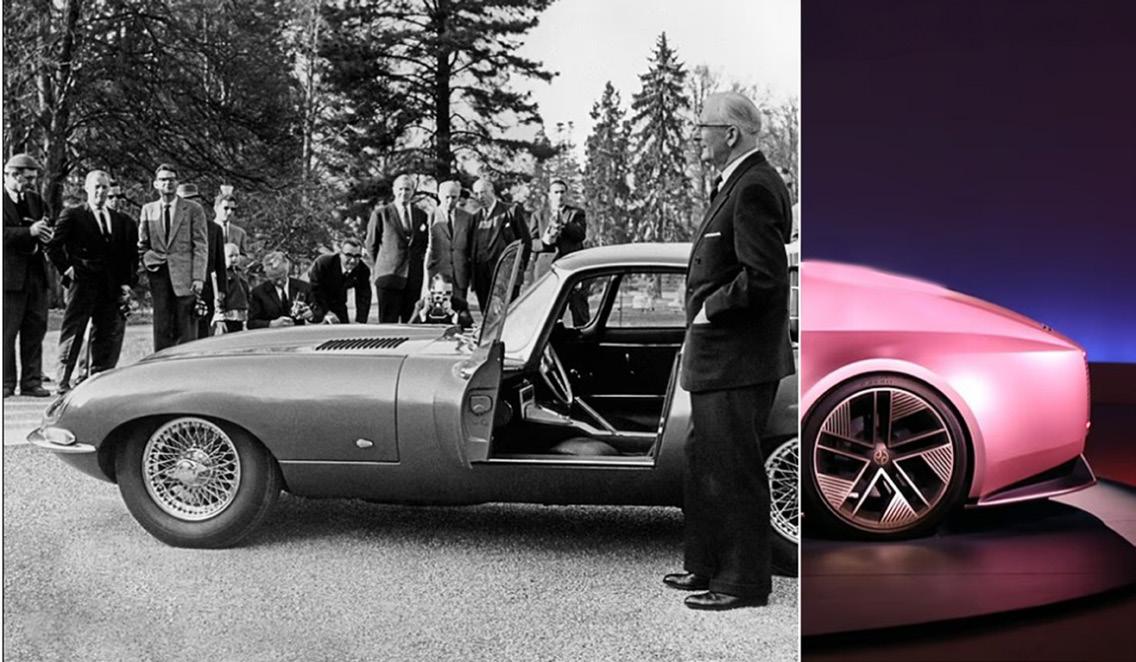
A new report says that JLR is pushing back the launch of the Range Rover EV and two Jaguar EVs. Previously, Land Rover had targeted a late-2024 release for its electric SUV, while Jaguar’s models were scheduled to enter production by June 2026.
Those dates are now being pushed back as the company is waiting to allow for “more testing and for demand to pick up,” says the Guardian. The revised timeline follows a temporary halt in exports to the United States.
According to sources, production of the first new Jaguar EV is now scheduled
to begin in August 2026. A second Jaguar model is unlikely to arrive before December 2027.
The delays are also understood to be linked to the fact that these will be JLR’s first fully electric models developed and built in-house. The company’s only previous EV, the Jaguar I-Pace, was produced under contract by Austrian firm Magna Steyr.
A company spokesperson told the news outlet that, “Our plans and vehicle architectures are flexible so we can adapt to different market and client demands and we will launch our new models at the
right time for our clients, our business and individual markets.”
What’s odd about that is that both brands need a shot in the arm sooner rather than later. As industry trends continue to develop, it doesn’t appear as though electric vehicles are suddenly going to shoot up in popularity anytime soon.
If Jaguar and Land Rover are waiting for the perfect time, it might not come for quite a while, but they are not alone. .
Editor: Information for this story sourced from "CarScoops", "Electrek" and "The Guardian".
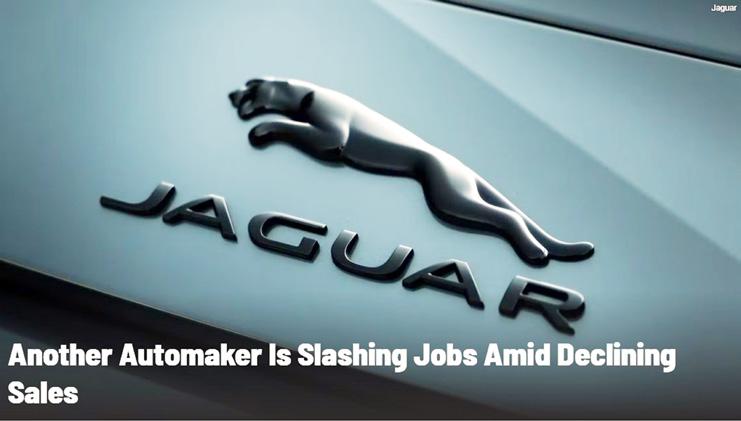
Just two months ago, JLR announced its highest profit in a decade for fiscal year 2025, along with its tenth consecutive quarterly profit. Now the automaker is making buyout offers to hundreds of its workforce. The British car company is looking to shed management as it
reported a 15.1% drop in sales last quarter. The drop in sales is at least partly blamed on 25% tariffs on vehicles imported into the US, one of Jaguar and Land Rover's largest markets. But the company has also said it was not unexpected.
At least some of the credit for declining sales is the lack of Jaguar models.
BBC News is reporting that up to 500 managers will be eliminated as part of a “voluntary redundancy scheme.”
JLR told Autocar that it expected no more than 500 staff to take the buyout offer, called voluntary redundancy in the UK. All will be managerial jobs, and all will be in the UK, the report said, though
it's not clear what sites or departments could be most affected. JLR has factories in Solihul and Halewood, builds engines in Wolverhampton, and has several other UK sites, including its headquarters in Gaydon.
The reduction is said to amount to less than 2% of their British workforce and the company described it as a “normal business practice.” That being said, things are far from normal at JLR as Jaguar is effectively waiting to be reborn. .
Editor: Information for this story sourced from "BBC News", "CarBuzz" and "AutoCar".


Attention to the 70 Members with outstanding logbooks
Firstly, a big thank you to all those members who attended one of the eleven (11) logbook events held during May and June. It was terrific to catch up with so many members who do not necessarily attend a meeting but came along and we were able to talk about their cars and updating them on club events and actions. A great success!
The SA Government has provided a generous Conditional Registration Scheme for members wanting to have their 25yr+ cars on a lower registration fee basis, the club now has around 500 logbooks.
IMPORTANTLY, these logbooks need to be stamped each and every year certifying that you are a financial club member. Any member using their unstamped logbook and
is caught during a random logbook check by SAPOL will be fined. Each member has been sent four emails over the past two months reminding them of this requirement.
To renew your logbook now, it will be necessary to post it with a stamped self-addressed envelope to: JDCSA, PO Box 6020, Halifax Street, SA 5000.
The club has an obligation to advise the SA Government of any members who have had a logbook and have not renewed their membership by 30th August. They will write to you advising that your Historic Registration may be cancelled. Further, if you are driving your car outside of the scheme, your insurance may be voided in an accident as you are not complying with the conditions of that insurance.
We encourage you to please renew as soon as is possible.
As always, should you like to discuss any aspect of these changes please contact Tim White on 0419809021. Or Email: logbookofficer@jdcsa.tidymail.co
JLR has announced it has become "the first in the industry" to use new tyres made from 70 per cent recycled materials.
The new tyres - called Pirelli P Zerohave been developed for JLR and will be manufactured using materials such as rice husk-derived silica, recycled steel, and FSC™ (Forest Stewardship Council™) certified natural rubber.
The new tyre will initially be available on selected 22-inch wheel options with the aim to roll out more sustainable tyres across all its luxury vehicles.
The tyre will feature the FSC™ marking along with the distinctive logo identifying Pirelli tyres made with biobased and recycled materials, as verified by the third-party certification body Bureau Veritas.
The development of the new P Zero put a significant challenge for Pirelli’s Research & Development department: combining Ultra-High Performance (UHP) with a high content of bio-based and recycled materials. In 2024, JLR became the first car manufacturer ever to equip its
vehicles with Pirelli tyres containing 100% FSC™-certified natural rubber. .
Editor: Information for this story sourced from "Pirelli, "Jaguar" and "Automotive World".
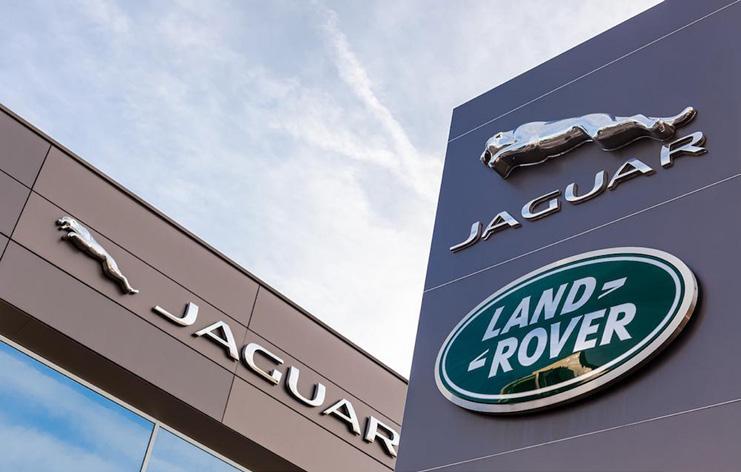
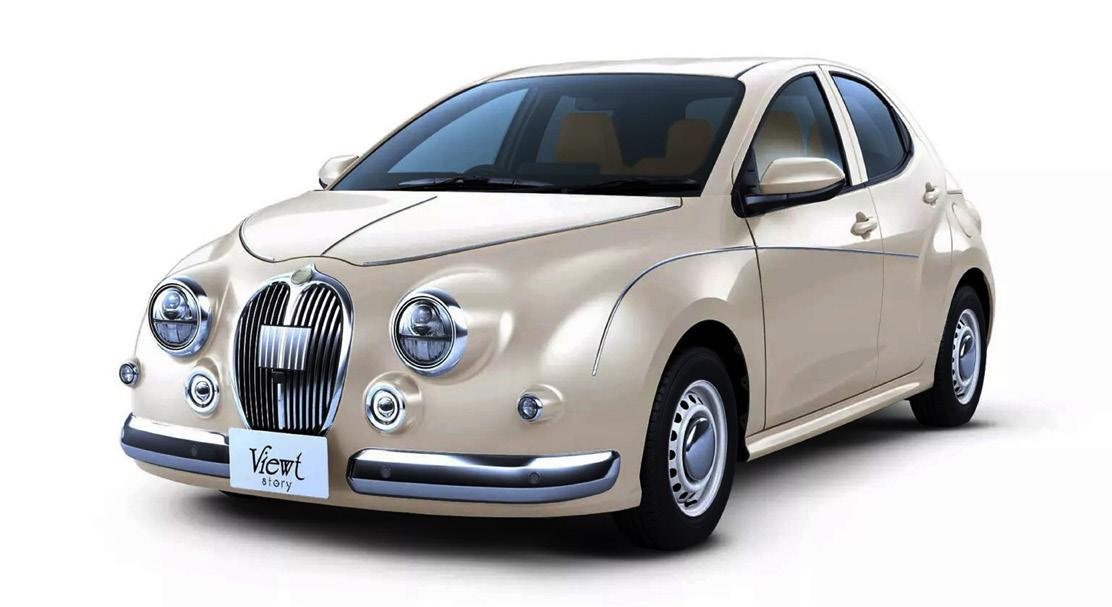
A Japanese custom car maker that has been making retroinspired mainstream Japanese cars based on a 1963 Jaguar Mark 2 for the past 30 years, has just released its new model.
In March 2023 Classic Marque printed an article on the “Viewt Story”, a car based on the Toyota Yaris (XP210) hatchback that
was introduced in February 2023. Now, the first special edition of this updated model is here and is being marketed for sale in the United States.
Named the Royal Edition, Mitsuoka is offering the car in three distinctive shades of Royal Green, Royal Red, and Royal White. For the most part, the design of the Royal Edition is the same as the regular Viewt, meaning it continues to resemble a Jaguar Mk2 from 1963, albeit with slightly enlarged proportions. Mitsuoka is taking orders for the Viewt Royal Edition until December 2025, though it hasn’t disclosed how many will be produced. Pricing starts at around US$26,300 and goes up to roughly US$35,100, depending on the configuration. Buyers can choose between a 1.0-litre or 1.5-litre petrol engine, or opt for a 1.5-litre hybrid.
Nothing suggests the car will be sold here in Australia. .
Editor: Information for this story sourced from "CarScoops".
Although 12 months late, Jaguar Classic and The Glenturret – Scotland’s oldest working distillery – are marking the 70th anniversary of the 1954 Jaguar D-Type with the latest edition in their whiskey collaboration series.
The newly released single malt is a celebration of the legendary Jaguar D-Type, a vehicle boasting advanced engineering and bold design when it was introduced seven decades ago. The limited run completes the trio of whiskeys paying tribute to iconic sports cars from Jaguar’s history, complementing the C-Type and E-Type editions.
The whiskey is a minimum of 35 years old and drawn from six casks. Three Pedro Ximenez sherry-seasoned European oak hogsheads impart rich fruit and warm spices, while two oloroso-seasoned American oak casks bring vanilla and cinnamon. Finally, an American oak refill hogshead delivers delicate light oak notes.
The Glenturret has released only 270, 700ml bottles of this limited-edition single malt. It is available now exclusively on www.theglenturret.com, RRP £2,200. (AU$4,500).
Editor: Information for this story sourced from Jaguar Media Centre.


Although there was no possibility of Jaguar Racing retaining its 2024 Team and Manufacturers titles due to poor results for the first 10 rounds, the Jaguar I-TYPE 7 simply dominated the remaining final 6 races of the season.
Mitch Evans won Round 13 in Berlin while Nick Cassidy won Round 11 in China, Round 14 in Berlin and rounds 15 and 16 in London. Cassidy secured second in the drivers' standings despite being outside the top ten at the midpoint of the season.
Jaguar finished the season in second place in the Teams Championship behind TAG Heuer Porsche Formula E Team.
Thanks to podium finishes by Envision Racing, which uses the Jaguar powertrain in its cars, Jaguar also finished second in the Manufacturers' Championship.
Berlin Round 13 (12 July)
◊ Mitch Evans took a superb win from pole position in Round 13 of the 2024/25 ABB FIA Formula E World Championship in Germany.
◊ Despite a late Safety Car wiping out his earlier advantage, the Kiwi held off Porsche’s Pascal Wehrlein in the closing stages to take victory at the Berlin E-Prix.
◊ The Jaguar TCS Racing #9's second win of the season means he now ties alongside Sebastien Buemi as holding the most wins in Formula E history (14 each), and takes Jaguar TCS Racing’s 50th Formula E podium in the process.
◊ Nick Cassidy recovered superbly from the back row of the grid and a 10-second ‘Stop and Go’ penalty to finish fifth.
Berlin Round 14 (13 July)
◊ Nick Cassidy took an extraordinary victory from 20th on the grid with Jaguar TCS Racing winning both races in Berlin.
◊ The Kiwi, who claimed an extra point for fastest lap, and also secured Jaguar TCS Racing’s 20th victory in Formula E – now second on the all-time list of team wins in the championship.
◊ Mitch Evans took a strong fifth place, narrowly missing out on a podium finish.
◊ Jaguar TCS Racing’s Nick Cassidy took a superb victory from fifth on the grid.
◊ At the team’s home event, the Kiwi claimed his third win in the last five races to move Jaguar TCS Racing up to third in the Teams’ World Championship.
◊ Nick’s second win in London was his tenth overall in Formula E as the Jaguar TCS Racing #37 moves up to third in the Drivers’ standings
◊ Although starting from a brilliant pole position, his second in three races, and leading for much of the race, Mitch Evans contact with another car caused him to spin, but he fought back to finish in P10.

◊ Nick Cassidy made it back-to-back home wins for Jaguar TCS Racing, ending his final race with the team on a high.
◊ A lights-to-flag win ensured the Jaguar TCS Racing #37 driver claimed his third win in succession, securing second in the Drivers’ World Championship.
◊ The British team rounded off the season in style taking its fourth win in a row and the runners-up spot in both the Teams’ and Manufacturers’ World Championships.
◊ Jaguar TCS Racing took its fourth home win and 22nd overall in Formula E to ensure outgoing Jaguar TCS Racing Team Principal James Barclay had a fitting send-off.
◊ Mitch Evans took second place on the road, but was classified fifth after a five-second time penalty was applied. Mitch’s points nevertheless helped the team secure the Championship runners-up spot.
The 2025–26 FIA Formula E is set to be the twelfth season of the FIA Formula E World Championship, with 18 races set to take place from December 2025 to August 2026 across 12 venues. .
Editor: Information for this story was sourced from Formulae E website and Jaguar Media.
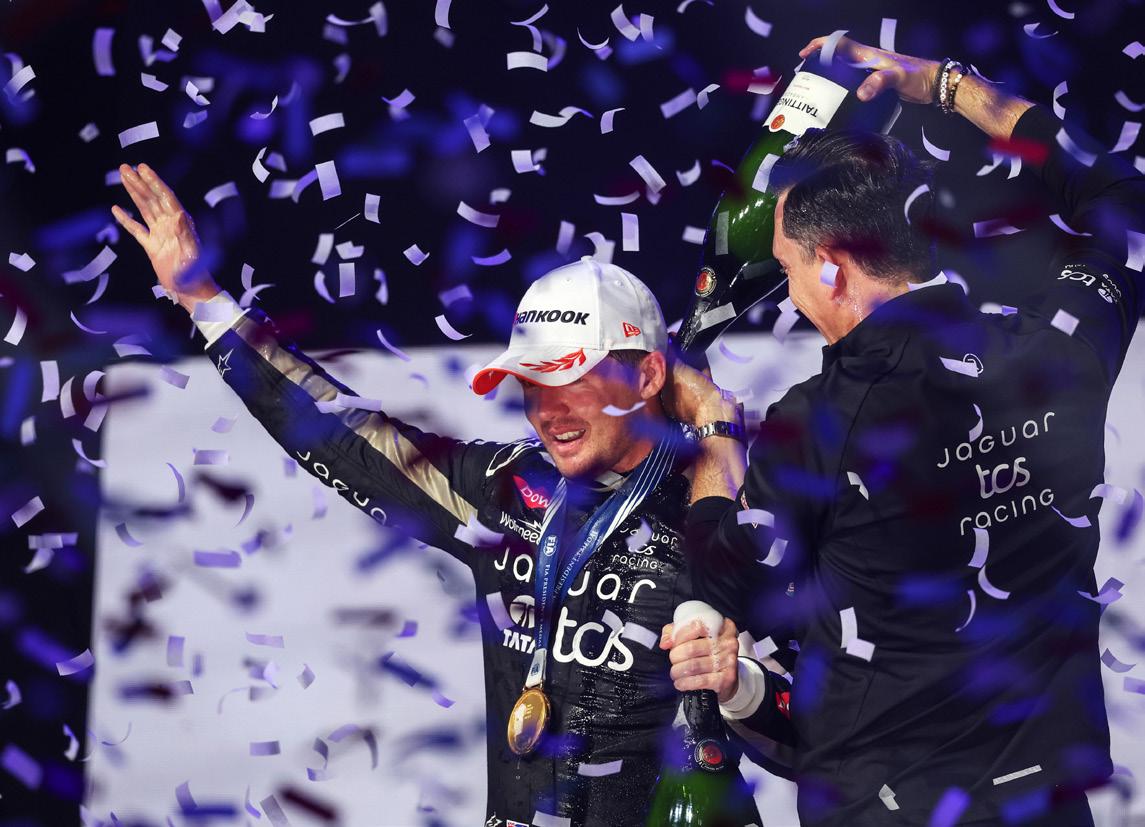


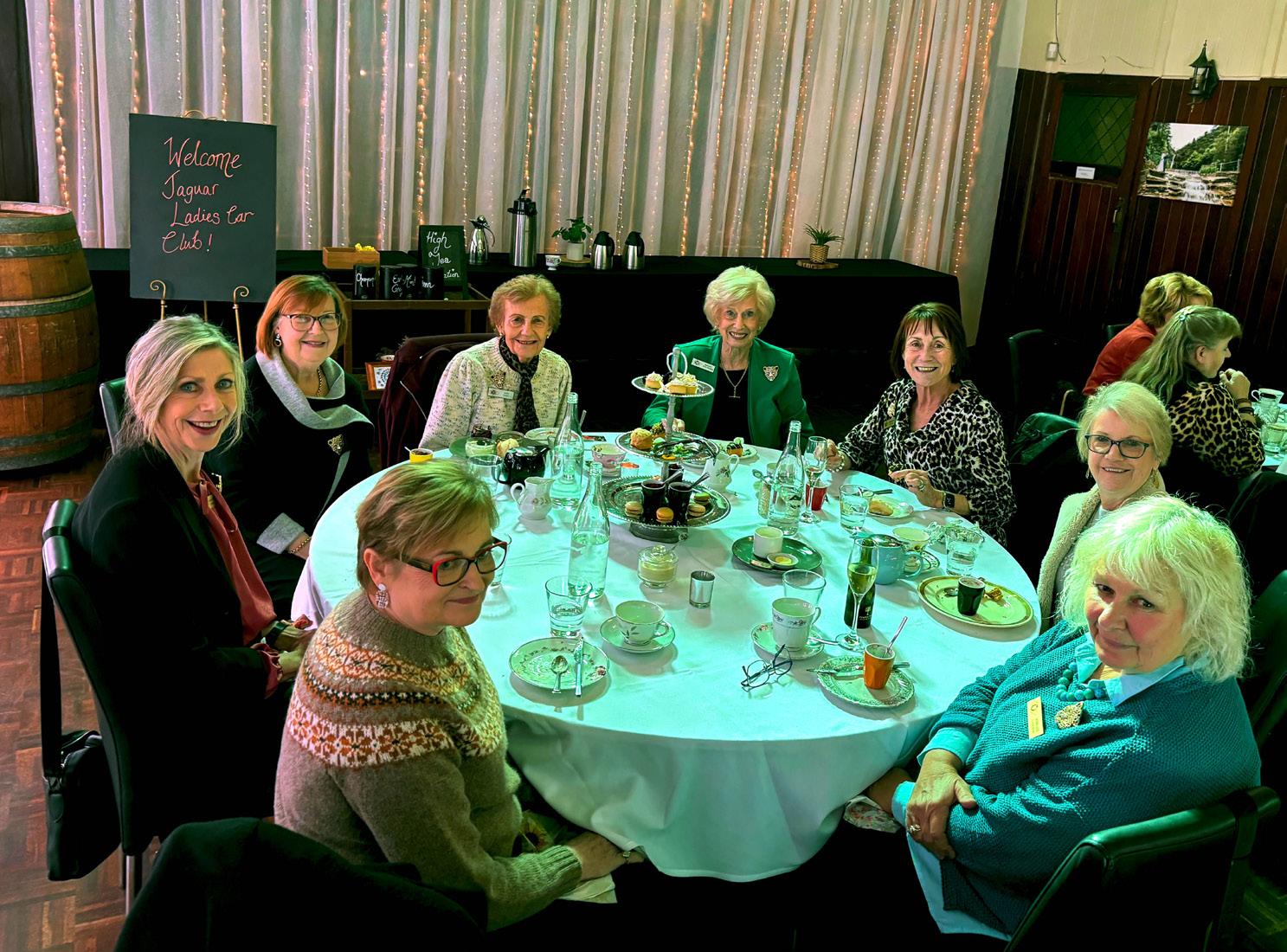

Twenty-nine ladies (including 6 widows) enjoyed a beautiful spread of tempting culinary delights for lunch at the beautiful Utopia Waterfall Gully Restaurant on Thursday 31st July 2025.
Unfortunately, 4 ladies were unable to come on the day due to sickness and a bereavement. This was our biggest attendance so far in the 3 ½ years the Register has been active.
The ladies are loving getting together with old Club members and meeting new ones. I am thrilled the Ladies Register is doing so well. Two new ladies were welcomed to the Register and presented with the Ladies Register Brooch, Toni Heartfield and Lusia Guthrie.
A 30-year certificate and badge was presented by Daphne Charman, Membership Secretary,. to Margaret Evans, who was unable to attend the presentation dinner. Congratulations Margaret.
I advised the ladies as Register Secretary my position becomes vacant on 2 September when the AGM takes place. I asked for volunteers, none were forthcoming and Heather Buck nominated me for the position again. All were in favour and I was honoured to accept.
Our next events are:
◊ Thursday 18th September – Co-hosting with the Multivalve register.
The ladies will dine at the Ovingham Hotel, North Adelaide and the gentlemen will dine at the Adelaide Oval with an optional tour of the Oval prior.
◊ Thursday 20th November – Lunch cruise at West Lakes.
Details will be published in coming weeks in Tidyhq.
Tricia Clarke Register Secretary
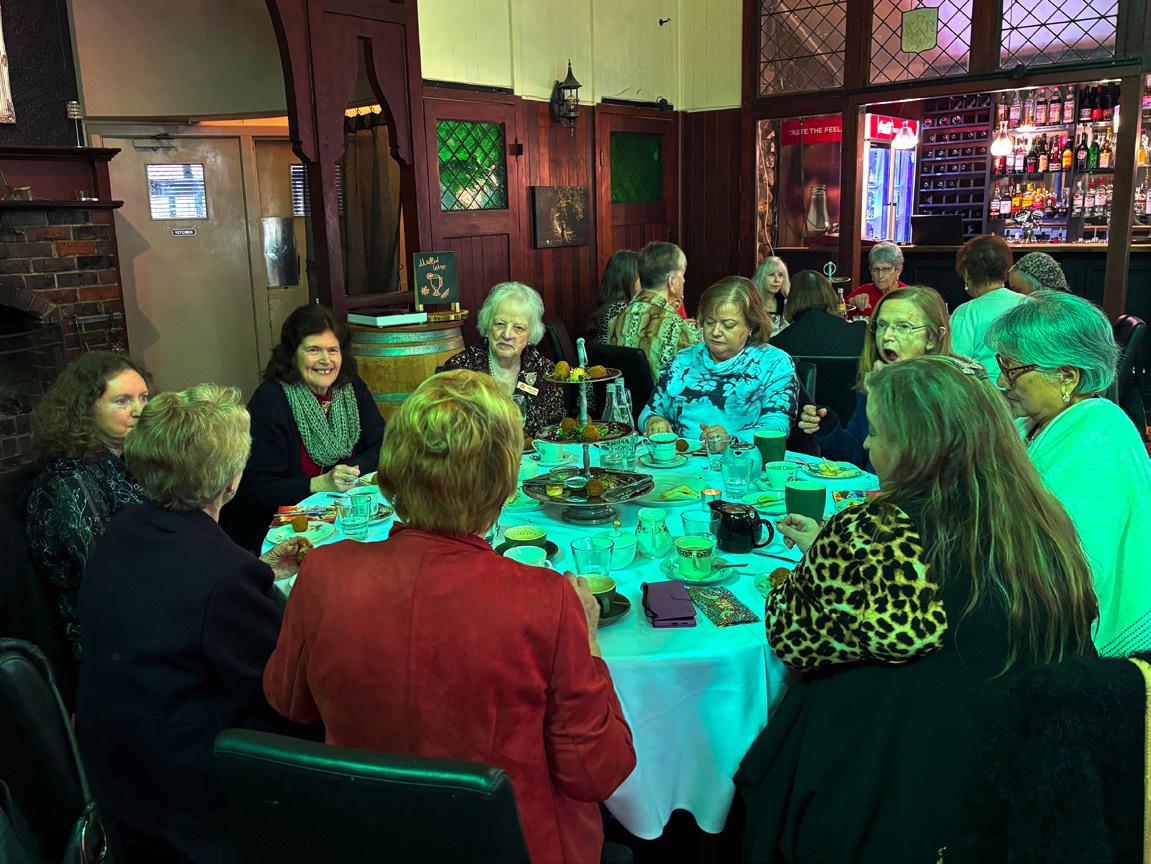
Wolf Blass Event Centre Morphettville What a lovely evening at this outstanding venue!
93 members attended in their finery and enjoyed the evening with old and new Club members.
MC was Peter Clarke, who did a stirling job. His repertoire of jokes and stories kept everyone laughing.
Entertainment from the very talented Kat Caton, provided music from the 60’s to the 80’s allowing a little gentle dancing for those who were inclined and able.
Awards were presented by our Club President Michael Pringle and assisted by Daphne Charman, Membership Secretary.
Details of awards presented are in the President’s Report.
Angela Rogers our illustrious Club photographer has produced some great pics of the night.
Many thanks to all those who contributed to the success of the night, especially my fellow committee members, Heather Buck and Daphne Charman.
Tricia Clarke Secretary Jaguar Ladies Social Register

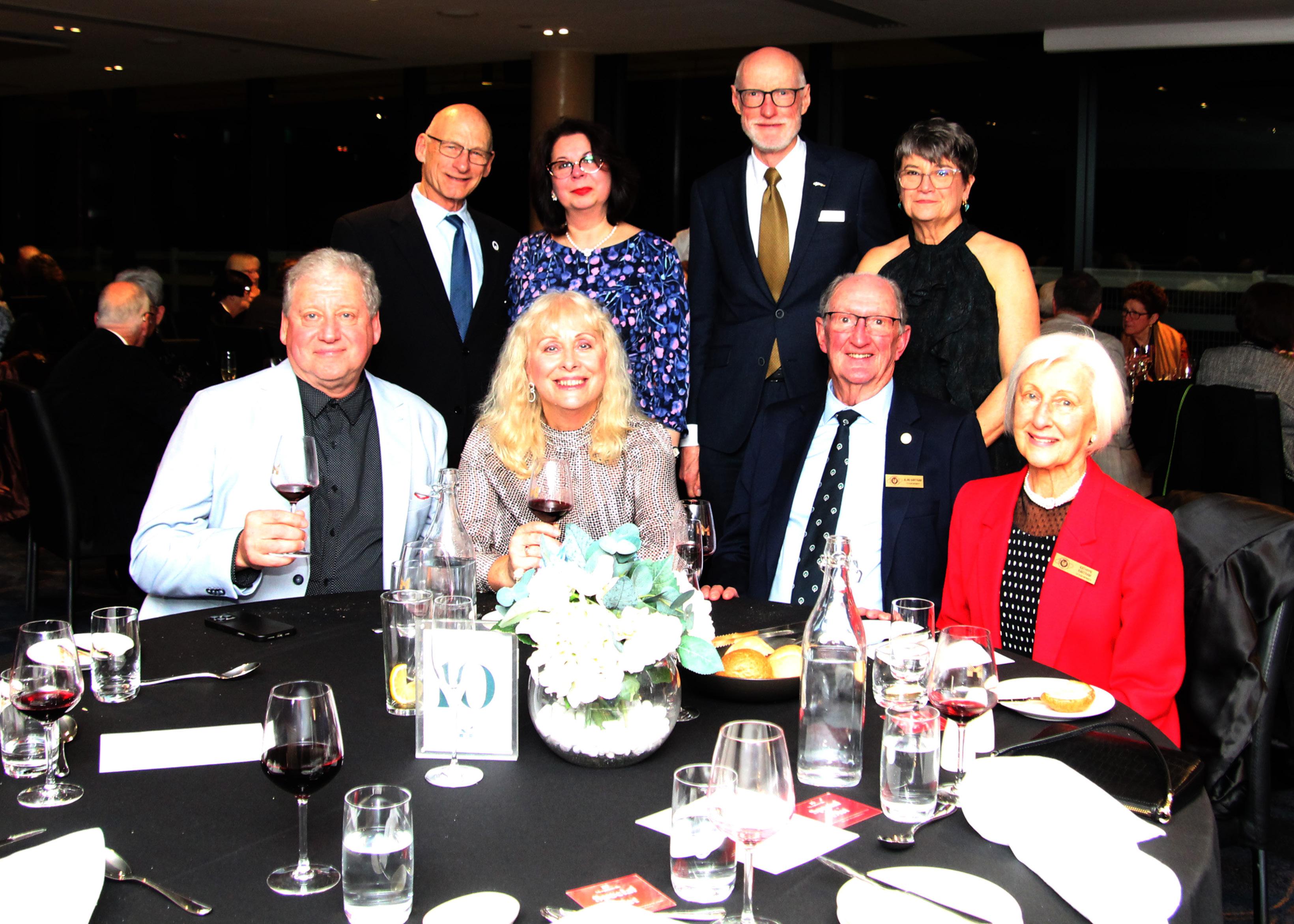



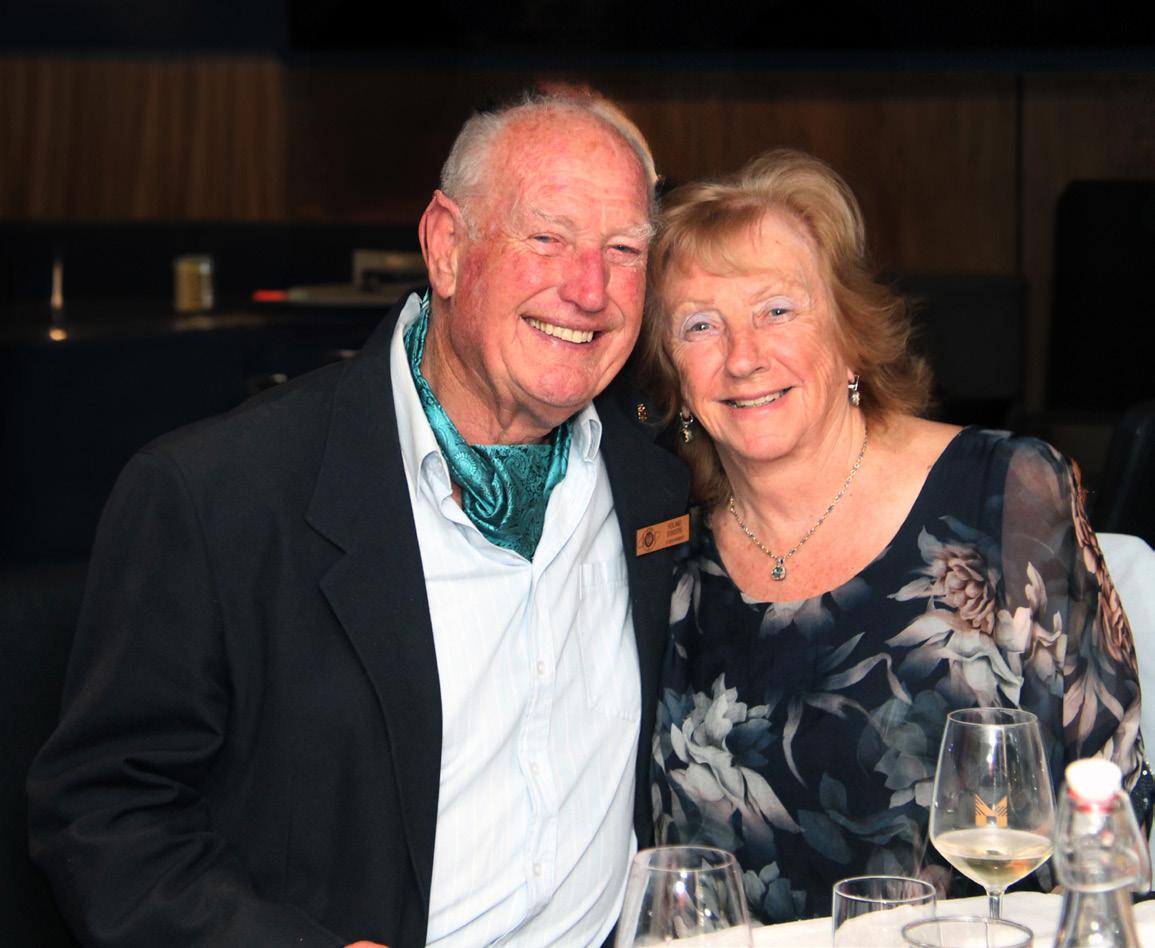
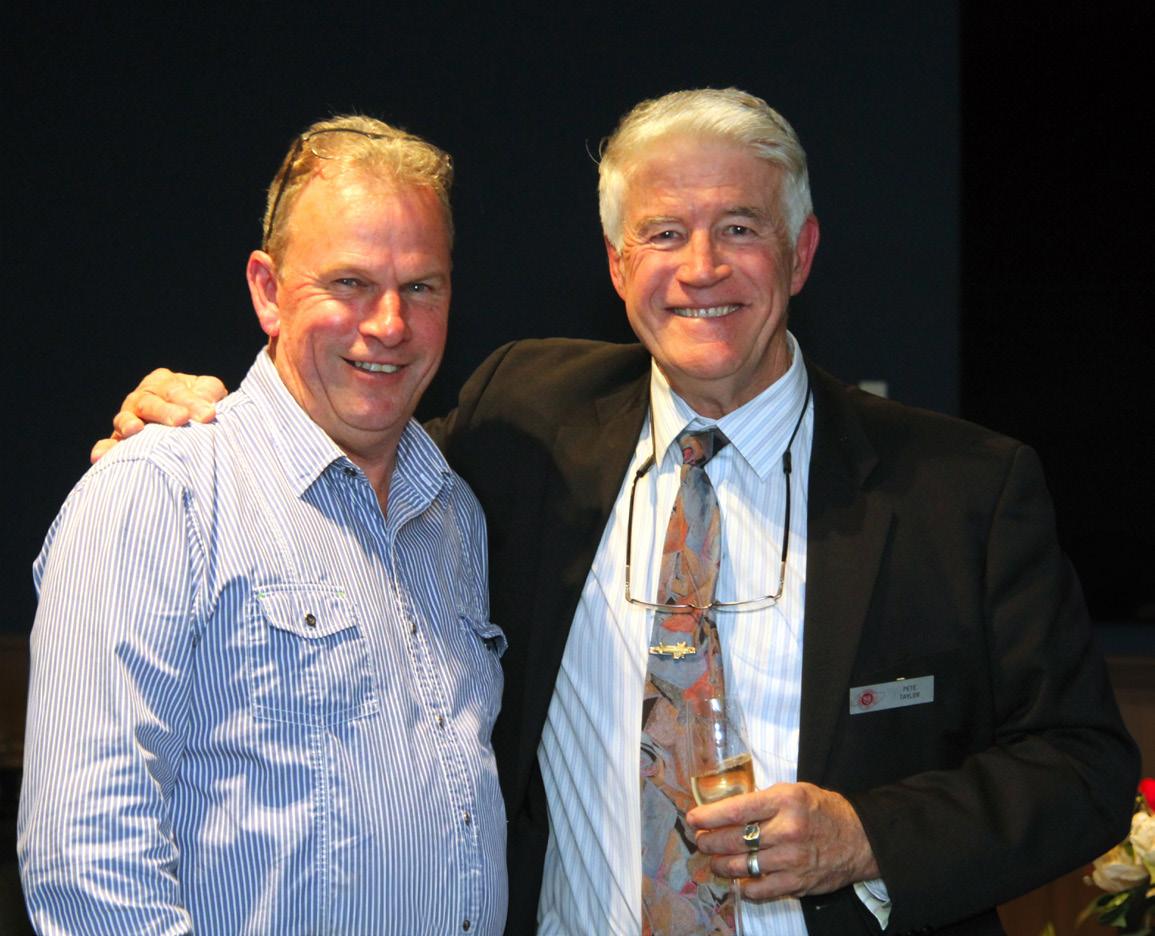


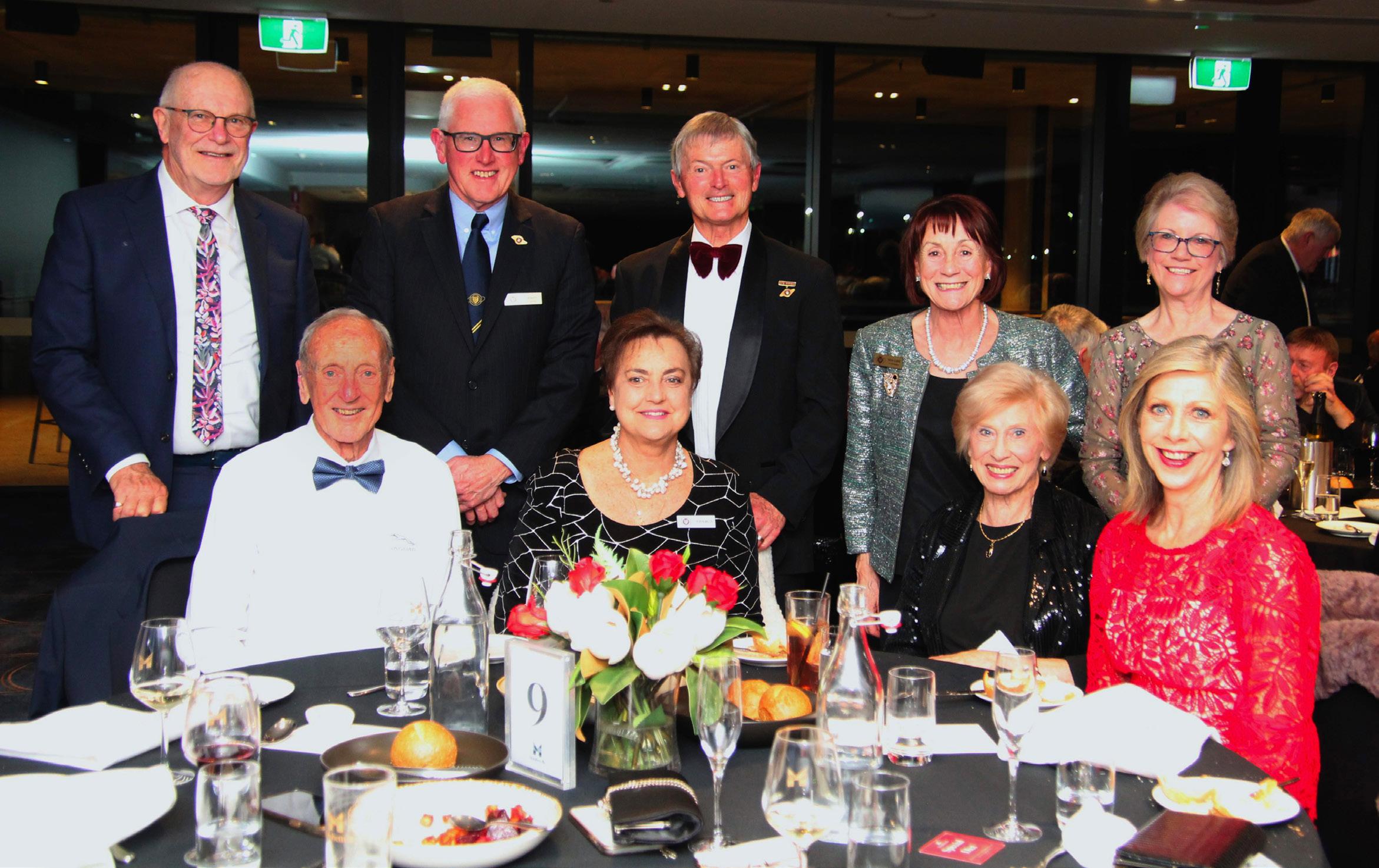









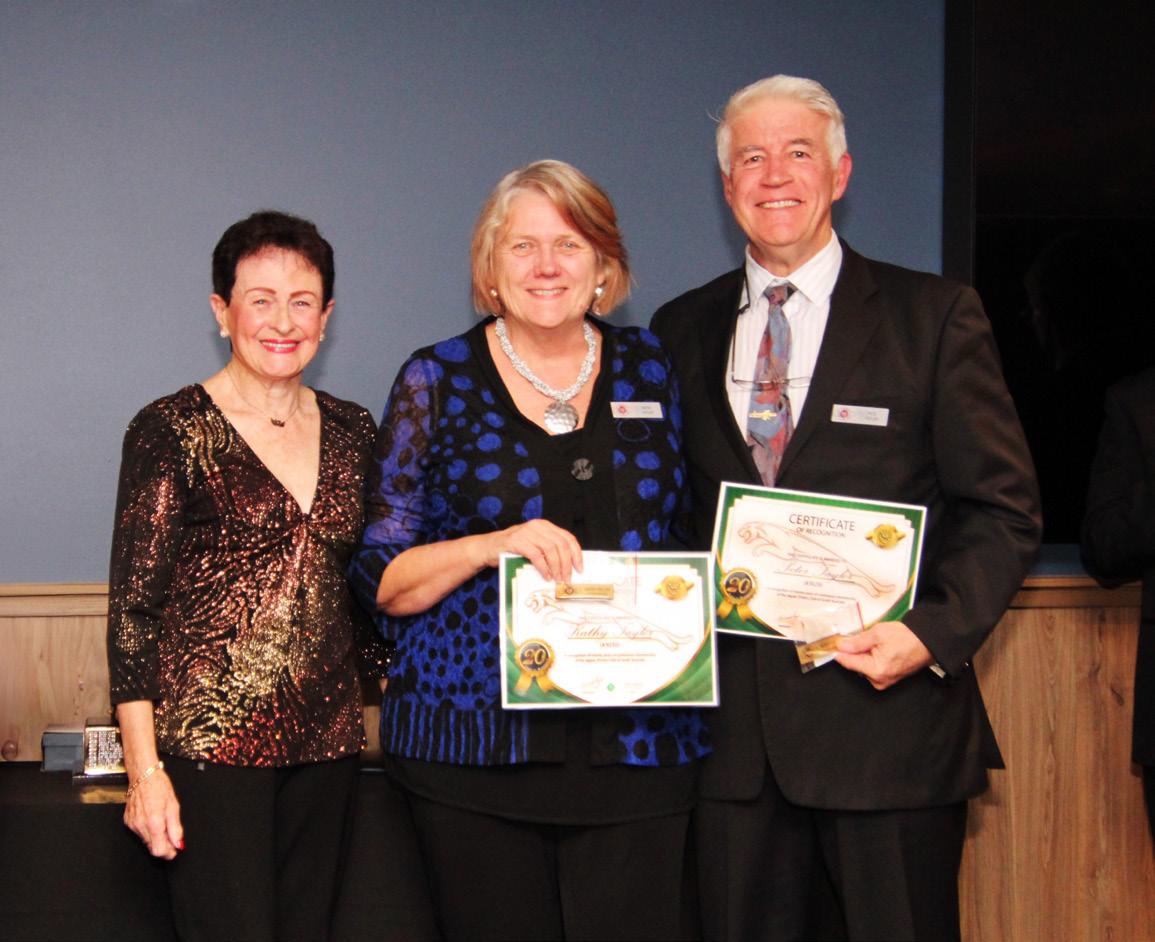
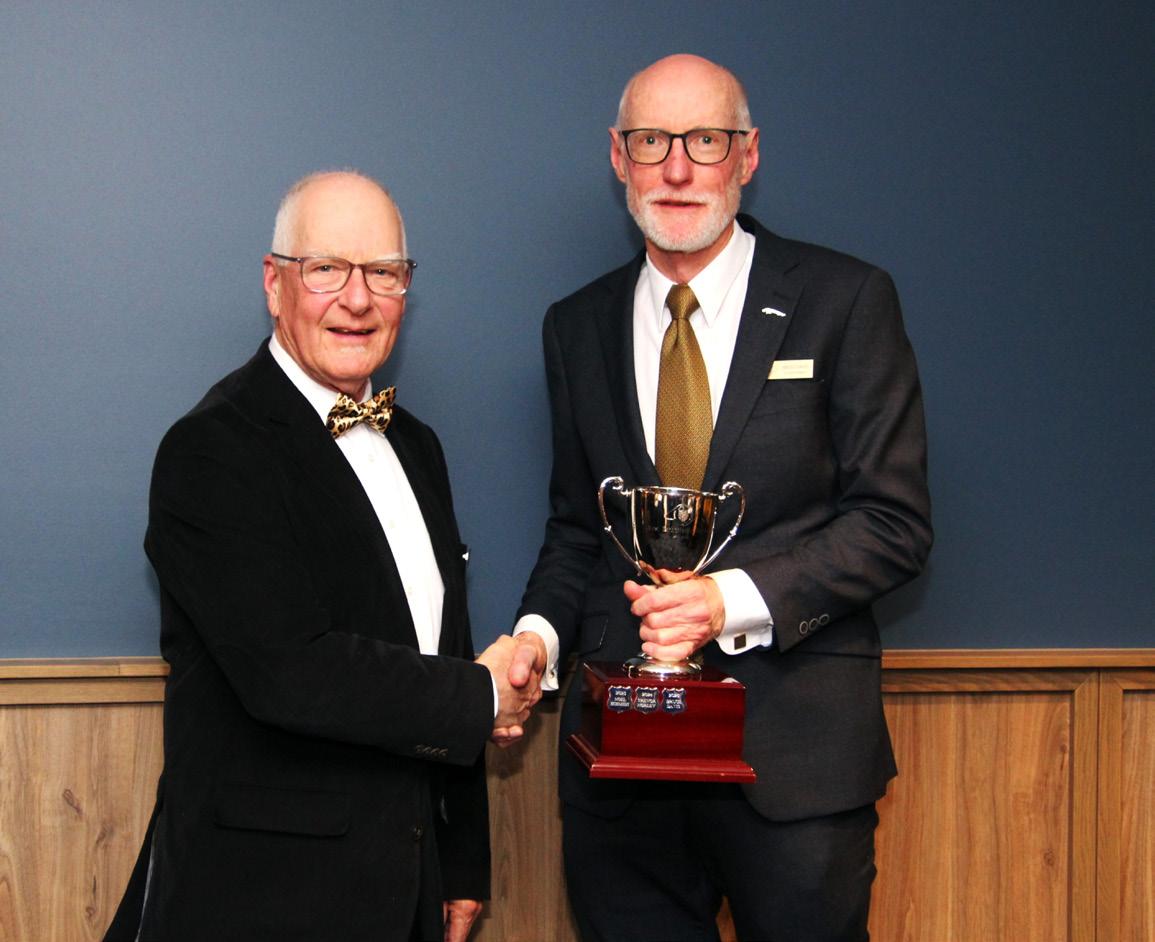

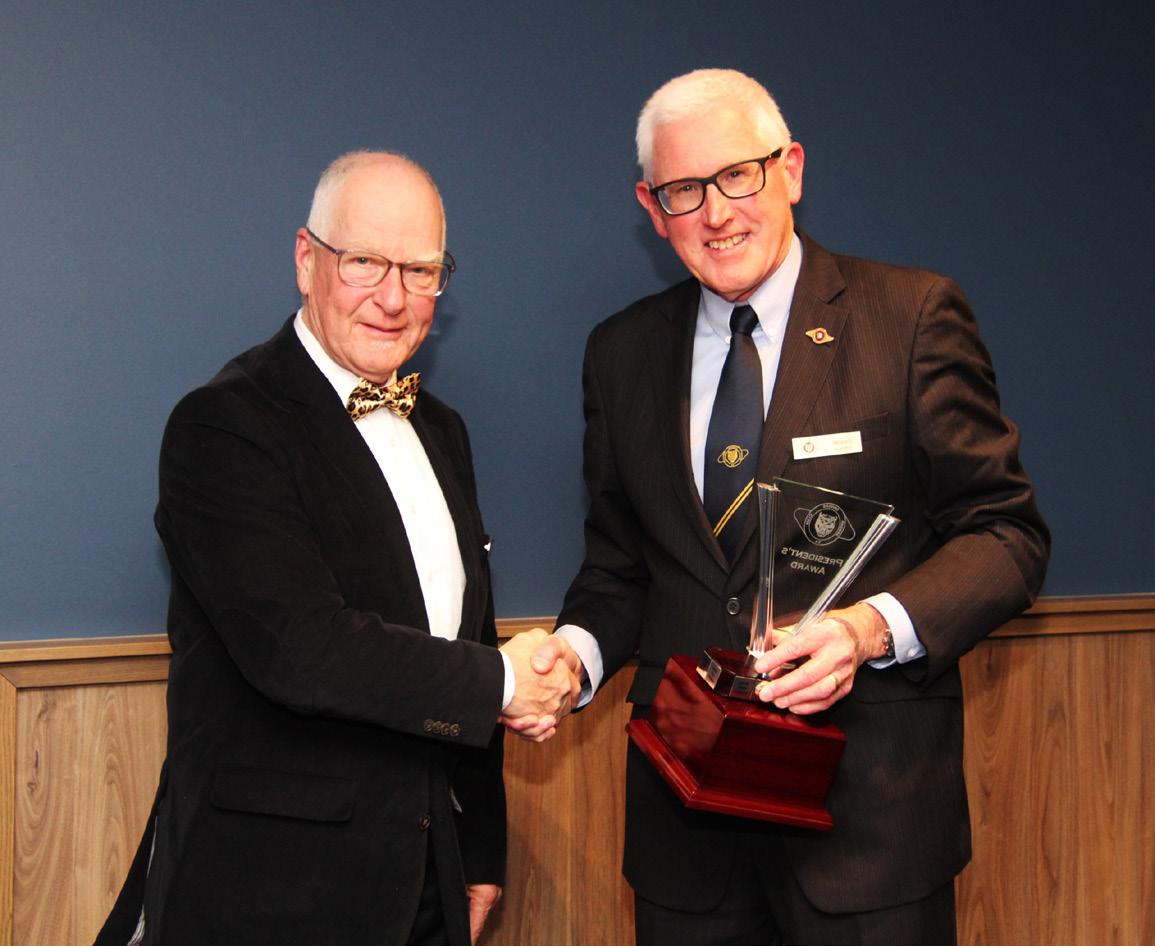
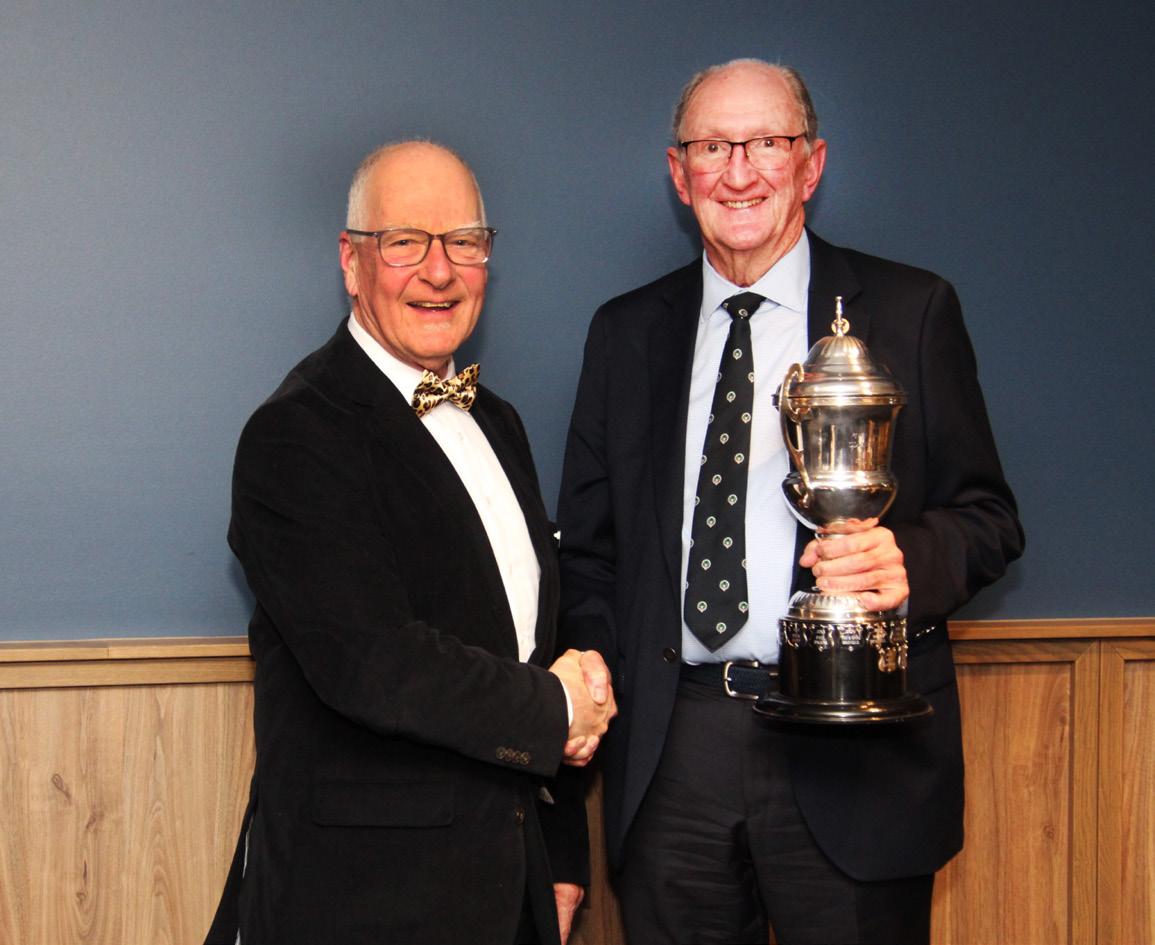




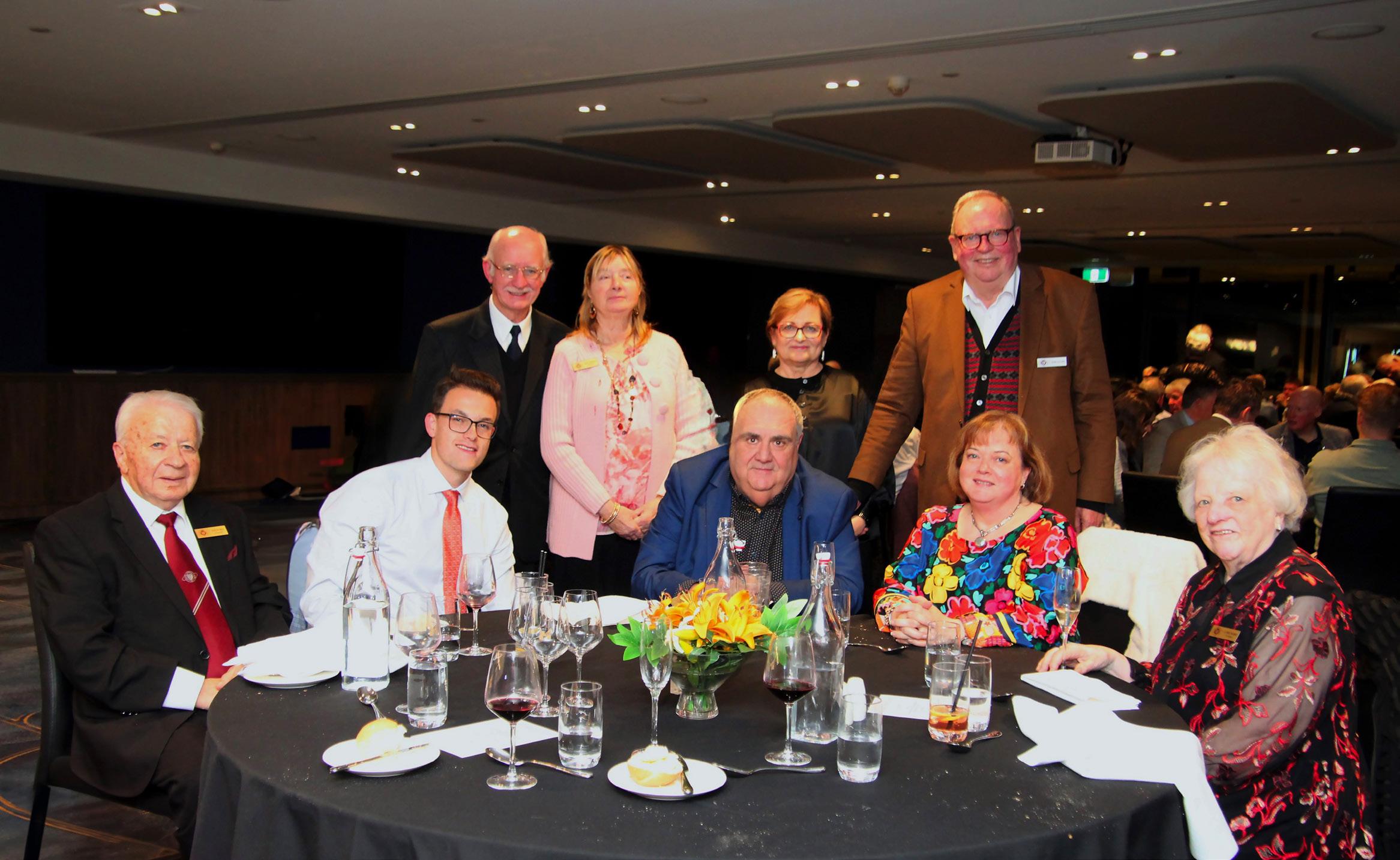


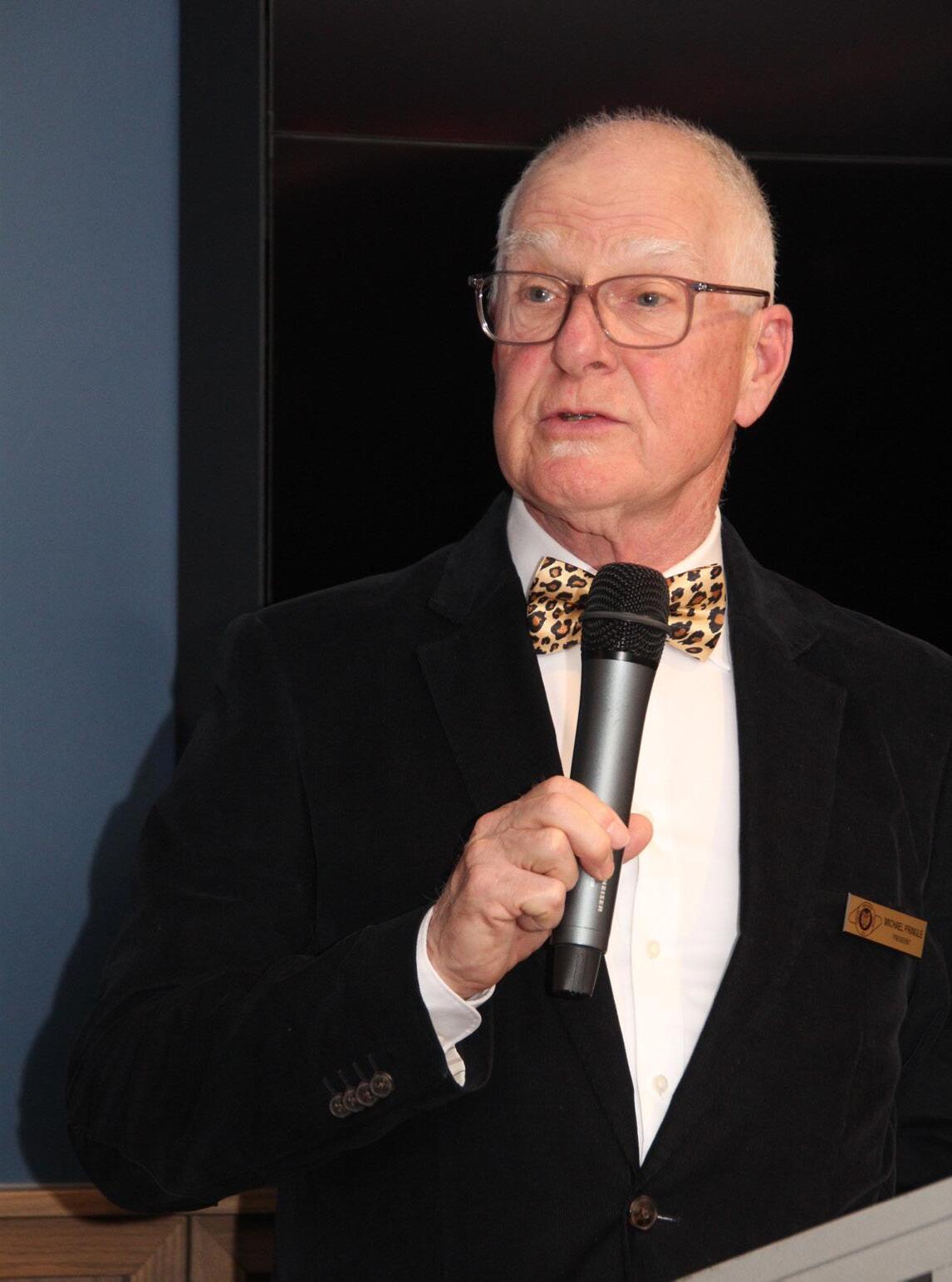
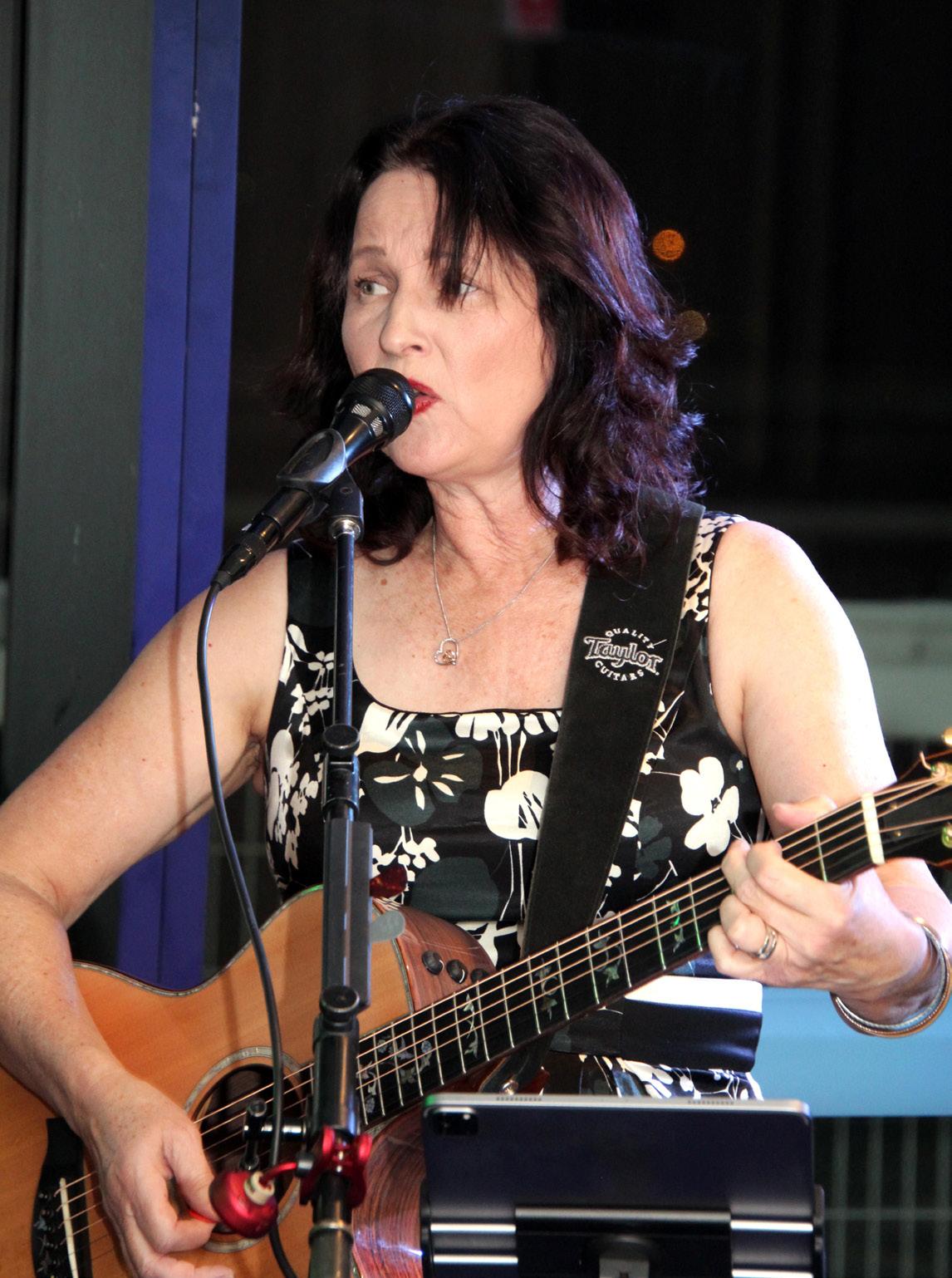

The Jaguar XJ90 was conceived as a new saloon to take over from the XJ40generation XJ6. It was designed to modernise the model line-up without alienating faithful customers.
Only in the last few years have images and photos of the XJ90 prototype come to light, and we can now see that the final car wouldn’t have looked a million miles away from what we ended up with, the X300/X308
After the XJ40, what became the X300 was not supposed to happen, as Jaguar's intention was to launch a brand new saloon (XJ90) with a new V8 engine. The XJ90 took shape very rapidly. In many ways the XJ90 was a facelifted XJ40 four-door saloon. Early styling
proposals revealed a promisingly sleeklooking car, with minimal fussiness, and a beautiful set of proportions.
As the programme progressed, some of the car’s more dramatic details were lost, and a more resolved – and familiar looking – design began to win through, ably led by Design Director Geoff Lawson and driven by Senior Design Manager Fergus Pollock.
The XJ90 was a little taller than the XJ40, but with a particularly handsome front end and profile, which had the essential Jaguar haunches aft of the rear doors.
As a result of the additional height, especially in the roofline, the car’s longer wheelbase was well disguised – good news for those who demanded a Jaguar to be elegant looking.
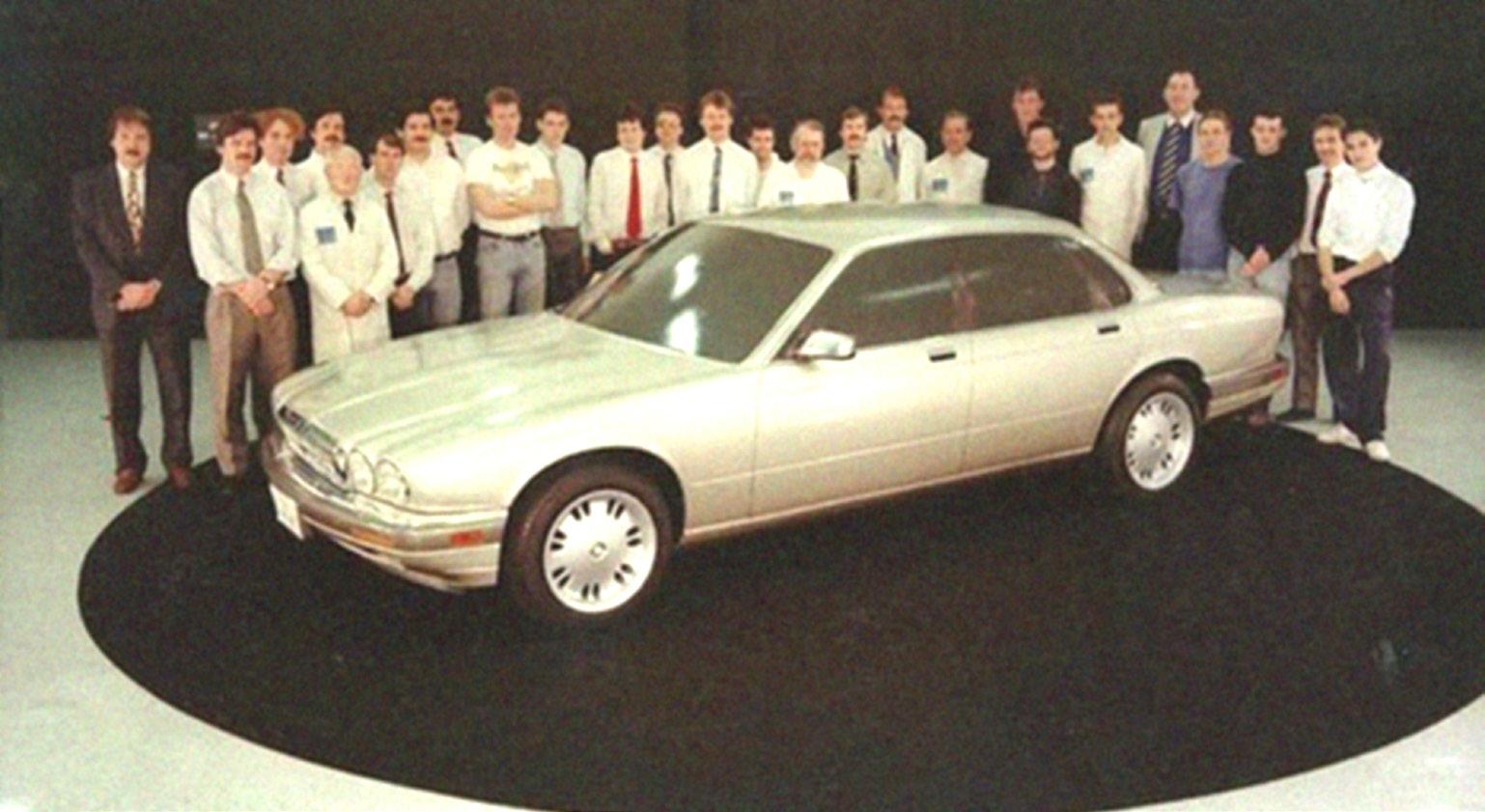
Former Jaguar Technical Director Jim Randle in a 2004 interview said that when the CEO Bill Hayden saw it, he said he was going to have an orgasm! But everything hit a stone wall in 1991. The V8 was not ready, and would not be so until after the X300's successor, the XJ X308. The car had to be stopped and after I left, they took the centre section of XJ40 and put the nose and tail of XJ90 on, and that became the car (X300/308) that then ran on.
Stuart Spencer, who was still there after Randle left, and worked on the programme, said that he created another XJ90 clay model, this time using the middle section of an XJ40. Management decided to close the shut lines on the doors etc, fit a new sliding roof cassette and make several other exterior panel changes – we may as well have gone with XJ90. Geoff and Fergus were very annoyed.
Although the Jaguar XJ90 ended up hitting the cutting-room floor, much of it ended up living on in the X300/ X308-generation Jaguar XJ, launched in 1994, and it could be argued that not building it was money well saved, given how successful the X300/X308 became, and how it was developed so successfully during its production run.
In many ways, the XJ90 previewed the X350-generation Jaguar XJ, which appeared in 2003.
Editor: Information for this article was sourced from AROnline and other sources.
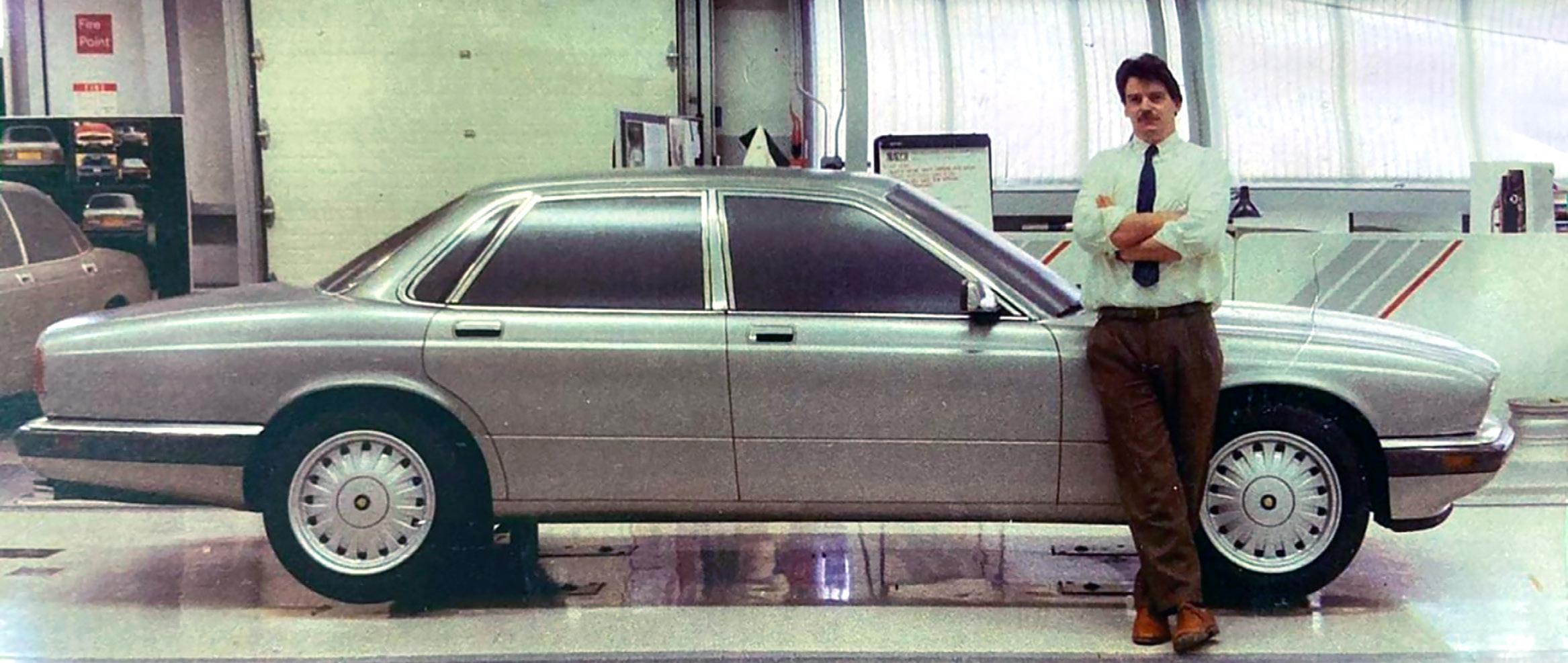
Although only produced for a few years, the XJ X300 has since become one of the most respected cars in Jaguar’s history. This sleek limousine was launched in October 1994 at the Paris Motor Show and released as a 1995 model year. The last X300 was built on July 2nd 1997 with over 90,000 built.
Although the XJ40 was technically advanced, it never aroused the same emotions as the previous three generations of the XJ saloon. What the company needed was a car that would appeal to both the traditional Jaguar buyer, many of whom had been alienated by the XJ40, while still appealing to the younger, more sporting driver. The X300 did all this and more, achieving that rare feat of a facelift proving more cohesive and elegant than the original design. With good proportions, proven underpinnings and near bulletproof engines, the basic idea was stunningly simple; re-skin the XJ40
in the style similar to that of the Series 3 XJ6, refine the powertrain even further and, for the younger market, provide a sporting variant with real performance. In practice a huge amount of work was needed to get the detailing right and ensure that the new car developed an identity and character of its own rather than becoming a mere caricature of the past.
Below the curvaceous new lines lay a largely unmodified late XJ40 body structure. The biggest changes were at the front and rear to accept the new lamp housings. One small but important difference is the smooth transition from the rear pillar to the top of the rear wing (instead of the awkward plastic trim piece needed on the XJ40 – a clear example of the advances in manufacturing processes between 1986 and 1994). Other new features were the use of colour matched oval door handles in place of the earlier square edged chrome type. The door mirrors too were more flowing, with painted or chrome covers according to model, while the leak prone recess
between the rear lamps for the number plates was replaced with a shallow depression in the boot lid and a much simpler plinth. The roof, door structures, floorpan, sills and glass, all expensive to redesign remain essentially unchanged from the XJ40.
The mostly flat bonnet of the XJ40 was replaced with a fluted, curvaceous design that accentuated the four separate round headlamps. Rear wings were reshaped to accommodate the new wrap-around rear light clusters. Also, the separate black-rubber bumper bar of the XJ40 is gone and replaced with a fully integrated body-coloured bumper.
The Jaguar “leaper” hood mascot was installed only on cars for non-European markets.
Both the 3.2 and 4.0 AJ6 engines used in the XJ40 were substantially revised for the XJ X300 saloon. Designated the “AJ16”, both featuring a revised
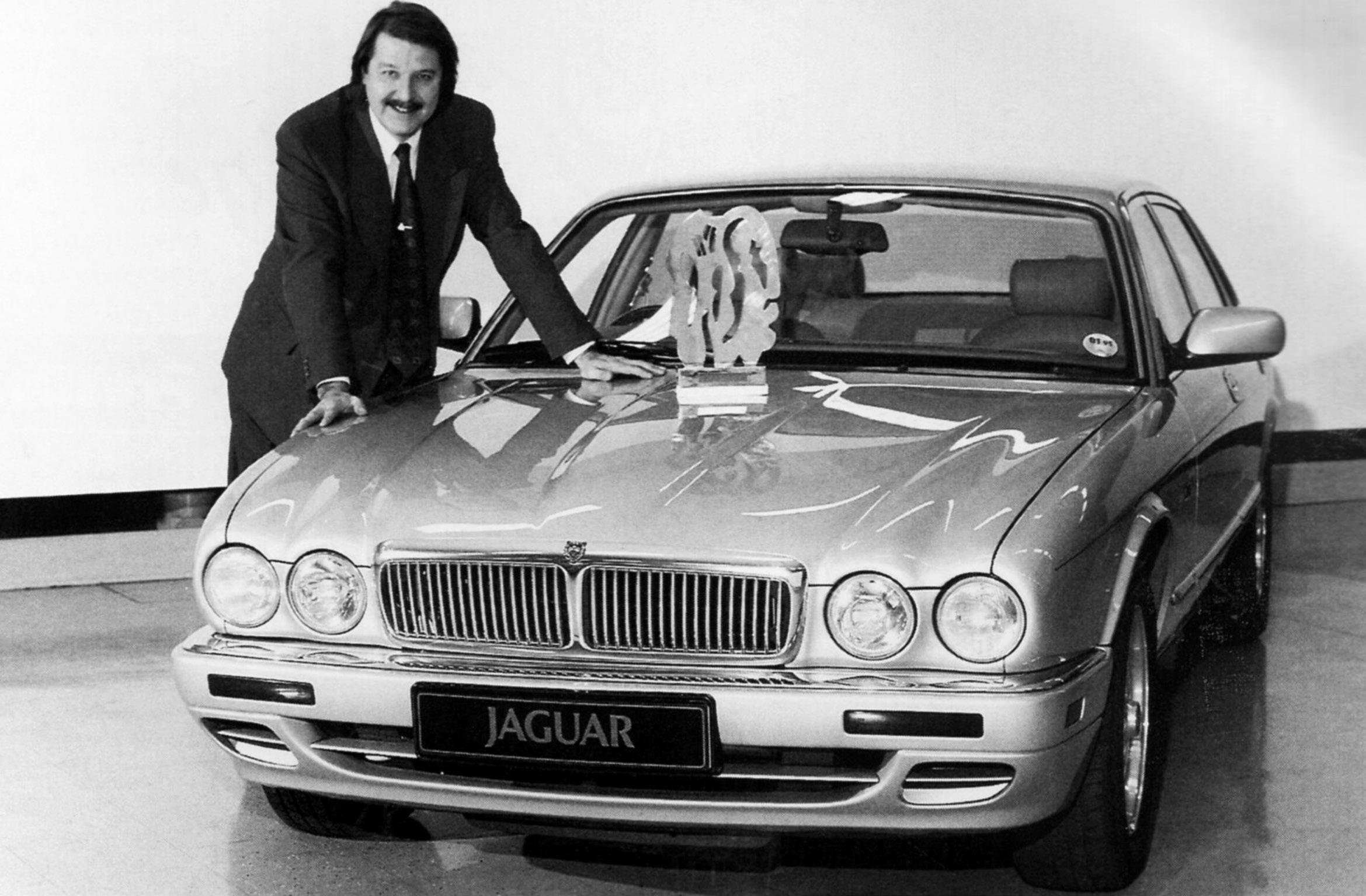
fuel injection system, coil-on-plug distributorless ignition, new engine management systems, revised piston design (that eliminated some vibration) and an almost completely redesigned head featuring a stiffer casting, thinner, lighter valves, new camshafts and a lightweight magnesium cam cover. The engine was overall more efficient and quieter together with a with a rise in power and torque.
Although the more powerful 4.0 litre engine produced 250bhp, the 3.2 litre was no slouch with a credible 220bhp, ensuring a top speed of around 225kmh (140mph).
The big news however was the Eaton supercharged 4.0-litre engine fitted to the XJR, now a mainstream model and with the emphasis firmly on performance rather than classic luxury. The XJR boasted enough performance to eclipse even the mighty V12. The 4.0 litre XJR was tuned more for low down torque than outright power but its 6.6 second 0-60 acceleration time was still only one tenth of a second behind the hand built TWR XJR-S of only a few years before.
The AJ16 engines have proved overtime to be almost bullet proof and easily handle the extra load incurred by the supercharger. With proper maintenance, they easily run 400 to 500,000 km.

The V12 cars did continue though for those customers who preferred near silent acceleration to the turbine like whine of a supercharger and could afford the increased running costs.
The V12 engine was also updated with a revised cylinder head and distributorless electronic engine management system. The top aluminium cover in the engine’s valley was redesigned to house two packs of three coils each, with each coil having
two high-tension terminals for a total of twelve. These coil-packs were driven by two Denso ignition modules. The crankshaft in the V12 was switched from a forging to a chill casting.
A visibly significant chromed pipe connecting the left and the right banks of the V12 in the XJ40 platform (intended to vent and route the crankcase blow-by gas to the intake plenum) was changed to an almost invisible design at the top centre of the engine underneath a plastic cover that also hides fuel rails and coil-packs.
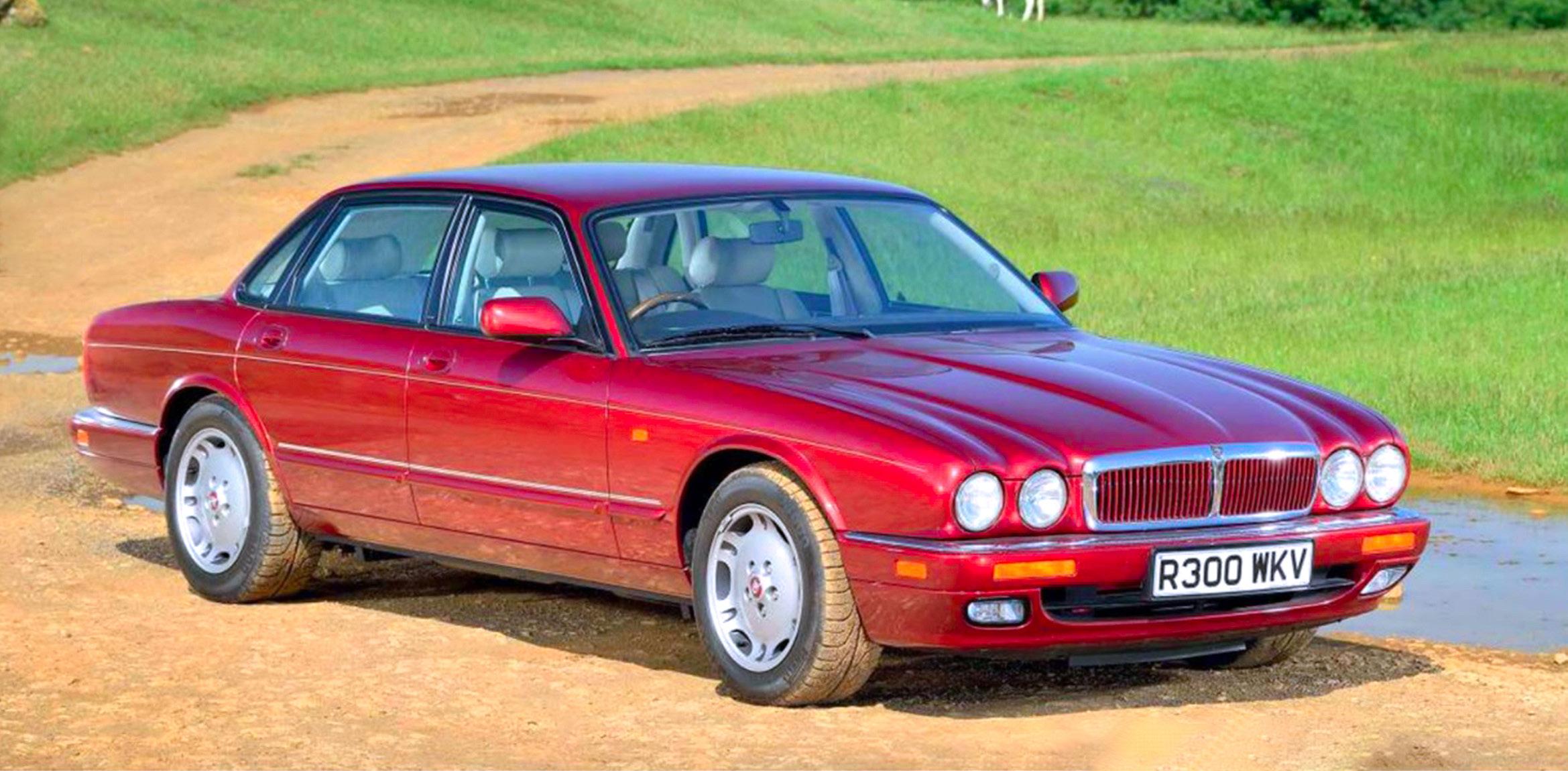
The six-cylinder X300 cars used either a ZF four-speed automatic gearbox (4HP-22 on the 3.2 L and 4HP-24 on the 4.0 L), or a Getrag 290 five-speed manual. The 4HP22 automatic is mechanically controlled while the 4HP-24 is electronically controlled, allowing 4.0-litre models to offer ‘normal’ and ‘sport’ modes on a switch by the gear lever.
All V12-equipped cars were built with the GM 4L80-E automatic.
Although the Getrag manual gearbox was standard on the supercharged sixcylinder, almost all XJRs were built with the optional GM 4L80-E four-speed automatic transmission.
Suspension and Brakes.
Underneath, the suspension layout remained basically unchanged, given that the new cast iron rear wishbones were introduced on the last XJ40’s.
Self-levelling rear suspension was no longer available, but there were new bespoke Bilstein dampers for the sporting models. Brakes reverted to vacuum boosting, and while the calipers remained ATE, the rear discs became ventilated with larger discs fitted to the front of V12 and supercharged cars.

The 6.0L V12 engine was updated for the X300 and fitted with distributorless electronic engine management systems. Between 1971-1997 the V12 engine bay became progressively ‘tidier’.
A new traction control system, fitted to the XJR and V12 cars used the ABS system to brake a slipping wheel while an electric motor simultaneously pulled back on the accelerator cable to reduce throttle.
A good deal of late XJ40 structure remained, with similar seats, only slightly modified door trims and standardisation of the Daimler dash casing with its deeper wood panelling. The seats were updated to have a more rounded profile, wood trim was updated with bevelled edges, and the steering wheel was redesigned.
The centre console was however completely redesigned to house the digital controls for the new Nippondenso climate control system, while, for trip computer operation, the keypad alongside the steering wheel disappeared in favour of a much simpler push button on the end of the indicator stalk.
The X300 was the first Jaguar saloon to include an industry standard OBD2 (on board diagnostics) connector beneath the dashboard, a full six years before they became mandatory.

While in its later years a stretched XJ40 had become available to special order, for the X300 the longer wheelbase became a regular option in mid-1995, with the cars built on the main production line and available with every engine except the supercharged 4.0 litre, with many 3.2 litre LWBs built for the chauffeur trade.
The LWB added an extra 6 inches (150 mm) for rear seat occupants and an extra inch (25mm) of headroom. There were two X330 variants, one with five seats and one with four, which featured a raised centre console between the two adjustable rear seats.
Standard safety equipment for the XJ range included dual front airbags and ABS, while the XJR model was further equipped with traction control.
From February 1997, the XJ range was fitted with a security system which included an engine immobiliser, remote control alarm, glass breaking and odometer sensor, battery tamper protection and security shielded locks. Inside, the rear seat bench was restyled and the centre rear seat gained a threepoint, inertia reel seatbelt.

The base model in the range was the XJ6, which featured the 3.2 litre version of the AJ16 with steel wheels and hub caps.
The model came with electric window, mirrors and antennas, glass heating, windshield and front headlights, audio system with eight speakers, central lock, remote control of the boot and fuel lid, driver’s seat with electrical adjustments, velour salon (with leather sidewalls seats), finished with wood.
Alloy wheels, leather upholstery and air conditioning were all extra-cost options. Later, the 4.0 L version of the AJ16 was offered in the XJ6.
Externally, the XJ6 can be distinguished by a combination of chrome edging windows and black racks.
◊
The Sovereign model also used the AJ16 engine (in either capacity) and came equipped with luxury features as per the XJ6 - plus alloy wheels, cruise control, Nippon Denso air conditioning,
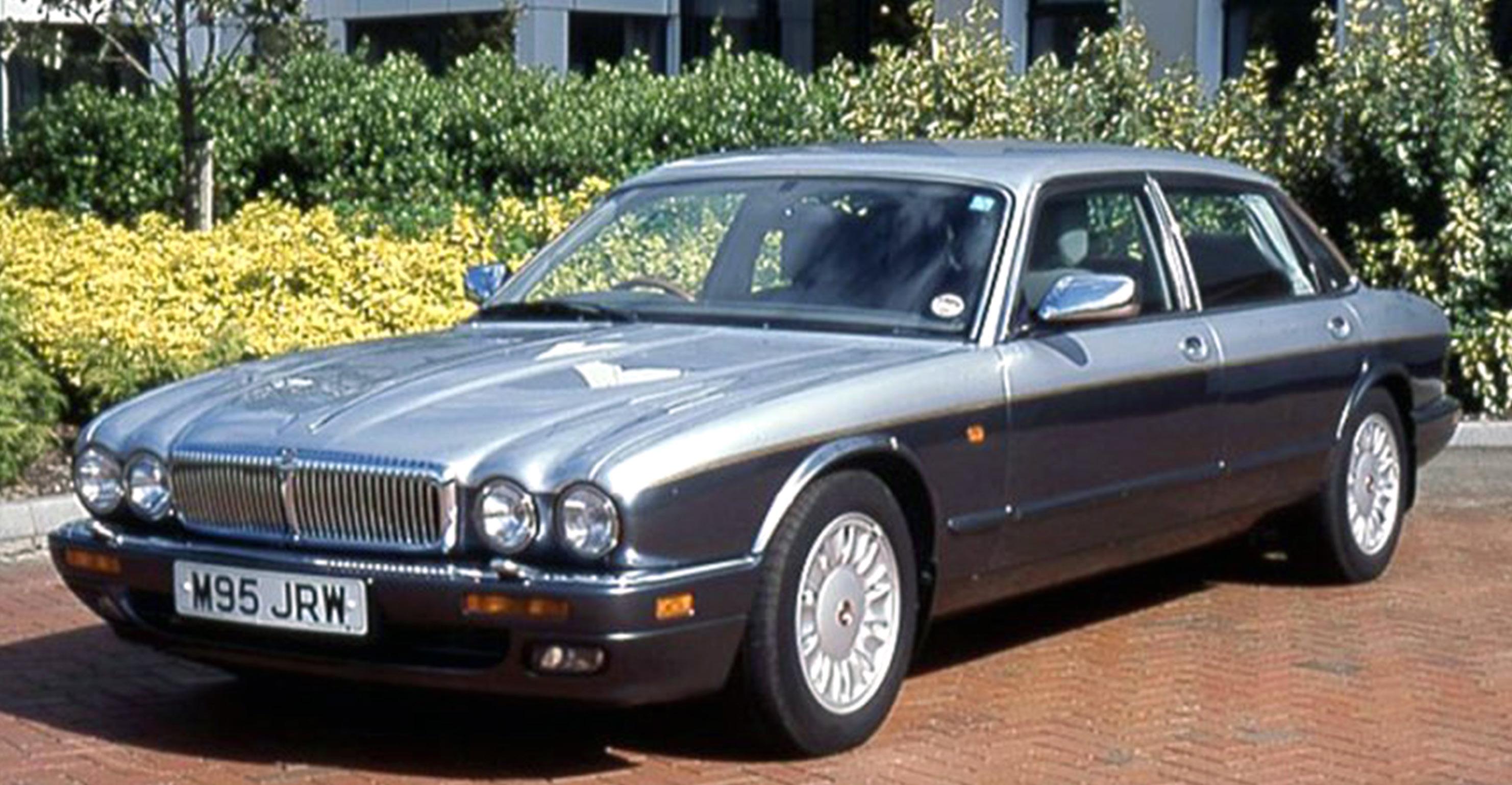
leather cabin, front seats with electric adjustments, with memory in three positions for seats and for external mirrors, electric steering column and heated mirrors.
The Sovereign came with chromed trim in various locations: on the radiator grille, rear light cluster surrounds, windscreen and rear window surrounds, rain gutters, window frames and boot-lid plinth.
◊ Sport
To attract younger buyers, Jaguar offered a “Sport” model with wider 8-inch ‘Dimple’ alloy wheels, revised seats, and stiffer suspension. The Sport kept the matte-black window surrounds from the base model, and is identified by “Sport” badges on the B-pillars and “XJ Sport” badging on the rear. It was offered with either the 3.2 litre or 4.0 litre engine.
The sports suspension and wider wheels were also available as an option on the XJ6 and Sovereign SWB/LWB models.
◊ Executive
Aimed at a younger market segment, the Executive model was introduced for the 1997 model year and featured leather trim, a wood/leather steering wheel, wide wheels (similar to the “Sport” model), and air conditioning. It was treated as a run-out specification for the XJ6.
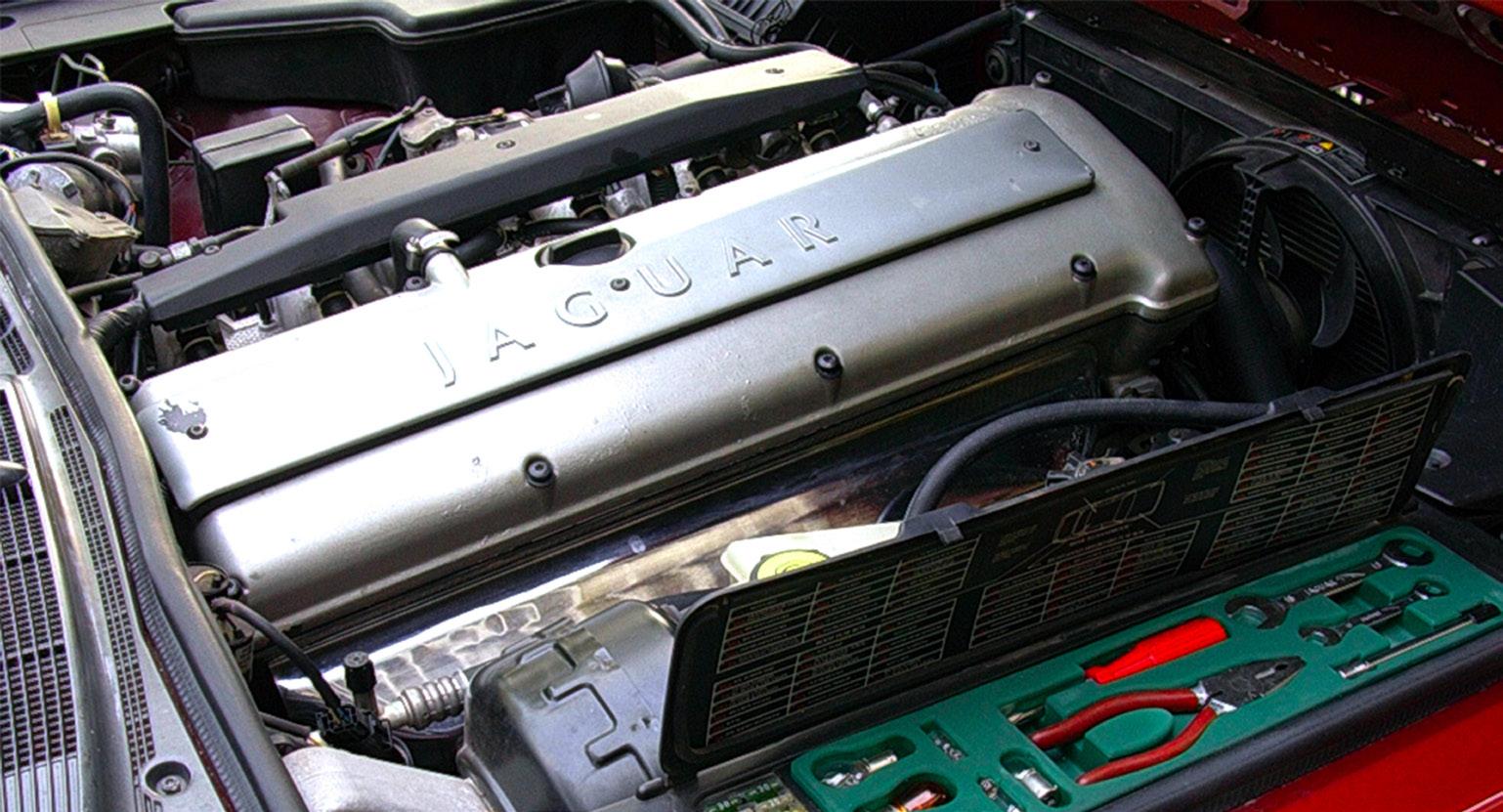
The XJR was introduced as a highperformance sport model, and it was Jaguar’s first-ever supercharged road car.
Compared to the XJ6, the XJR was distinguished by its 17-inch alloy wheels, firmer suspension, climate control air conditioning, leather upholstery, front fog lights, driver’s seat memory settings and alarm. The XJR was also fitted with a limited slip rear differential.
Cosmetically, the XJR differed from the standard cars with a body-coloured
grille surround, mesh grille insert, bodycoloured boot-lid plinth, larger exhaust outlets, special five-spoke “Sport” alloy wheels, and “XJR” badging. Rain gutters and window surrounds were matte black.
◊ XJ12 and Daimler Double Six
The XJ12 model featured the same trim level of the Sovereign with leather upholstery and front fog lights. It was visually differentiated by the rear bootlid “XJ12” badge, a “V12” badge on the passenger-side dashboard wood trim, a “V12” badge on each B-pillar, and a

gold-coloured Jaguar crest at the top of the radiator grille surround.
While the similar Daimler Double Six came with 225/60-16 tyres on 7-inch wheels and comfort suspension as standard, the XJ12 came with 225/55-16 tyres on 8-inch-wide wheels and sports suspension, which explains the height difference between the two models.
◊ Daimler Century
In 1996, the Century model was introduced to commemorate the centennial of the Daimler name. The Century was equipped with all features and upgrades available on the X300 cars, plus chromed wheels, special exterior paint, and electrically adjustable rear seats. Only a 100 of each were built (Century Six & Century Double Six).
X300 Review -Auto Express
Verdict - If looks alone influence your car buying decisions, the XJ’s curves will have already seduced you. It’s a stunner. Inside, there’s still a fight between traditional and modern, but leg and headroom are improved - although both are cramped for a car of this size, as is
the boot. But on the road, the X300 is a delight. The steering has more weight and precision than before, while the ride is unsurpassed. What’s more, the handling is much improved. In terms of value for money, you can’t beat it. You’ll get a lot of car for the money.
Sales Price (New)
The X300 was keenly priced when new. In the UK, in the final year of sale the range started just shy of £30,000 - a sum that would have bought an entry level XJ6 back in 1968. The XJR topped the Jaguar badged model at £47,500 while the Daimlers ranged from £52,000 for the Six to a staggering £66,500 for the long-wheelbase Double-Six, more than twice the cost of the entry level Jaguar!
In Australia the XJR sold for $165,000.
These days the X300 is revered by many enthusiasts as one of today’s top modern-classic buys, renowned for its value for money as well as being one of the most durable Jaguars of the last thirty years. However, there is still a
need to buy carefully - high mileage isn’t necessarily a problem, but a service history is a must. Low-mileage cars do come onto the market and inevitably command a premium, especially the XJR and Daimler models.
The X300 sold readily with new and returning customers flocking to get their hands on what BBC’s Top Gear had described as, “Probably the best car in the World” - praise that led to more than 92,038 examples being built, despite such a short career, as by 1997 the aesthetically similar XJ8 was waiting in the wings, bringing eight-cylinder power to the XJ line-up for the first time ever.
If you own an XJ X300, or thinking of buying one, spare the time and watch the following 7-minute video: Jaguar XJ (X300) Promo Video 1995. .
Editor- Thank you to club members for providing photographs for this feature.
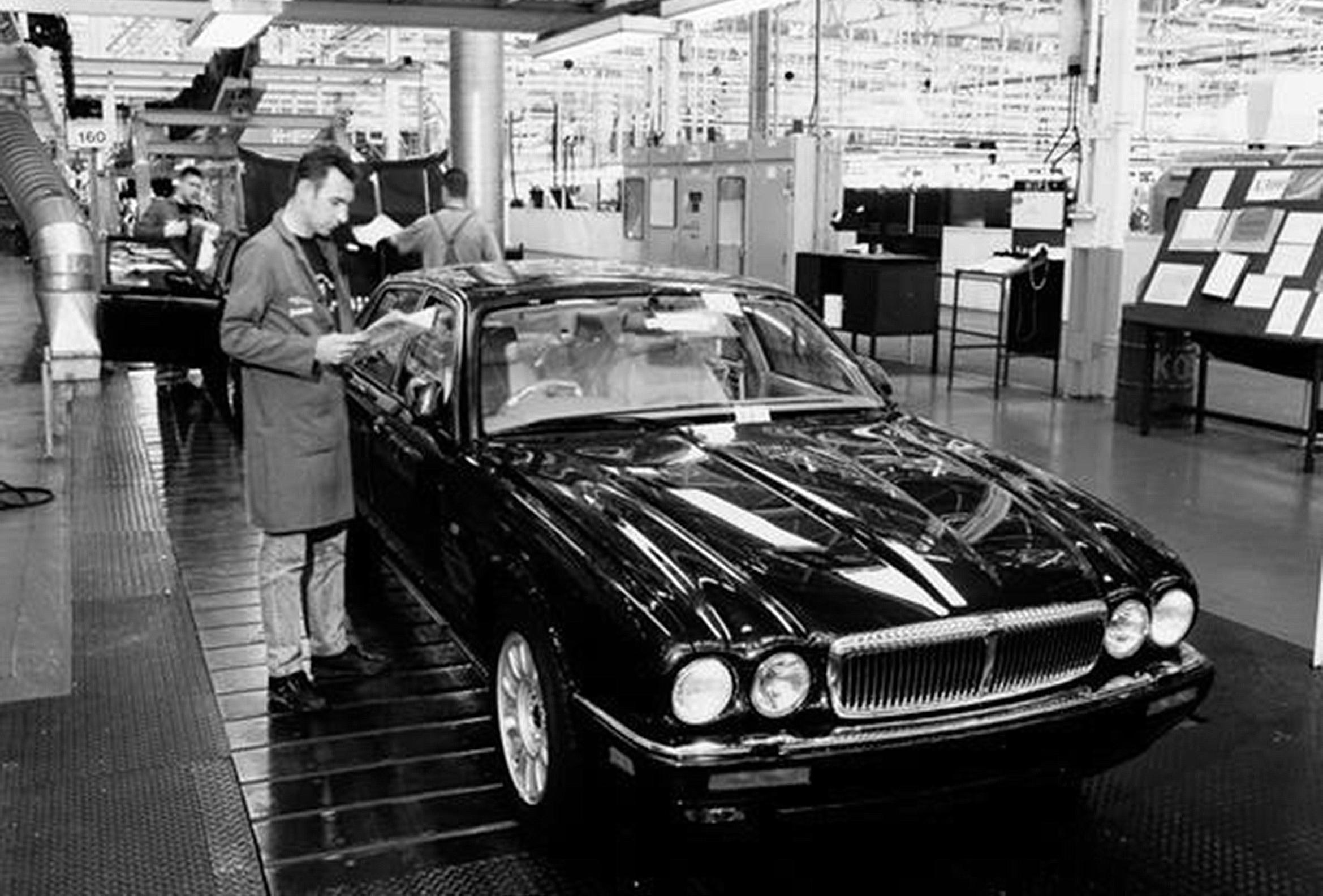
BUYING AN X300
The X300 fares quite well against the dreaded ‘tin-worm’, but they’re getting on in years now and aren’t immune to the effects of our climate. Check for corrosion in the front chassis legs as well as the lower corners of the doors, the rear wheel-arches, the inner wings and the footwells.
It also pays to check the bumper mounts, which are made from alloy and can corrode to the point of the bumper falling off, and for damage to the plastic sunroof tracks (where fitted). The latter can shatter if a large enough piece of grit becomes caught, necessitating a major strip out to replace them.
It might sound strange, but always check that the boot will unlock/open via the key; with the boot lock incorporated into the central locking, the key mechanism is almost never used until someone presses the valet button, disconnecting the electric release. This setting can only be reversed by using the black master key in a lock that is often seized solid.
The six-cylinder AJ16 was fitted to all six-cylinder X300s, with the 216bhp 3.2-litre engine mechanically identical to the 245bhp 4.0-litre unit other than a 19mm shorter stroke. Compared to the older AJ6 unit, the AJ16 gained a stronger cylinder block and head, lighter valve-gear and a new engine management system with sequential injection and coil pack ignition.
While the engine has no major weaknesses, the hydraulic upper timing chain tensioner can fail. It’s not expensive or hard to change but, if neglected, can damage the slipper against which the chain runs, eventually necessitating a full stripdown of the front of the engine. At worst it may allow the chain to skip teeth on the camshafts, causing valve piston contact and most likely lunching the engine. Listen for a brief rattle on start-up from cold to identify this issue. Another problem is the buildup of carbon on the back of the valves, reducing performance and increasing the likelihood of pre-ignition.
Also check the cooling system. The thermostat housing and the back of the water pump can just about disintegrate.
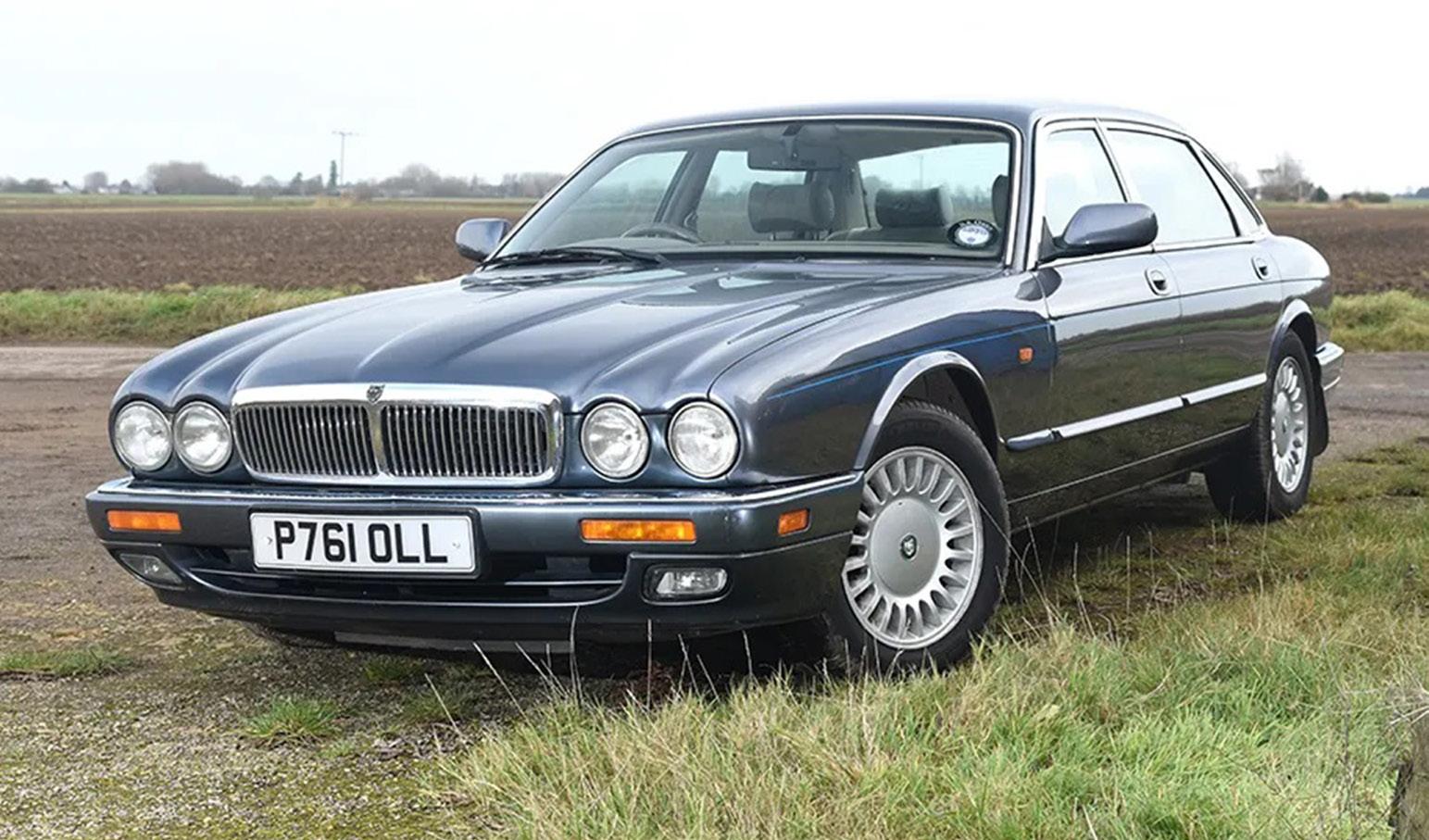
Look for swollen hose ends and greentinged corrosive build-up. Also examine the hoses, especially the lower radiator item as there have been some dubious quality replacements on the market in the past.
The supercharged engine in the XJR is really no less reliable than the standard unit, just a little more awkward when work is needed. For instance, the throttle body is located under the intercooler and only accessible with the car raised up in the air.
The 6.0-litre V12 cars are rare, with only 3400 made. The motor carried over largely unchanged from the XJ40, but it did also switch to coil packs for ignition. These engines are capable of huge mileages but can really suffer when neglected, so check the service record scrupulously. Also ensure all the plugs are of the same age and type (some garages change only the easy to reach ones) and above all ensure the coolant is at the correct strength, the hoses/radiator are in good condition and that there are no signs of weeping from anywhere. You can’t overheat a V12 and get away with it, as the valve seats will loosen and may drop later with no warning, usually destroying the engine. Also start the engine from cold, listening for the faint rumble that warns of main bearing wear. Exhaust System
All X300s came with stainless exhausts, so many will have been replaced by now. On six-cylinder cars the cast iron manifolds are prone to cracks; they are expensive to replace and hard
to weld. V12 manifolds on the other hand are more likely to suffer from broken downpipe studs as the threads corrode and downpipe/catalysts must be removed to replace the lower wishbone bushes – a reasonably common job.
Four different transmissions were used: the four-speed ZF in both electronic (dual mode) and mechanical forms, fitted to the 4.0-litre and 3.2-litre naturally aspirated cars respectively, the Powertrain (formerly Hydramatic) 4L80E fitted to the V12 and XJR, and the Getrag 290 five-speed manual gearbox available on all six-cylinder cars.
The ZF boxes are extremely reliable if they are serviced regularly, so check for the all-important receipts and ensure they change smoothly on the test drive, with a distinct change between normal and sport modes on 4.0-litre cars. The Powertrain auto has also proven reliable, but can develop a distinct whine in first and reverse as the miles climb. This won’t affect longevity, but the noise can be an issue for some drivers.
The Getrag is both strong and refined, but be aware that they will become noisy with age and the parts supply is restricted to seals, bushes and mounts only. There have also been issues with the dual mass flywheels failing and they are no longer available new – fortunately the conventional flywheel and clutch from a late XJ40 will fit.
A noisy rear axle isn’t uncommon on high-mileage cars as the differential’s
internal bearings wear. Replacing them means a full axle stripdown but the axle seems to get slightly whiney and then not get any worse for the next 100,000 miles, so if it doesn’t bother you unduly then simply live with it.
All the same it’s worth checking for leaking pinion seals and for perishing of the rubber coupling at the rear of the prop-shaft. Since the Jaguar design uses the driveshafts as the upper suspension link, it’s important that the universal joints, wheel bearings and differential output bearings are all free of play. It can all be replaced but it’s costly doing it all at once.
The basic suspension layout is largely the same as that fitted to the XJ40, though problems tend to occur at higher mileages with the X300. At the front end, check for split subframe mounts and corrosion in the subframe itself, as well as worn upper and lower wishbone bushes which allow the arm to move off-centre on its pivot. The lower ones can be a problem as the factory spring compressor is needed and, as mentioned, V12 cars need the catalysts to be removed first.
Ball joints tend to last well, but wheel bearings often need replacing at 80,000–100,000 miles. Dampers can also feel tired by 100,000 miles although sometimes it’s just the soft upper mounting bushes, which will cause a knocking when they fail.
A loose feeling from the rear end will often be down to the big rubber/ aluminium subframe mounts failing, while a clunk can be due to worn spherical bushes where the dampers mount to the lower wishbone. A creak from the rear can simply be the foam isolators at the top of the springs, which can be cured with a squirt of lubricant. Also check the subframe itself for corrosion, as we’ve seen breakages before.
Steering-wise, racks will eventually leak past the end seals into the gaiters and start to split in the rubber mounts, while most external leaks are caused by the high-pressure pipe chafing through on the engine mount bracket.
As for the brakes, it’s all pretty conventional, with electronic ABS and sliding single-piston callipers all round. It’s a very reliable system overall, but disc/pad wear will be much heavier than on earlier Jaguar models and it pays to check carefully as a full overhaul will cost several hundred pounds in parts alone. All cars feature ABS, with any problems are usually down to the sensors or corroded or dirty trigger rings.
This was the last Jaguar model to have its seats manufactured in-house with the rest of the interior, and they’ve proved to be resilient, with side bolster wear on high mileage sports tirm the only real gripe. As with previous XJs, the headlining will eventually start to sag

as the foam backing breaks down; DIY headlining kits are available but we’d recommend a professional trimmer due to the complexity of the moulding it’s glued to.
The air conditioning can suffer from blocked heater matrixes, seized coolant valves and failed pump motors (the heater circuit has its own electric pump). Fortunately, all are relatively easy to sort, but recommissioning a system that has been left idle can be expensive.
Meanwhile, the X300’s electrics have proven remarkably durable – certainly when compared to earlier XJ40s. Clock and heater/air-conditioning displays will fade over time but can be repaired while the electrically adjustable steering column (where fitted) can eventually strip its gears, so be sure to check it.
The X300 was very well regarded when new, with the XJR labelled as “probably the best saloon car in the world” and “the goal of every luxury car maker” by the contemporary motoring press. Nowadays its often more highly prized than its X308 successor – it’s certainly cheaper to run in extremely durable sixcylinder guise and avoids the issue with Nikasil-coated bores on pre-2001 model year X308s, as well as being a bit more traditional “Jaguar” than the more Fordinfluenced later car.
And with prices still affordable, the X300 makes a tempting choice as a modern classic that you can use all year round.
Information for this story sourced from Classics World (11 June 2025). Words: Paul Wager and Images: Paul Walton.

Once I realised that Jaguar had manufactured a supercharged vehicle, I had a longing to own one. A used XJR was very rare in SA and so I managed to locate one in Melbourne. Elaine joined me on the trip and we soon became the new owners of a nice two-year-old XJR that had previously been owned by an executive in Melbourne.
I was a little disappointed in the performance as it did not seem to be that quick, so after a few months I decided to try to improve acceleration by adding firstly a cold air intake and then a sports exhaust system. Both those additions helped, but it still was too slow for my liking so I added a larger crankshaft pulley to make the supercharger pump a little harder.
A few years later I learnt about a crankshaft bracket, known on the “Jaguar Forums” site as the ‘Andy Bracket’, that had been manufactured by the engineer who first programmed the XJR computers and he stated that it would improve fuel economy and increase acceleration.
Once again there was an improvement but it still didn’t seem right.
I eventually purchased an OBD2 (On Board Diagnostics) code reader and to my surprise it showed that at WOT (Wide Open Throttle) I was only getting 53% opening!!! To cut a long story a little shorter, I resolved that issue and now I had an XJR that would fly if it had wings.
In the 23-24 years that I have owned the XJR it has been totally reliable and the only repairs I have made are a new thermostat and a top radiator hose “just in case”.
I should mention that apart from the first couple of years, when I was too busy running my own business, I have maintained the vehicle myself, which has just basically been oil changes and brake pads.
John Fulcher

Editor: Story
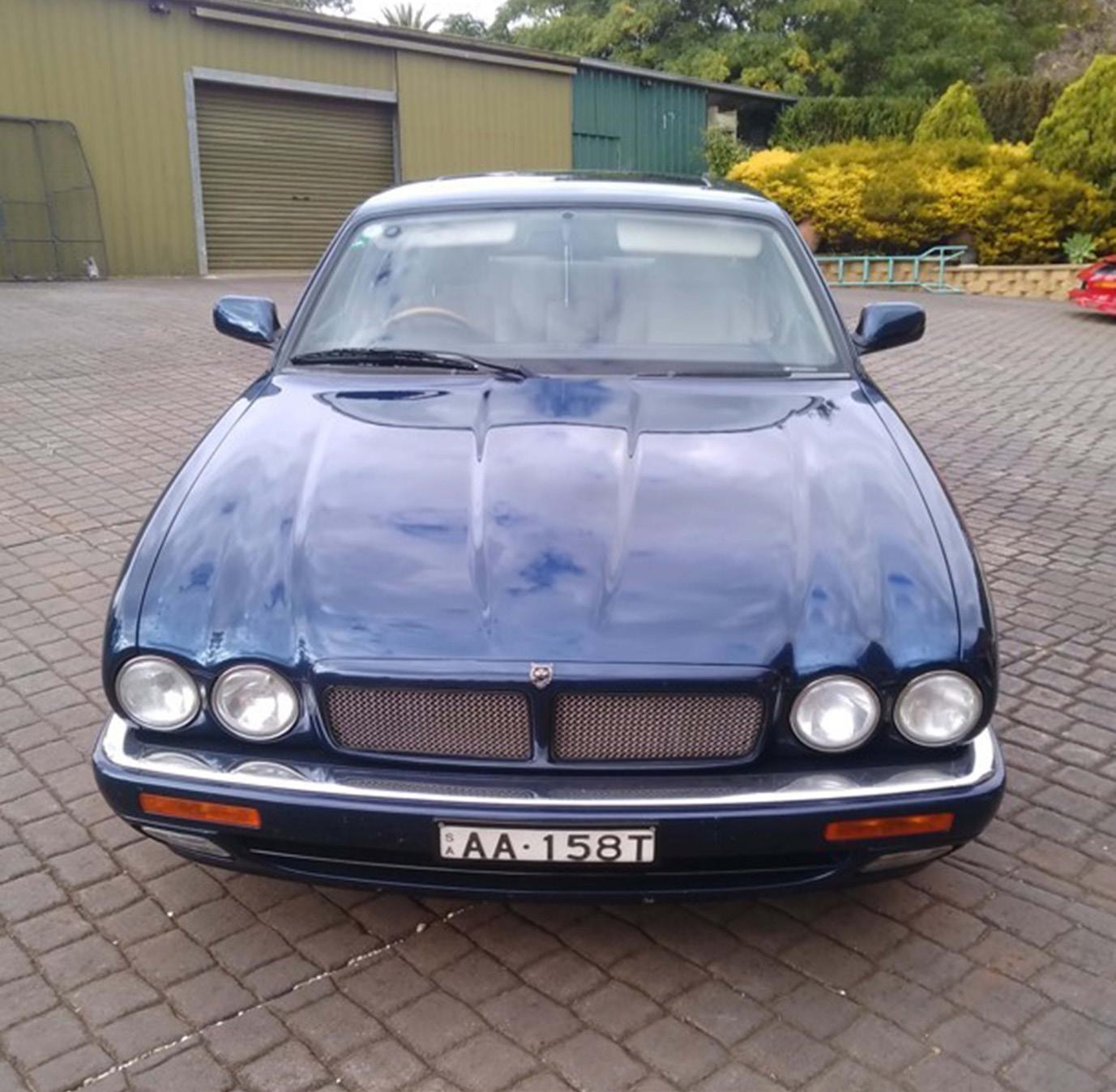
We purchased the car in 2004 from the former car wholesaler, Emacord Autos on Grange Road. We were looking for a 1995 model XJR, the first supercharged XJ and happened to see this car in the car lot.
The previous owner purchased the car from new and had bought the X300 as a demo from Solitaire Motors. He commuted from Largs Bay until he traded it in.
Although it has the normal XJR livery, it is in fact, an XJ Sport which we were told had been mocked up as a demo to sell new XJRs. It has a much firmer ride than our XJR and was built in August '97. The sport package has much stiffer springs and without all the electric accessories. it is somewhat lighter than the XJR.
The normally aspirated AJ16 is much more responsive than the supercharged XJR and is much livelier to drive. The car was one of the last 6-cylinder X300s off the production line as they changed to V8s that same year.
The car has been basically trouble free apart from an unusual head gasket
problem resulting in a valve grind, occasional ignition coil failures, etc.
All four wheels had to be re-rolled, as when we test drove it, it felt like it had square wheels.
Front seats have been recovered and the head lining has been replaced. It has been repainted its own special
green, slightly bluer than the normal British Racing Green. It is great fun to drive and drives like a go-cart.
Cheers Andrea & Ken
Editor: Thank you Andrea & Ken for the informative story. While Andrea drives the X300 Sports, Ken drives an X300 XJR It is hard to tell them apart.
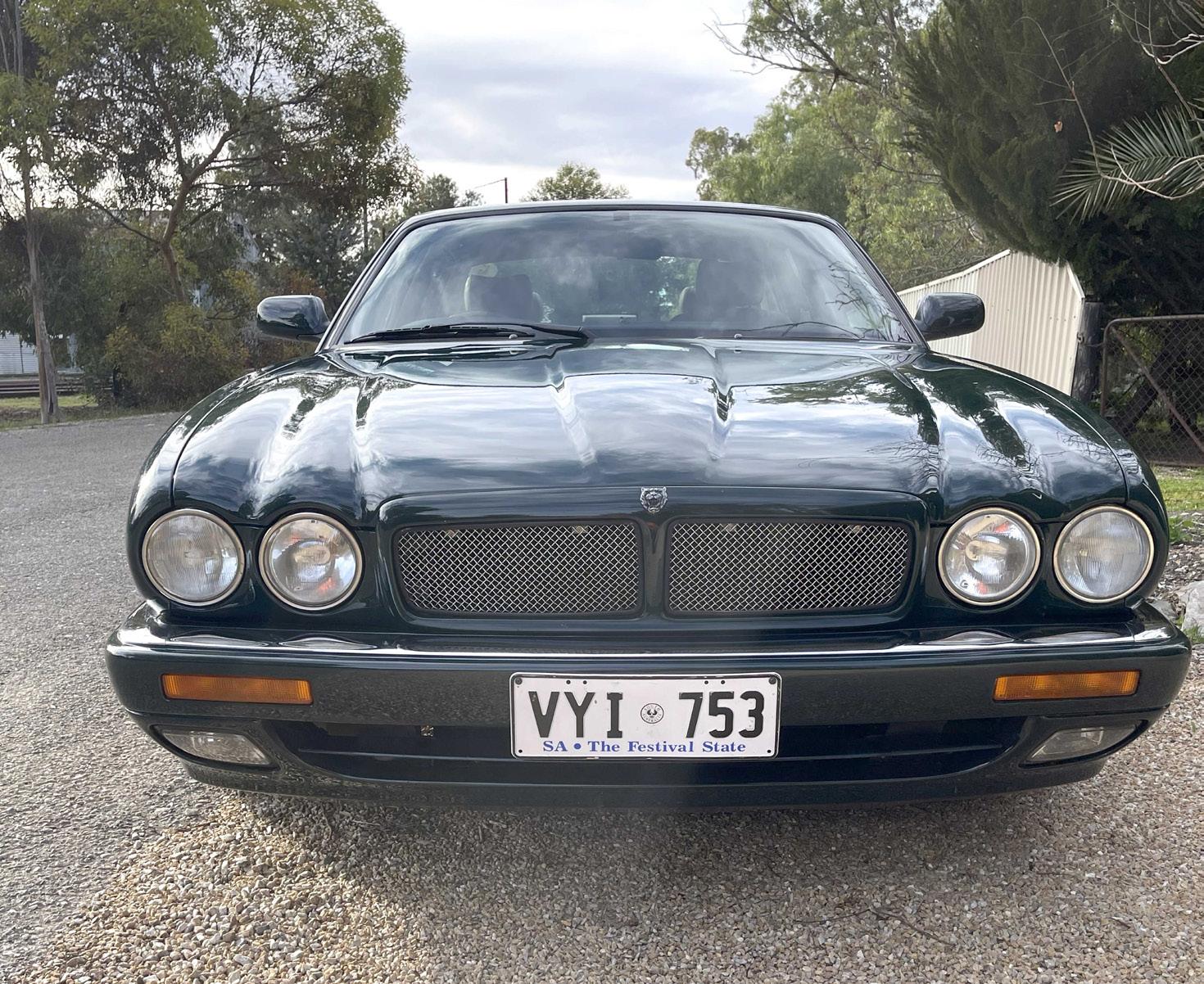
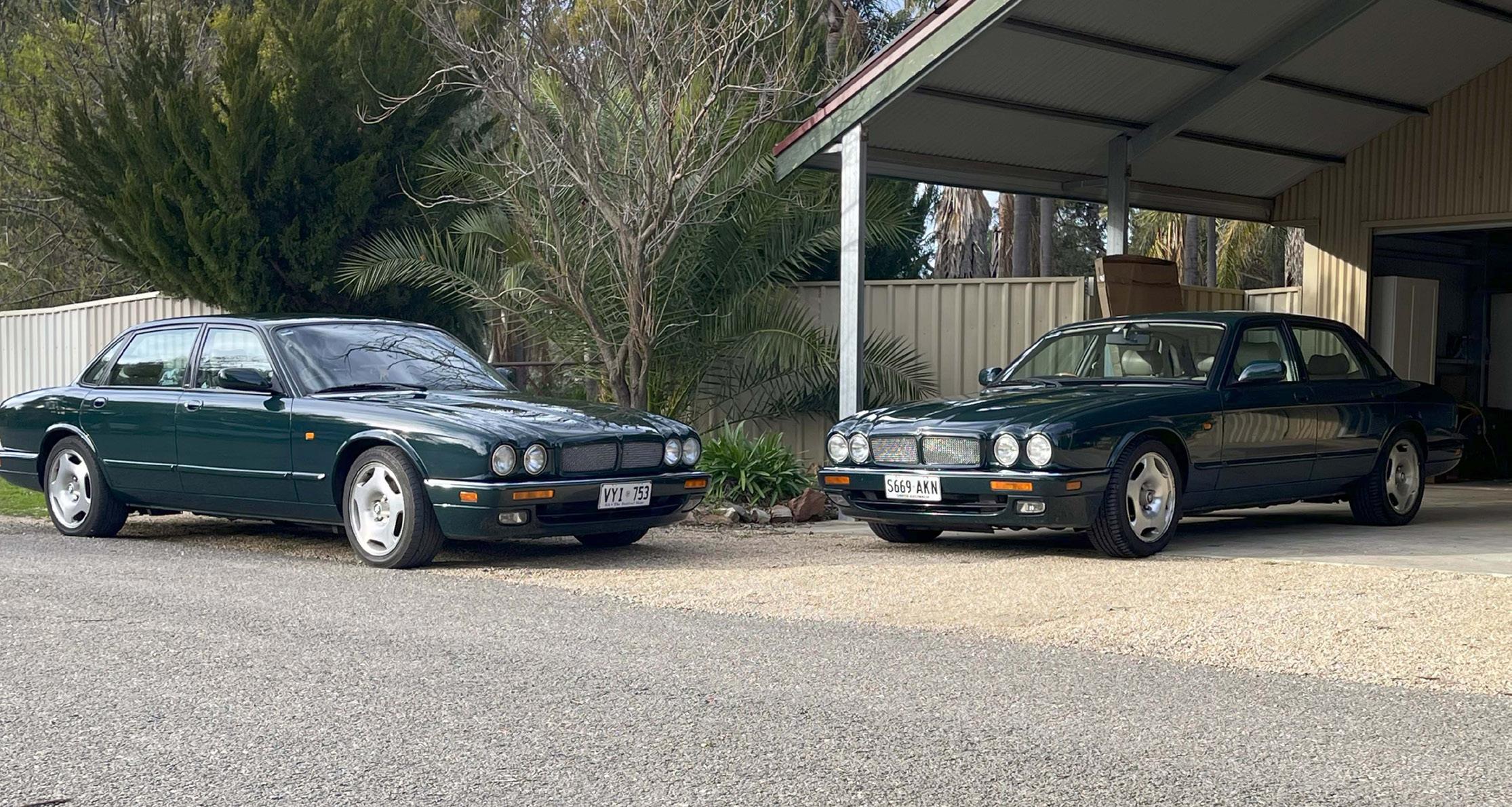
From 5th to 12th August 1952, this specially prepared XK120 was taken to Montlhéry near Paris and driven for seven days and seven nights at an average speed of 100.32 miles per hour, including all stops.
There were four drivers: Stirling Moss, Jack Fairman, Bert Hadley and Leslie Johnson – who had conceived the record attempt following previous 1 hour and 24 record runs.
Montlhéry’s concrete surface was rough, and the Jaguar broke a spring when it was already well into the run. Johnson drove for nine hours to save the other drivers from added risk while the speed had to be maintained on the broken spring.
After the repair, the car went on to complete the full seven days and nights, covering a total of 16,851.73 miles at an average speed of 100.31 mph. .
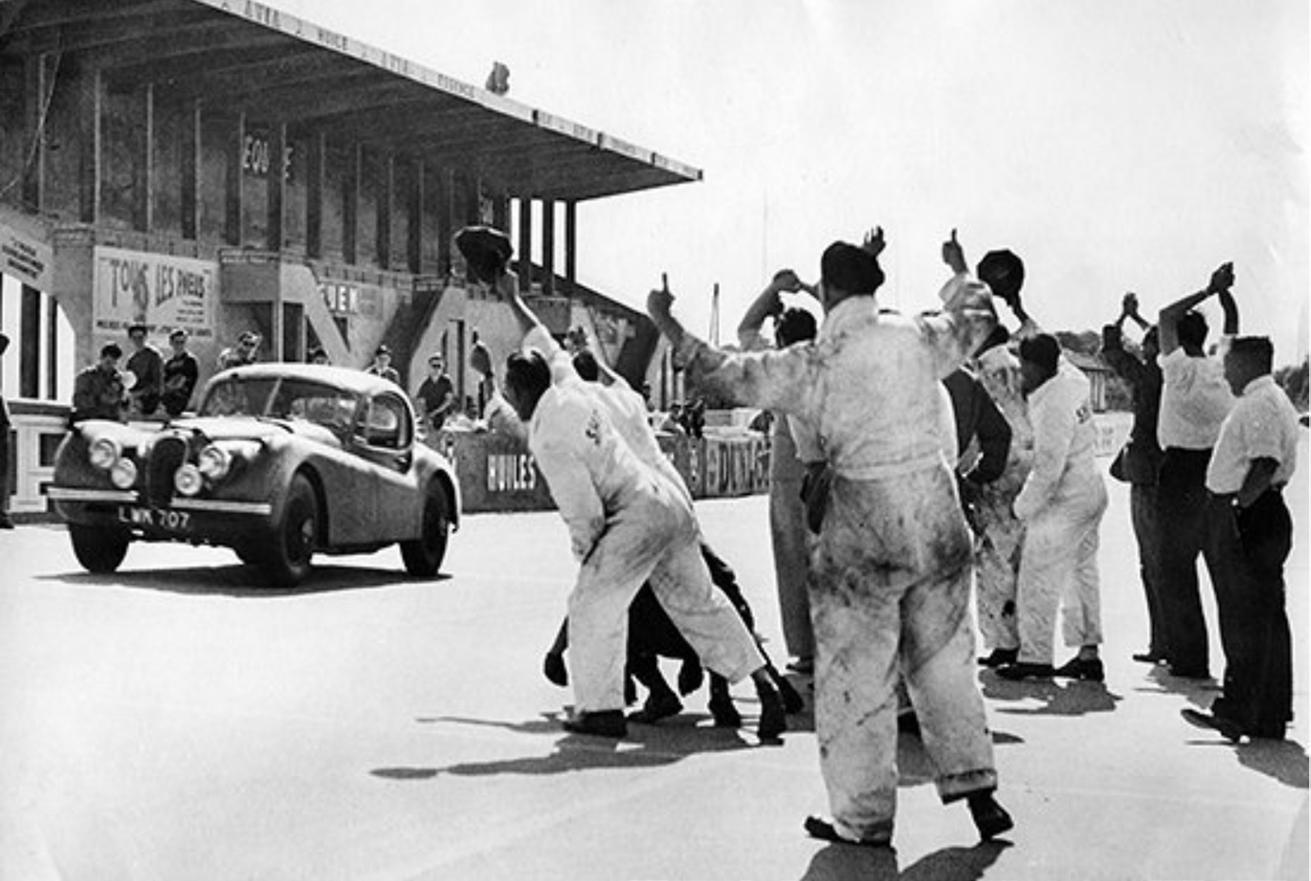
On 1 August 2008, the last remnants of Jaguar's old Browns Lane plant literally bit the dust when the administration block — which contained Sir William Lyons' office was demolished.
A former Daimler shadow factory, the office block was purpose-built for the move from the original Coventry factory at Foleshill which began during 1952. From the 1990s onwards the block was much modified by face-lifts and additions. .



America's first World Champion racing driver, Phil Hill, who cut his teeth on Jaguars, died on the 28th of August 2008. He had been responsible, in part at least, for establishing Jaguar's racing reputation in the United States.
He took the brand new XKC 007 to first place at Elkhart Lake (Road America) in September 1952. As this was the C-Type's first race in the US, the win was particularly significant for Jaguar, and it was followed by another at Torrey Pines in December 1952.
Phil Hill when reminiscing about XKC 007: “I was just in awe of the C-Type when I first stepped into it. When I look back on it now, it makes me smile. The steering was light – almost scary light. It was the first car I ever drove that had a really precise feel about it – it really felt like a racing car.”
The 1961 World Champion died at the age of 81 from Parkinson's disease. .
The U.S.A. Group 44 XJ-S had its first race as Mosport Park on August 22nd 1976.
The XJ-S wasn't a natural racing car due to its size and weight. That didn't stop Bob Tullius and his Group 44 team from campaigning the car in the late Seventies, with significant success.
Jaguar's V12 was adequate for racing, so the engine was kept relatively standard, although they did fit six double-choke Weber 44 IDF carburettors. More importantly, the car was modified to dry sump lubrication.
On the 22nd of August 1976, at Mosport Park, Canada, that the car made its competition debut. It immediately showed its promise. Tullius qualified in pole and claimed the fastest lap in Category 1, which he led until the oil temperature started to soar and he had to back off. He eventually finished fourth in category and tenth overall.
The encouraging start was reinforced when Tullius won the SCCA meeting at Lime Rock, Connecticut, soon afterwards. Tullius went on to win the Trans-Am Championship in 1978 and 1979 with the car, proving that, while the XJ-S might not have been a natural racing car, it had more than the technical attributes necessary to be transformed into an exceptionally good one. .
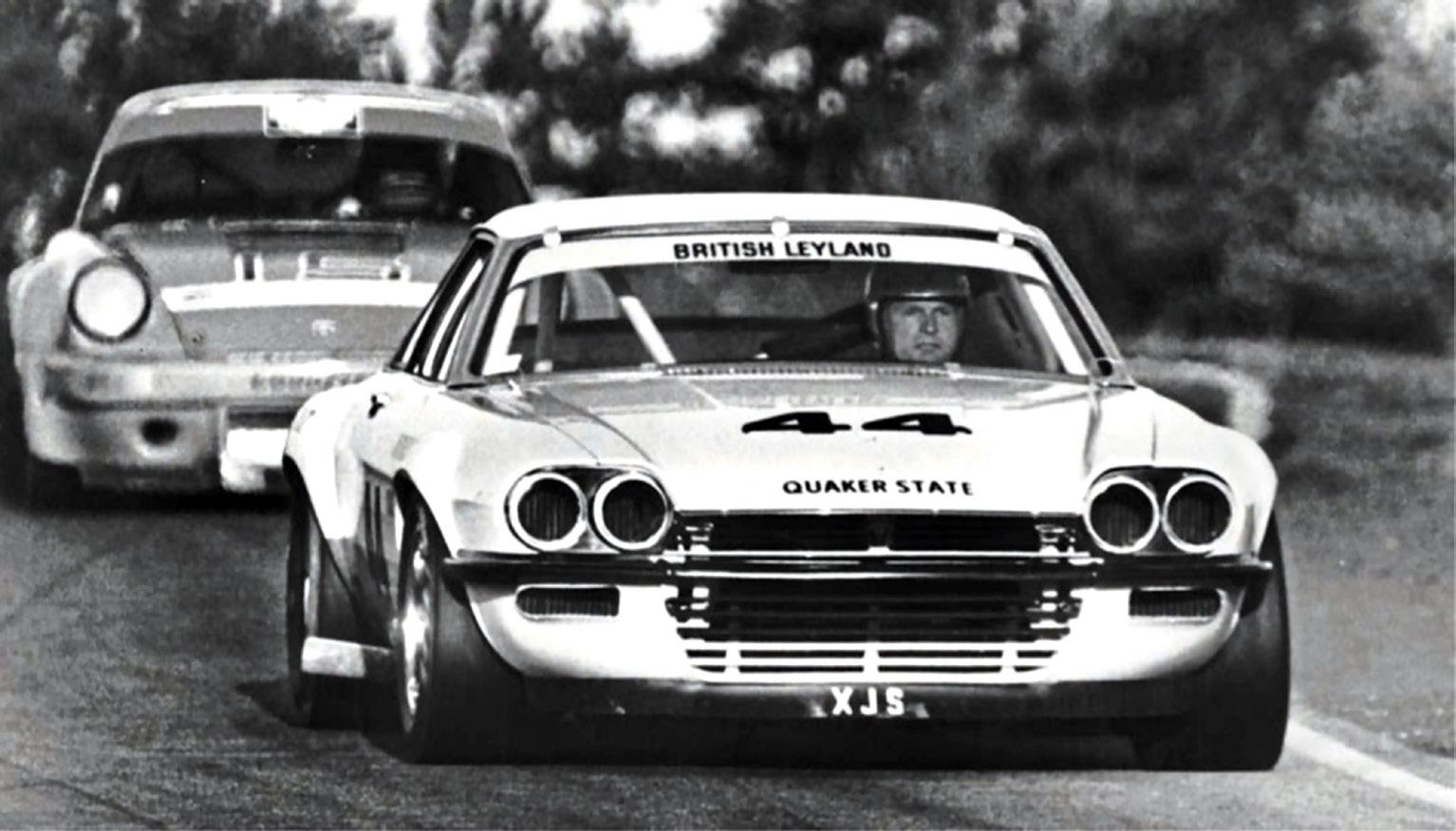

English motorcycle designer, Edward Turner, who was to become Managing Director of Daimler Cars, died on the 15 August 1973. Turner was also the designer of the 2.5L and 4.5L V8 engine that powered the SP250 and the Daimler V8 saloon.
Using a pushrod overhead valve system to keep down design, development and production costs, Turner used the design of the cylinder head that he developed for Triumph motorcycles, including the use of hemispherical combustion chambers.
The engine first publicly appeared in the Daimler Dart, renamed the Daimler SP250. After the 1960 merger, the opportunity was taken to create an up-market Daimler V8 version of the Jaguar Mark 2.
The 2.5-litre engine, only 30 inches (760 mm) long and developing 140 bhp (100 kW) @ 5,800 rpm, gave better performance than Jaguar's own 2.4-litre DOHC in-line six. .
In August 1985, an XJ40 prototype was taken to Australia for outback testing.
Between 1981 until 1986, hundreds of XJ40 prototypes were driven more than 5.5 million miles at three main centres; Toronto, the Arizona desert, and Australia. The majority of the XJ40's testing was completed in the Australian Outback based in Cobar. The cars were taken on marathon runs through the rough and dusty terrain, a harsh assessment for any vehicle, never mind a luxury saloon.
The result of two million miles through the Australian Outback came to nothing more than modifications to the front suspension wishbone ties. Yet, despite all the work that had gone into testing, when the XJ40 went on sale in 1986 it soon established a reputation for unreliability. However, the thoroughness of the XJ40's testing still laid down the foundation for how all subsequent models would be developed. .
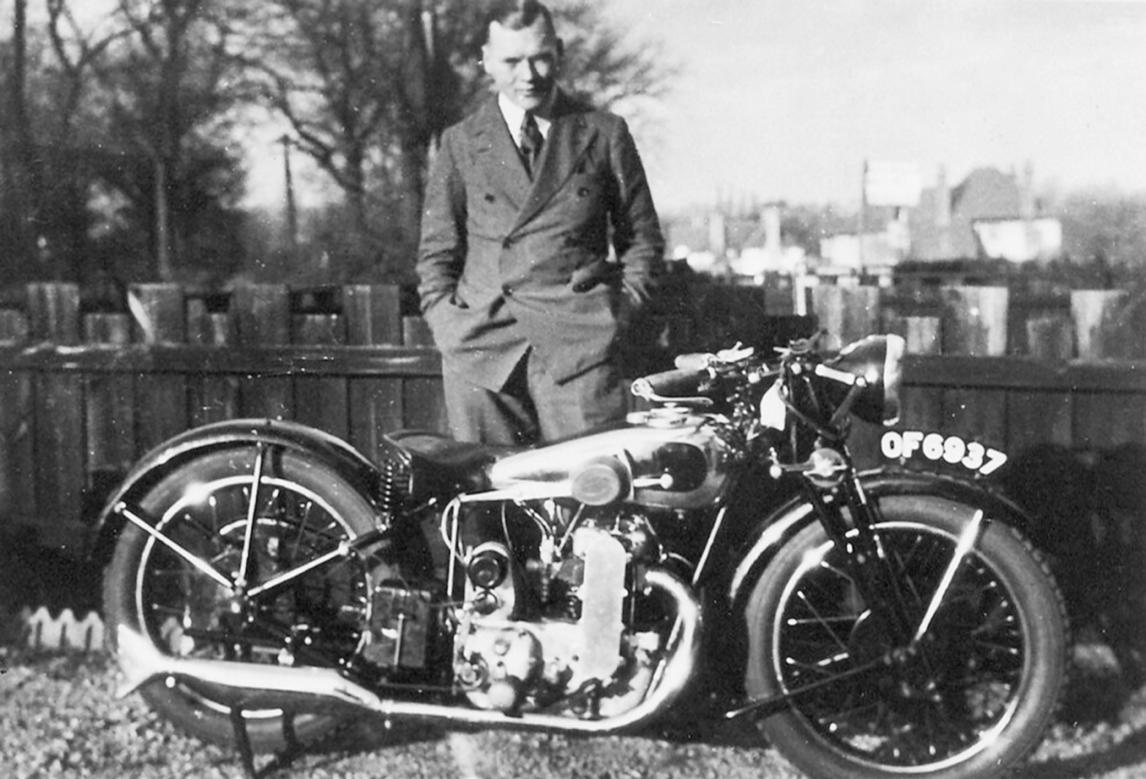
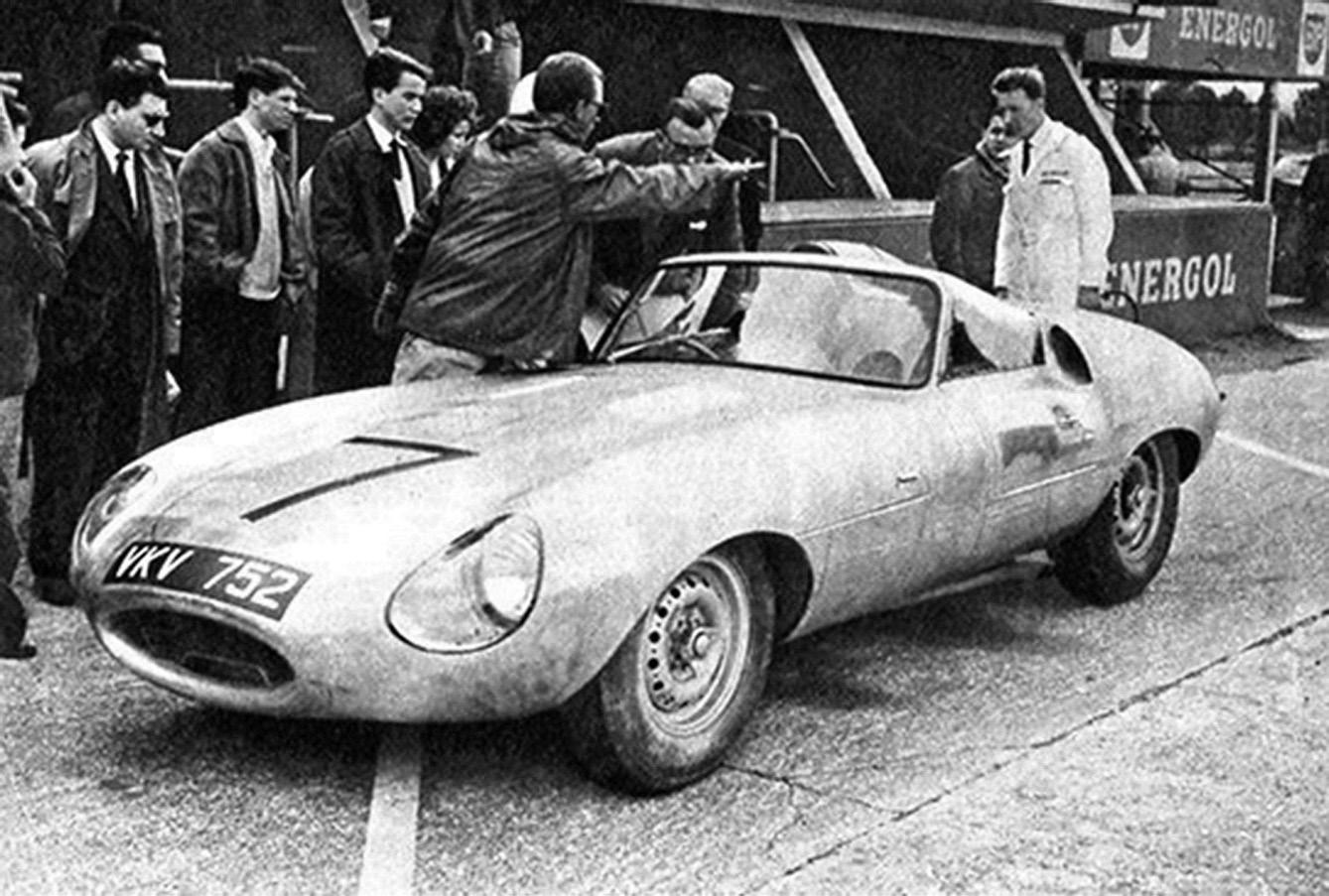
George Mason, the last surviving Jaguar works racing mechanic from the Briggs Cunningham era of lightweight E Types at Le Mans, passed away on the 13th of August 2009 aged 78.
Afterwards, George joined Jaguar and then took on a development role on the XJ 13 project. Immediately after Sir William retired, Lofty England retrieved the wrecked XJ-13 and had it rebuilt. George Mason (with Pete Dodds) re-assembled it.
In 1989, George and his wife Celia, came with the car to Adelaide for the Australian Grand Prix parades, and was genuinely road registered for the only time (‘XJ13’) and driven through the daily Adelaide traffic. It was also the first time the XJ13 left England.
Although George has died, the XJ13 is still safe and sound. .
On the 15th August 2008, the 1960 Le Man's race car, E2A (VKV 752) sold for US$4,957,000 (AU$7,352,387). At the time it was a world record sale for any Jaguar ever sold.
This unique and celebrated prototype was driven by no fewer than four of the world’s greatest racing drivers, Dan Gurney, Sir Jack Brabham, Bruce McLaren and Walt Hansgen,
However, the price achieved was based more on the fact that, like the XJ13, it was a one-off prototype Jaguar race car which managed to escape from the factory into private hands. This occurred in the late 1960s when former Jaguar apprentice Roger Woodley somehow persuaded his boss, FRW 'Lofty England, to sell it to his father-in-law, motor trader and collector Guy Griffiths. The car remained in family ownership for 40 years. E2A remains a fascinating survivor from Jaguar's final Le Mans years. .

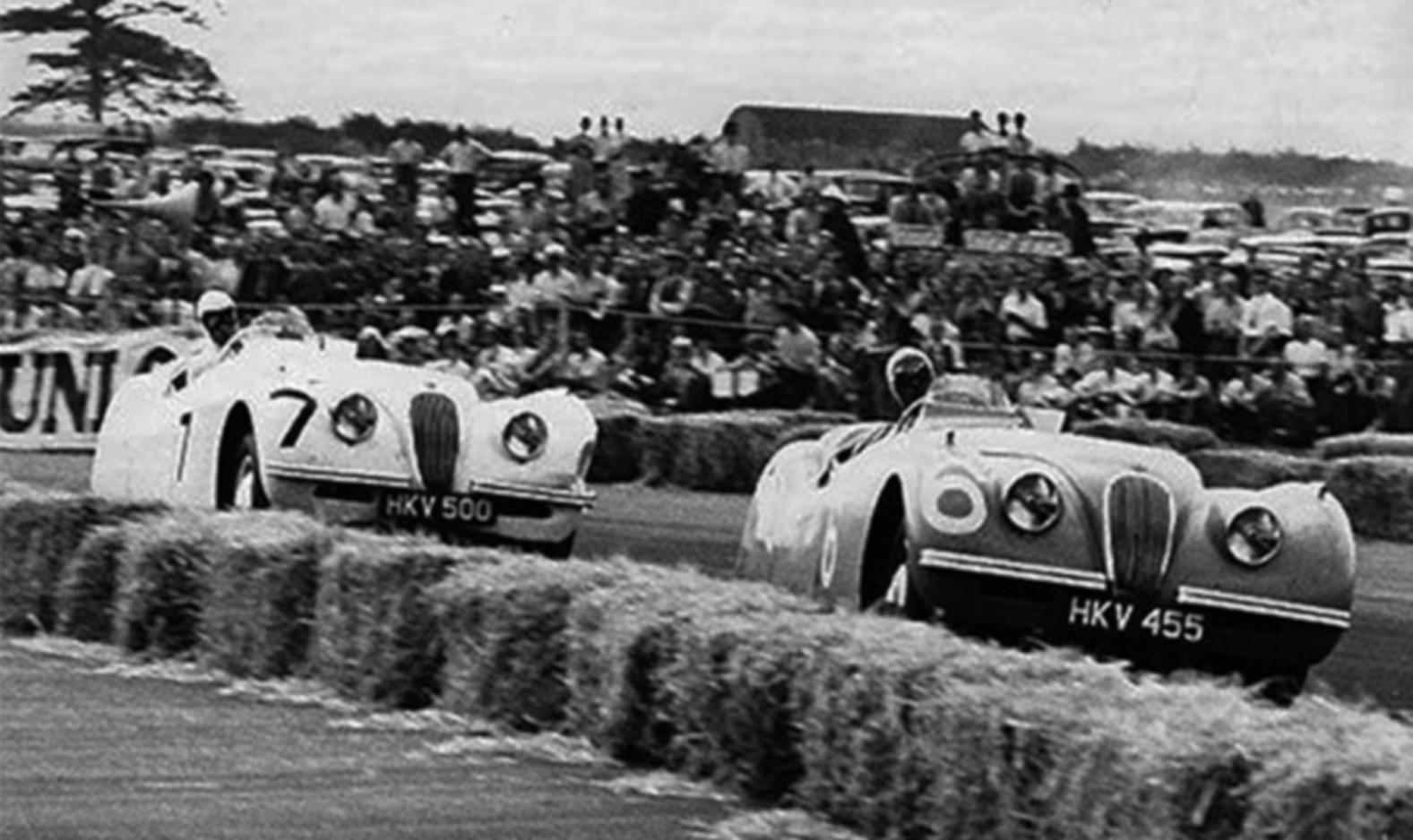
The very first XK120 victory was a onehour Production Car Race at Silverstone on the 20th August 1949. 1st was Leslie Johnson (HKV 500) with Peter Walker (HKV 455) finishing second.
In anticipation of the Silverstone outing, three patriotically coloured XK120s were entered. Chassis 660001 was repainted Blue (from its original Bronze) and entered for Prince Bira to drive. The other two cars (chassis 670001 and 670002) were painted Red and White and entered for Peter Walker and Leslie Johnson respectively.
Although a one, two, three was likely, unfortunately, Bira spun out of the race in 660001 when a tyre blew. .
The Great Train Robbery. 8 August 1963.
The Great Train Robbery took place on this day in 1963 between Glasgow and London at Bridego Railway Bridge, Ledburn, near Mentmore in Buckinghamshire, England.
A 15 person gang led by Bruce Reynolds tampered with line signals to halt a train before entering the Royal Mail HVP car, beating the engineer and collecting £2.6 million, an equivalent of £49.1 million or about $100 million Australian today. Shortly after, police found the Austin Loadstar lorry and the two Land Rovers used in the heist. (Photo: PA Archive).
The Mark 2 Jaguar gained a reputation as a capable car among criminals and law enforcement alike. .


XJR-5 finishes third on its debut at Road America, Wisconsin, 22nd August 1982.
Only a handful of endurance racing cars are strong enough to finish their debut race, and fewer still finish on the podium. But that's what the XJR-5 achieved at the Road America round of the 1982 IMSA GT Championship.
Following the previous successes of Bob Tullius' Group 44 with the E-type Series 3, followed by Trans Am XJ-S, the team decided to enter the IMSA GT Championship's new GTP Class for sports prototypes using a mid-engined car powered by Jaguar's 5.3-litre V12.
After testing throughout June and July, the car was ready for the 14th round of the 500 mile IMSA GT series race. Driven by Tullius and Bill Adam, a Scottish-born Canadian, the white and green car started in seventh and worked its way up the field to finish third. Those present included Jaguar's new chairman, (Sir) John Egan. This competitiveness and positive reception
After the June victory at the 1951 Le Mans 24 Hours race, Jaguar's new C-type had replaced the XK 120 as the one to beat on the track. However, the road car remained successful in rallying, though, as proven when an example won the tough LiegeRome-Liége rally - the only time Jaguar won this prestigious event. Johnny Claes, the Belgium-based British racing driver, persuaded Jaguar to lend him HKV 500 for the Liege-Rome-Liége rally in August 1951. He was joined by the Belgian motorsport journalist Jacques Ickx (father of five-times Le Mans winner, Jacky). Together, they made a formidable team.
The Jaguar came home ahead of the field penalty free. Jaguar also won the team prize, with another Belgian pairing, Jacques Herzet and George Baudoin, finishing second in a rebodied XK 120 and the standard car of French drivers Jean Laroche and Rémy Radix in sixth. It was a historic victory for the British company, yet it's always overshadowed by Ian Appleyard's many successes on the Alpine Rally. .
the XJR-5 received from the public encouraged Jaguar to head back to Le Mans in 1984, and then enter Jaguar into the World Sportscar Championship from 1985, all be it with TWR, where Egan felt the British team had better resources. However ,commentators believe none of this would have happened if it wasn't for the XJR-5 coming third in Road America. .

Dampers play a key role in a car's ability to ride well and to corner and brake efficiently. They have taken many forms over the years - here we look at some of the types used on Jaguars.
Contrary to popular belief, a cars dampers do far more than help provide a comfy ride; in fact, their most important function is to ensure maximum grip between the tyres and the road under all conditions, but especially when braking and cornering.
Springs do a great job of soaking up the bumps in the road, but without an effective way of controlling that movement, not only would the passengers need sick bags, but the tyres would spend most of their time up in the air rather than gripping the road - the heavier the hub/wheel/tyre combination (unsprung weight) the more it wants to bounce around.
There is also the need during corning to transfer as much force as possible to the outer wheels and resist the centrifugal force that wants the car to slide sideways. Dampers allow the suspension to work in a controlled manner so that should a bump cause the wheel to rise and the

suspension compress, the car's weight is then able to push it straight back down as soon as possible. Similarly, when a car enters a comer, the dampers allow it to roll slightly and transfer weight, but also make sure that most of that force still acts on the tyre rather than being soaked up by the spring.

Perhaps the most important function of the dampers, however, is to ensure maximum grip under braking, as the brakes are applied much of the car's weight is transferred forward (more than 80 per cent of braking is done with the front wheels).
It is vital that as much as possible of this weight bears down on the tyres - this is done by resisting both free compression of the front springs and the tendency of the wheel/tyre to bounce over irregularities in the road.
Worn dampers may not be noticeable during normal driving but in event of an emergency stop they can, in fact, double the cars stopping distance, and so turn a near miss into something a lot worse.
Almost without exception the vast majority of modern dampers consist of a steel tube, usually linked to one of the suspension arms and filled with oil, in which a piston, mounted via a steel shaft to the chassis/body, moves up and down as the suspension compresses and then extends. A valve within the damper controls the rate at which the oil can
bypass the piston effectively restricting the speed with which the suspension can move. The shaft is usually made from polished hardened chrome and runs in a seal to prevent oil loss.
By varying the size of the fluid port, the degree of damping can be tuned to the needs of the car — It is even possible to have different damping rates for compression and rebound.
Gas dampers follow the same basic design but add a chamber filled with high pressure gas to exert force on the oil and prevent the formation of bubbles as can happen when a corrugated road causes the piston to cycle up and down at high speed - this is detrimental as the bubbles can then bypass the piston much faster than the oil would have done.
For the high-end models of the original 3.6 litre XJ40 range, Jaguar elected to fit self-levelling suspension in order to maintain a constant vehicle height regardless of the total weight carried.
By fitting a height sensor, weaker coil springs and special dampers at the rear, charged with oil pressurised via an engine driven pump and accumulator, the ride height could be adjusted as necessary, though with the obvious drawback that the heavier the load the stiffer the suspension would be, so meaning a corresponding deterioration in ride quality.
In the end, although the system worked reasonably well, reliability issues and the cost of replacement parts meant that virtually all of the SLS equipped cars still on the road have been converted back to standard suspension. The system did remain an option on post- 1989 cars but was rarely taken up, though it does seem to have been fitted to all VI2 XJ40s.
One of the biggest problems with conventional dampers, and for Jaguars especially, has been the inevitable compromise between crisp handling and a soft ride.
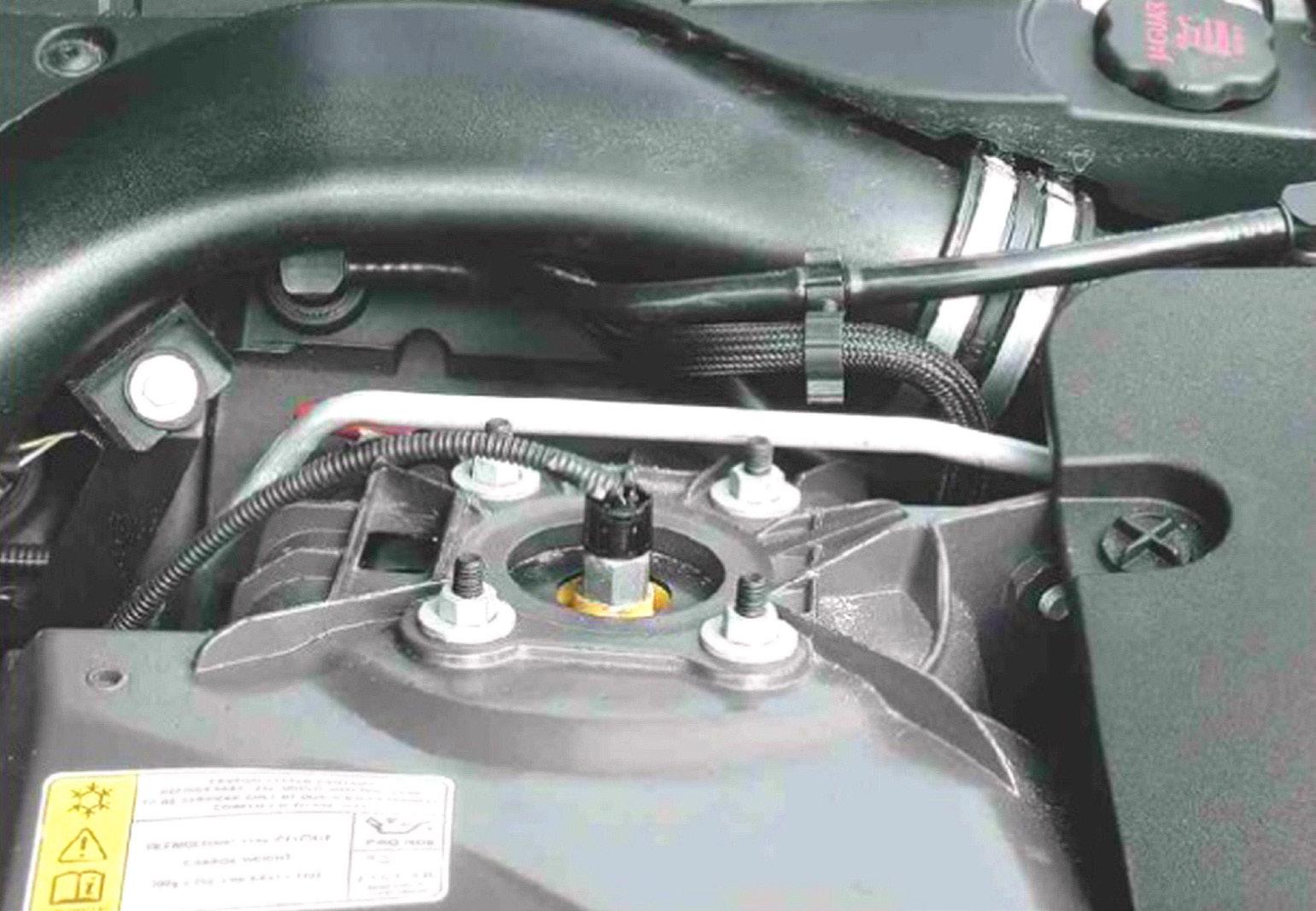

Remotely adjustable dampers are by no means a new idea; Armstrong developed an aftermarket system back in the '60s, and by the late '80s several Japanese companies provided hard and soft settings via a dashboard switch, but invariably the driver would leave them permanently set one way or the other, negating any benefit.
What sets the Jaguar system apart from the rest (it was introduced with the XK8 in 1996, initially as an option on the coupe only) is the ability to switch automatically from soft to hard and back again as the driving conditions require.
The Computer Active Technology Suspension (CATS) system comprises four electronically switch able dual mode dampers, together with an ECU and various sensors (some shared with the ABS/stability control) to monitor acceleration, braking, engine revs, gear selection and even cornering forces via a sensor on the steering column.
During normal relaxed driving the dampers default to the soft setting but should the ECU determine that the
driver is pressing on they will instantly switch to the hard setting — for example when the front of the car drops under heavy braking or the car enters a corner at high speed.
With the change to aluminium construction for the X350 in 2003, the chassis engineers faced a new challenge; with reduced bodyweight, the payload capacity of the car became a greater proportion of its overall weight when fully loaded. This would not be a problem on the forthcoming XK sports car, but in the XJ the combined weight of five passengers and a boot load of luggage would require conventional springs so stiff that the unladen ride would be ruined. The solution was to ditch the springs, take a conventional damper (standard or CATS) and encase it within an outer chamber filled with compressed air, the pressure of which can be adjusted to maintain a constant ride height. Unfortunately, the method of construction means that when one part of the airbag/damper fails the whole assembly must be replaced.
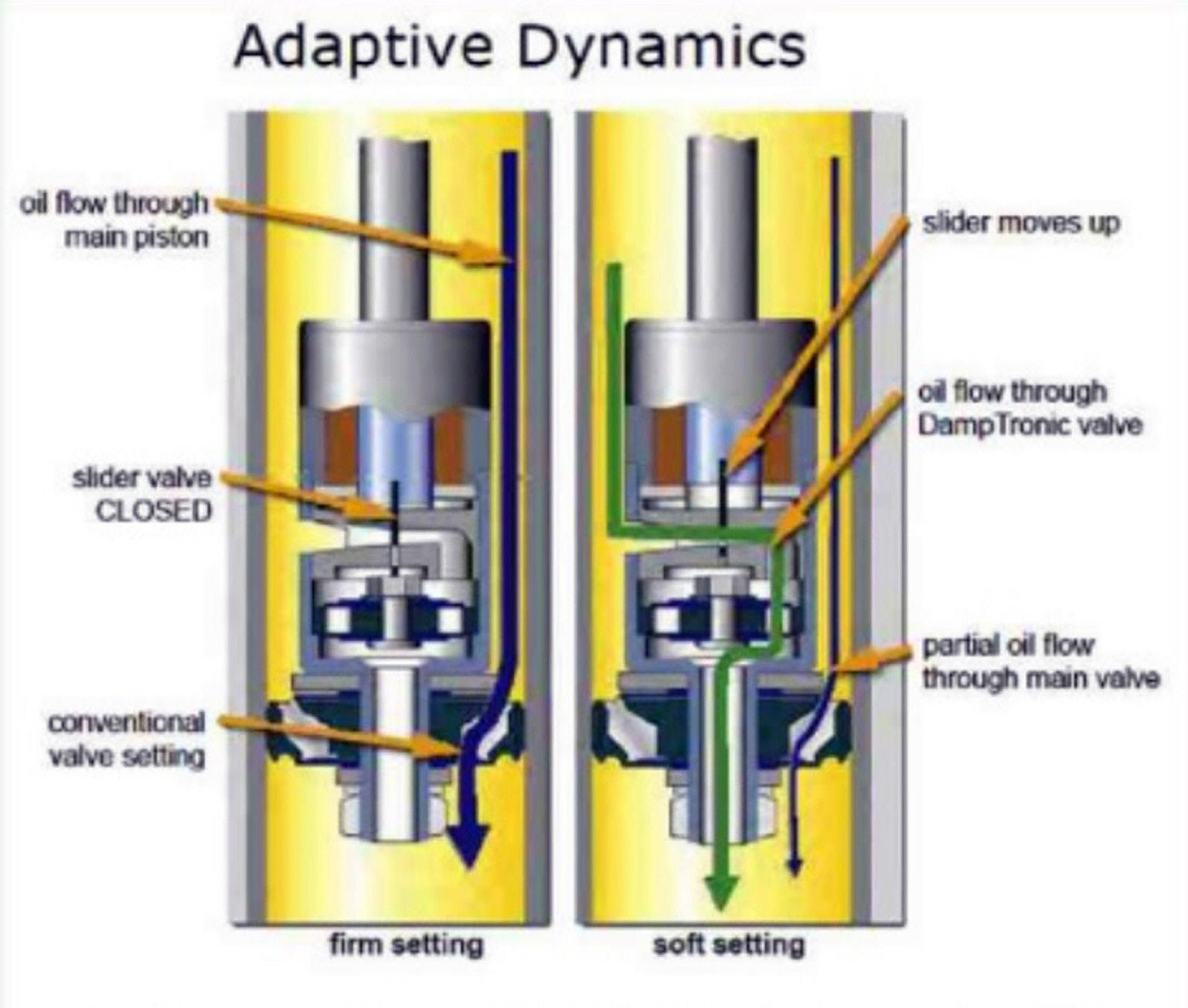
For the 2010 Model Year, Jaguar reengineered the CATS system with Bilstein dampers that are now continuously variable between hard and soft settings. The control system was updated and has the ability to predict roll and pitch (via the steering wheel, accelerator and brake), so that the internal valving can be adjusted in readiness to limit roll before the movement even takes place.
In addition, by monitoring each wheel position independently up to 500 times a second, road induced body motion can also be countered — for example to reduce pitching where there is a hollow in the road or when going over a humpbacked bridge.
Following criticism of the X350's low-speed ride, the new X351 XJ has conventional steel springs at the front and air-springs only at the rear where the greatest weight changes occur.
While there are sophisticated machines able to measure precisely the performance of conventional oil/ gas dampers, a basic check-up can be performed at home whenever you service your car.
Start with a thorough visual inspection. Look for any signs of oil leakage, no matter how slight, as well as damage to the polished chrome shaft or deterioration of the mounting bushes. Then, with the car parked on level ground, pick a corner and use one knee to build up a rocking motion in the body, before letting go and counting how many oscillations occur before the car stabilises — ideally it should stop moving as soon as it has risen back to the normal ride height, though one full oscillation is acceptable. Anything more, especially when the car continues to rock in ever decreasing movements, means that the dampers are not working effectively and should be replaced. Repeat the procedure for each of the three remaining dampers. .
Editor: Information sourced from the Jaguar World (Garreth Coomber) and Jaguar Cars. Introduced with the 2010MY, initially on the XKR and XFR only, were Adaptive Dynamics dampers - unlike the CATS units, these can provide infinitely adjustable damping rates between too soft and hard extremes.
The iconic Tom Walkinshaw Racing Jaguar XJS that won the Bathurst 1000 in 1985 has been reunited with the Walkinshaw family.
The Bathurst-winning Jag was sold by long-time owner Mike Roddy to an undisclosed buyer last year, who has since loaned the car to the Walkinshaws for it to go on display.
Ryan Walkinshaw took to social media during July to celebrate the car’s return to the Walkinshaw fold, with the caption, “back where she belongs”.
Ryan’s father Tom famously ran the Group A Jaguar touring car program
through his TWR squad back in the 1980s.
In 1985 TWR conquered Mount Panorama with a one-three in the Great Race, led by John Goss and Armin Hahne in this particular car.
Walkinshaw himself and Win Percy finished third in the #8 Jaguar which had started the race from pole.
While a piece of racing history for the Walkinshaws, the car isn’t on display at the Walkinshaw Andretti United headquarters.
Instead, it is at the nearby Walkinshaw Automotive Group facility in Clayton.
Walkinshaw Automotive Group is set to leave that existing facility later this year with a huge 100,000 square metre site in Dandenong South nearing completion. The race team will remain at its current Clayton base until at least next year. .
Editor: This story by Andrew van Leeuwen//20 Jul 2025// Supercars - Speedcafe.
To watch the must-see video of Tom Walkinshaw achieving Pole position for the Great Race


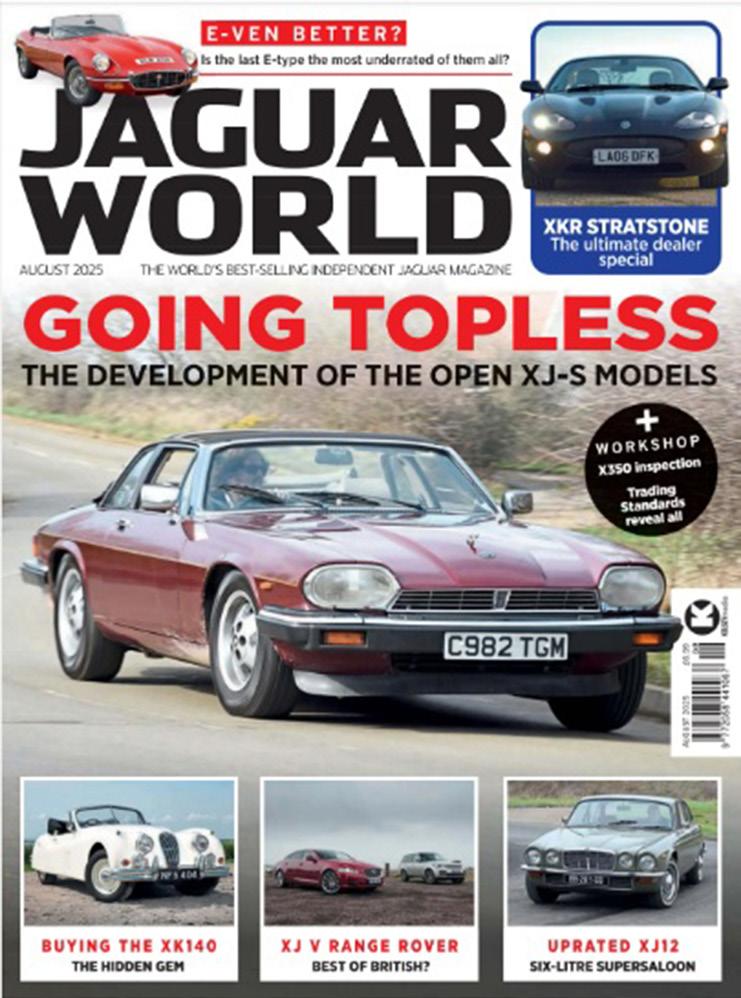
The August 2025 edition of Jaguar World includes the following feature stories: -
◊ Twin Test: Can the X351 XJ hold off the Range Rover L405? They might have both come from the same manufacturer but the X351 generation of XJ and the L405 Range Rover were very different interpretations of what a luxury car can be. To discover which they prefer out of a traditional saloon and an SUV, they compared an example of each back-to-back.
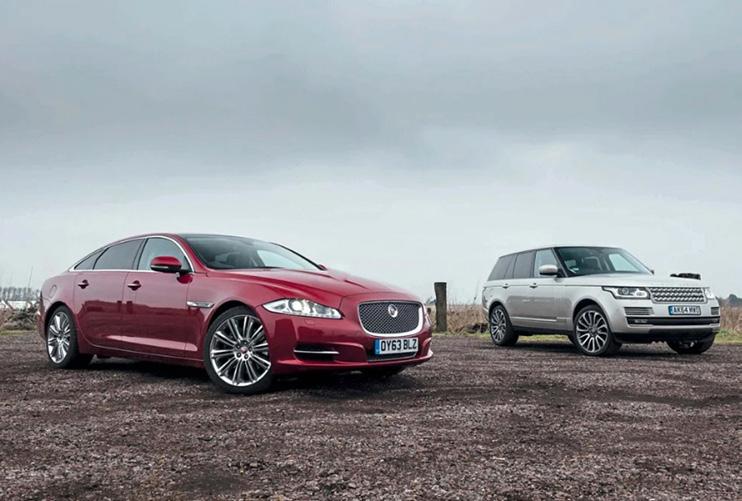
◊ Modified XJ12L. More power, more gears, more fun:
Despite appearing largely standard, this early XJ12 Series II hides two secrets; a 6.0-litre V12 from a later model plus a modern six speed automatic. The result is a still classiclooking saloon that’s as powerful as it is discreet. Although from the familiar ten slot steel wheels and chrome hubcaps to the familiar radiator grille the car might appear standard, but under the skin is a later and more powerful version of Jaguar’s V12.
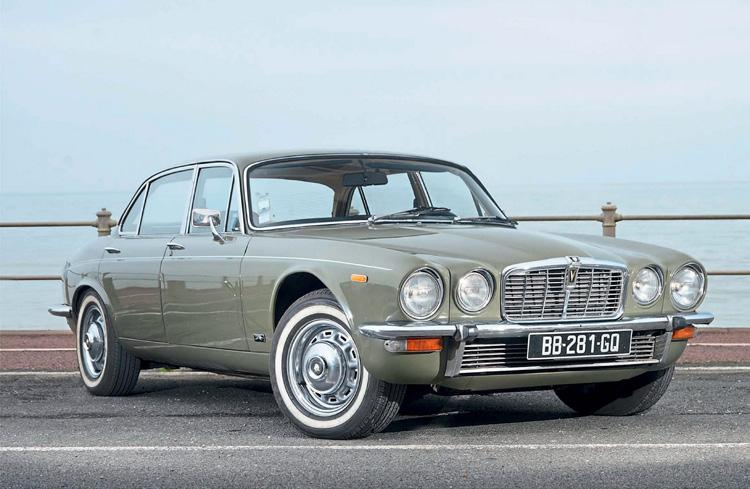
◊ XJ-SC/Convertible: A former Jaguar designer lifts the lid on the open XJS development:
The designer tells all about the development of the XJ-S from fixed head to sun-seeker. In 1982, engineering director Jim Randle looked at how the appeal of the XJ-S might be increased further. Randle was noted for his unorthodox approach to getting new projects developed outside the formal engineering process by enlisting small groups of engineers to work on his skunk projects outside of normal hours so that a running prototype might be quickly built and evaluated. He worked with Park Sheet Metal and Tickford to develop a droptop XJ-S that retained the door frames and side rails of the Coupé in a manner not unlike the Triumph Stag. By June 1982 the prototype was finished.
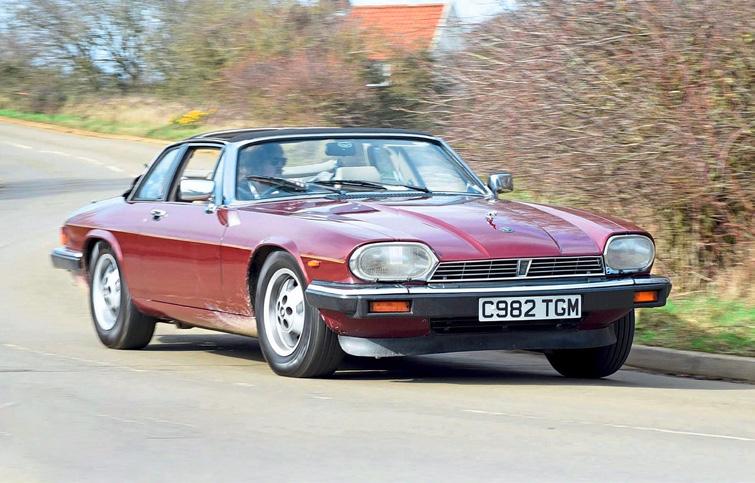
◊ XKR (X100) Stratstone - The ultimate dealer special?
With production of the XKR coming to an end in early 2005, a British dealership produced a limited edition to help keep it saleable resulting in a special, and today, a highly desirable version. IT’S EASY to forget today what an important model the X100 generation of XK had been for Jaguar when it went on sale in 1996. In terms of its performance, build quality, design and just about any other metric in which a car can be measured.

◊ E-Type V12: The story of the first true Jaguar GT.
There seem to be two types of Jaguar E-type enthusiast. There are those who think the V12 is an abomination – too soft, too comfortable, too big and too lazy; an embodiment of how the 1970s spoiled everything. And there are those who love every inch of it – flared arches to match the era’s trousers, a thumping great engine, and space to bring the family along to boot.
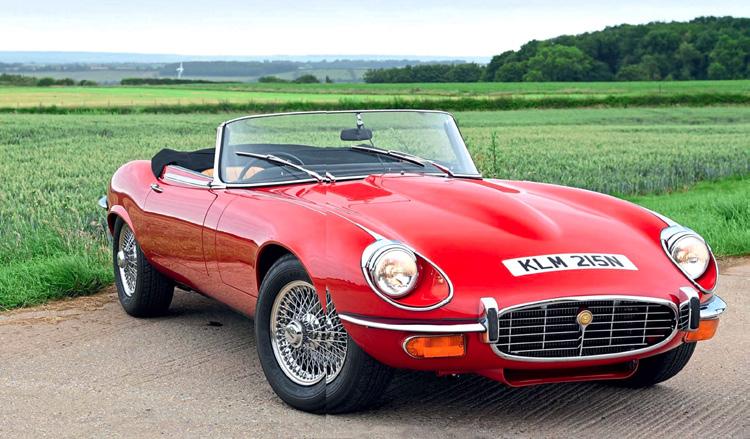
◊ XK140 Buying Guide: What you need to know to buy the best. Launched in 1954, the Jaguar XK140 wasn’t so much a completely new model as a comprehensive evolution of the XK120 which had preceded it. It brought more interior space, sharper rack and pinion steering and telescopic shock absorbers, giving greater suspension travel – but the overall look and feel of the car was little different to its predecessor. That meant it had the same 3.4 litre XK engine, the same svelte curves over an ash frame, and the same choice of three body styles. By this time though, nobody was kidding themselves about limited production runs – the XK was a hit, and Jaguar intended to keep it that way. Which is why it didn’t mess with the formula by too much.
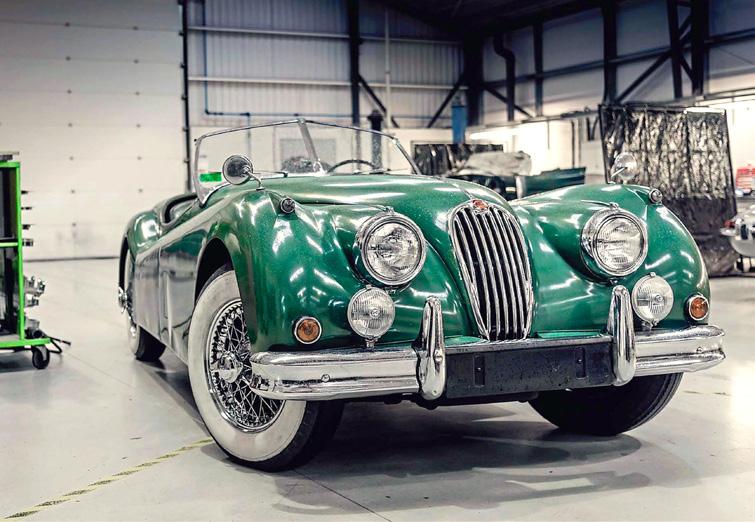

The August 2025 edition of Custom Car includes a story about a magnificent Mark 7 modified in the shape of a XK120 FHC and fitted with modern S-Type mechanicals: -.
Graham Slater is one of that select group of U.S.A. hot rodders who have built multiple feature cars over the years. That portfolio was recently expanded with the inclusion of the distinctive Jaguar he debuted at last year's Hot Rod Supernationals.
While internet trawling, Graham’s drew his eye to a Jaguar Mk IX, which gave him a vision of creating a 4-seater version of an XK120 fixed head coupe. He printed off some scale images and set to segmenting the pictures, then reordering the pieces to achieve a design he thought looked right.

Casually browsing all the usual sites, he came across an ad for a '56 Jaguar Mk VII, not at all dissimilar to the Mk IX he had previously toyed with. The Jaguar had been left abandoned in a garage for the last 45 years but it was all their and all original.
While searching the internet again he came across the perfect donor vehicle, a supercharged Jaguar STR (S-Type R). He then set about “chopping” the Mk 7 body and grafted it onto the S-Type bulkhead and mechanicals. It was a massive job as can be seen on the following images. (See page 50 &51).
You can read the 9-page story by obtaining a copy of Custom Cars.
(Continued page 50 )

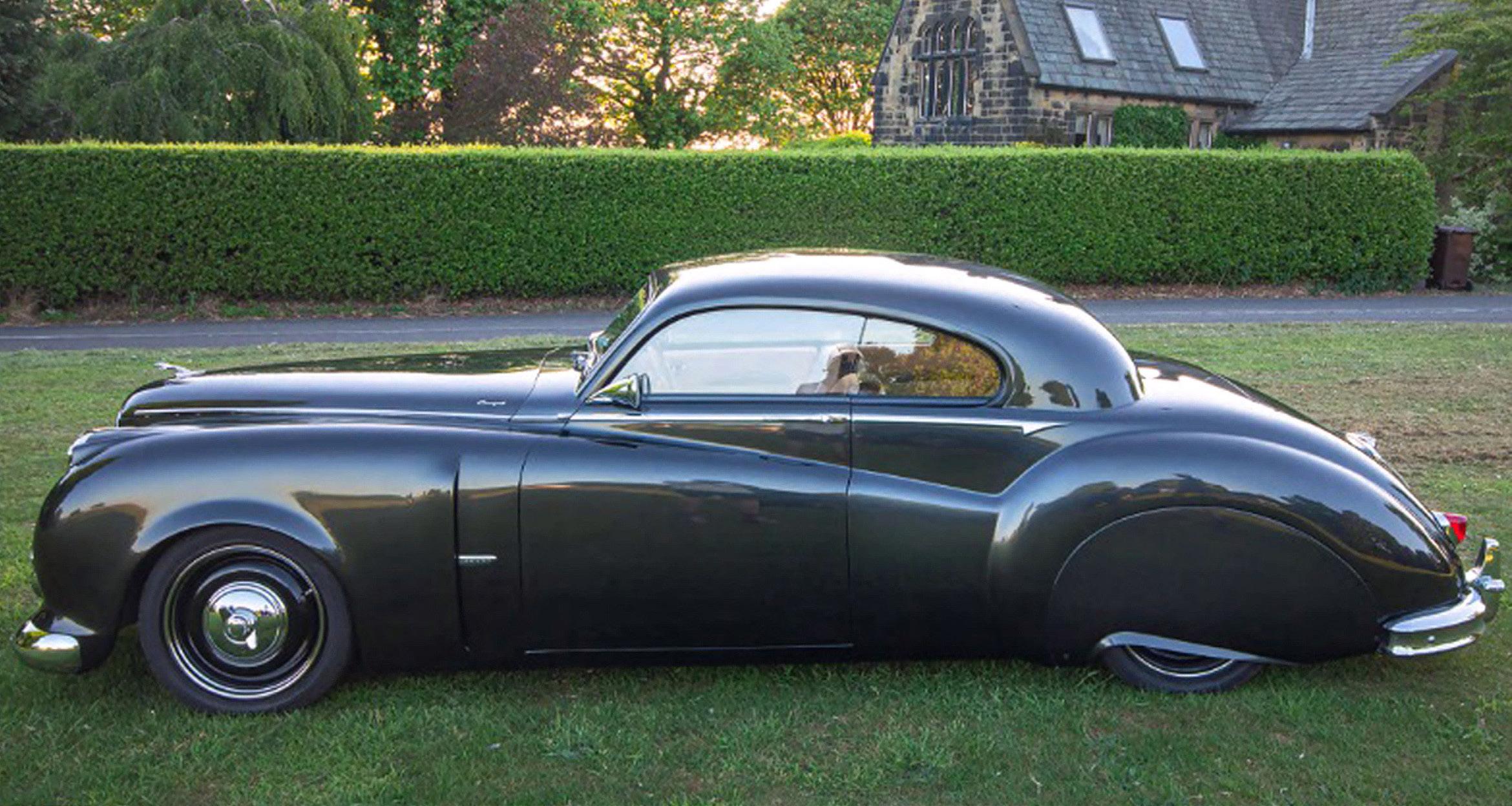


FOR SALE: 2002 XK8
Convertible - Sold New in 2003
The car presents as new inside & out. More photographs available
PRICE $39,500 negotiable.
Please call Steve Weeks 0414 952 416 for more details
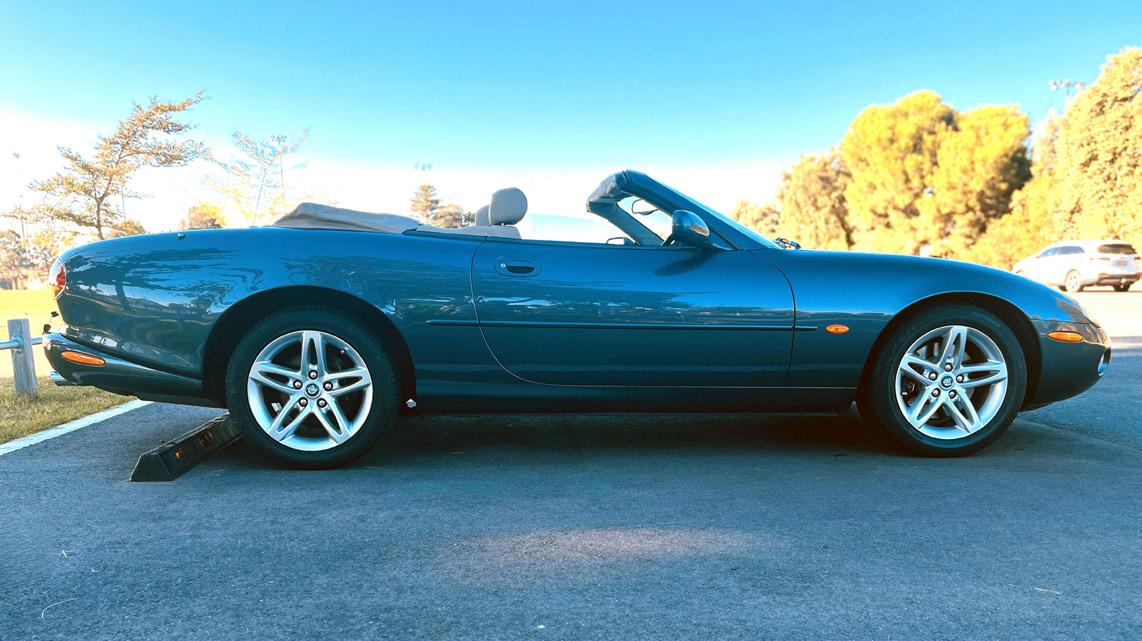
FOR SALE: 1976 XJ6 Series 2
Very original condition. Approx 92,000 original miles. Has been in the family for around 30 years now. Starts and drives, but needs some love. Very straight body. Located in Seaton SA.
PRICE $6,000 (negotiable)
Please Contact Stuart - 0411 042 485
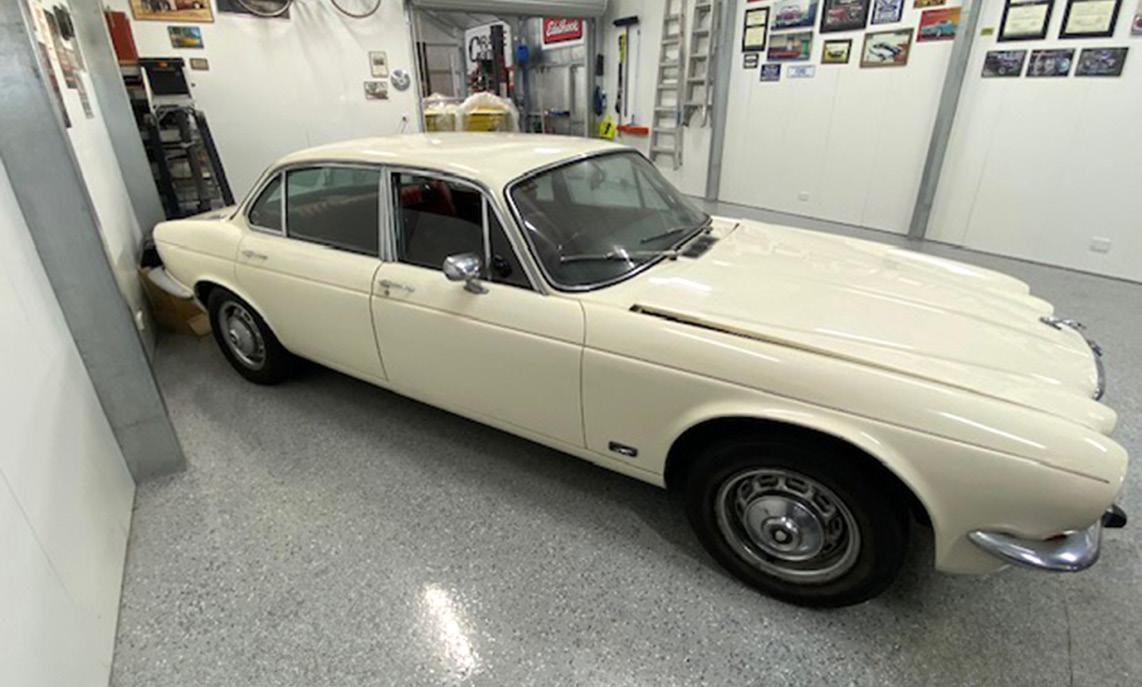
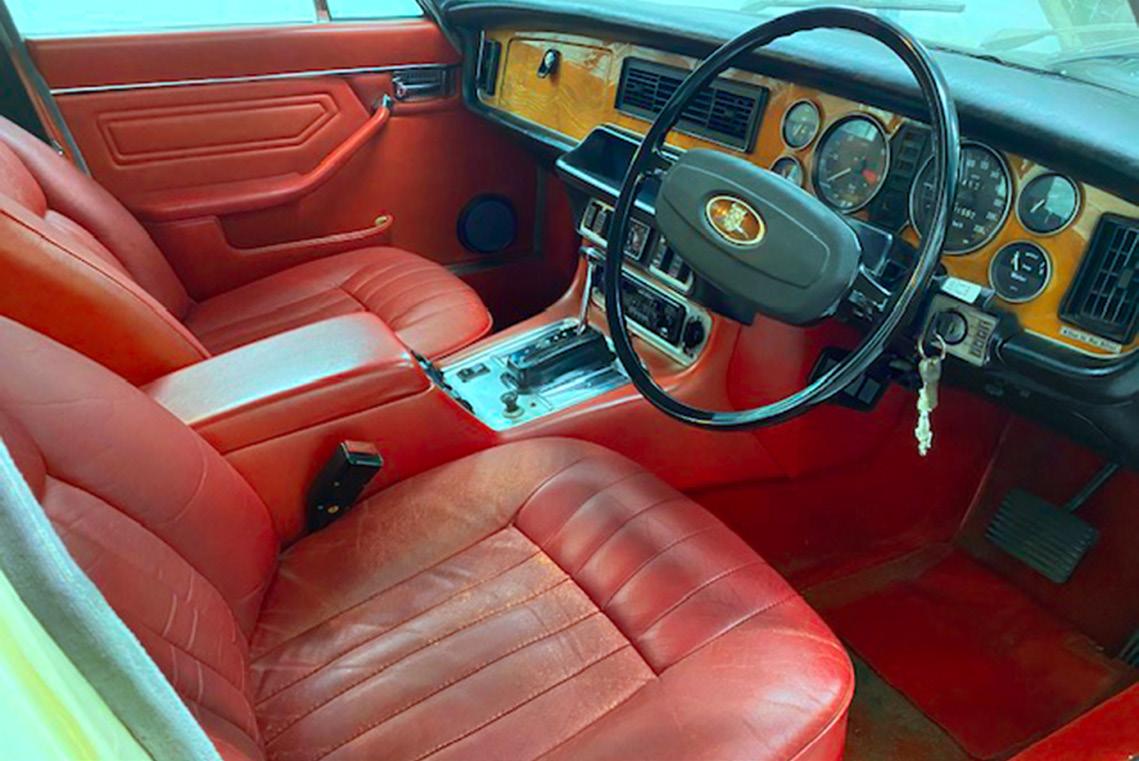
1972 E-Type Series 3 Manual 2 +2 FHC
British Racing Green with Cinnamon Trim. Delivered new by Bryson’s Sydney Nov 1972. The car is in Sydney Current owner for the last 35 years. At aprox 60,000 miles, restorer Graeme Lord carried a nut and bolt Concours restoration in late 90s. At Jaguar National Rally in Melbourne in 1991, it won the E-Type Class outright. The car has been maintained in excellent condition since. The car is up there with the very best Series 3 E-types with now only 71600 miles recorded. Driven only sparingly.
Offers around the $165,000 considered For more Info Ring Chris: 0418-277-440 crhaigh@bigpond.com
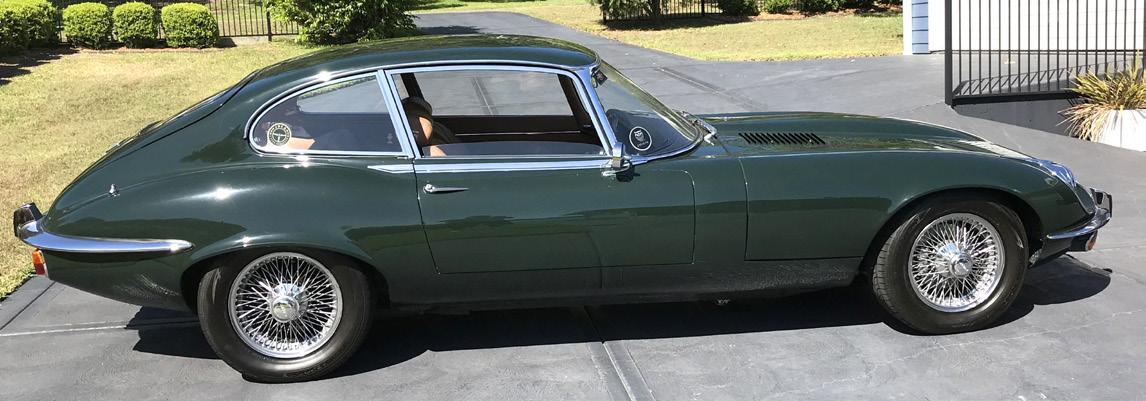

2012 XK (X150) S/C FHC Auto Azure Blue with Charcoal black interior. . Third owner since 2017. 61,000 Kms. The car is in Sydney. Stunning car already very collectible. Fully optioned with Piano Black Console and Carbon Fibre look dash facing. Ivory Headlining. 20 inch Nevis rims with hardly worn tyres. $85,500
For more Info Ring Chris: 0418-277-440 crhaigh@bigpond.com

2001 Jaguar XJ8 Sovereign 4.0 Litre V8 X308 LWB 5 Speed Auto Deceased Estate
Bought from Lorbek Luxury Cars, Port Melbourne for $29,090.00 in 2022. (The previous owner had owned the car from new). Colour: Seafrost Metalic Blue. The car is in amazing condition, inside and out. An incredibly clean car and amazing to drive, extremely comfortable and very quiet. Recently fitted with Brand New Tyres.
Kilometres: 169,000
Offers around the $19,999 considered Contact - Nigel Palmer - 0405 152 071



PERSONALISED PLATES FOR SALE
Prrrr-1 (british racing green. Please contact Paul Nielson pnielson95@gmail.com
FOR SALE: 1987 XJ-SC Cabriolet
107,000km (with service records to show this is correct). Perfect paint and trim. New hood recovered and relined. Targa top. Fitted with wire wheels with new tyres. Original wheels & new tyres come with the car.
REDUCED PRICE $38,000 (Firm)
Contact Don Tamblyn (Mannum) - 0472 752 110
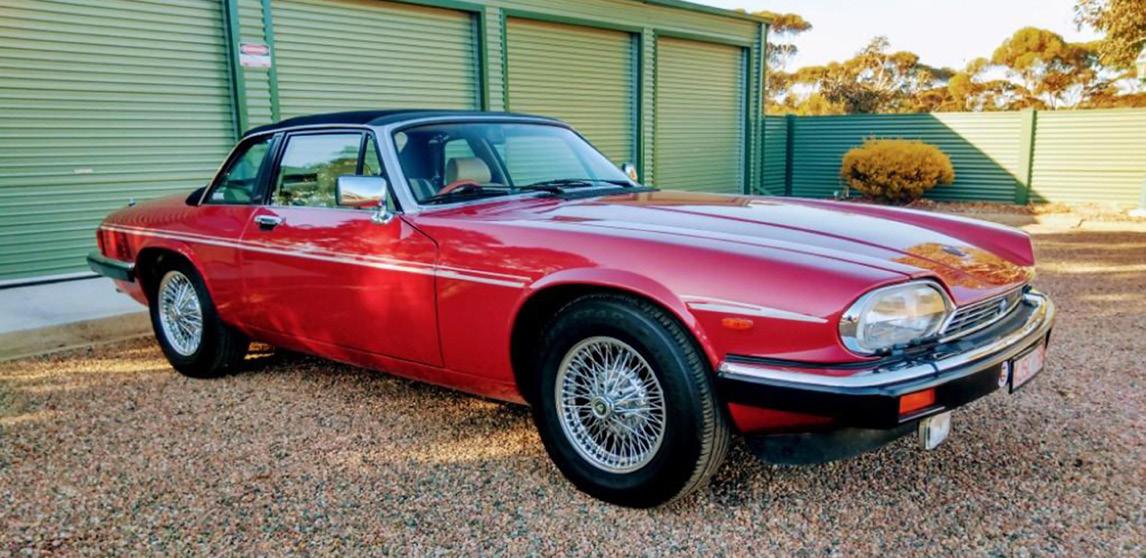
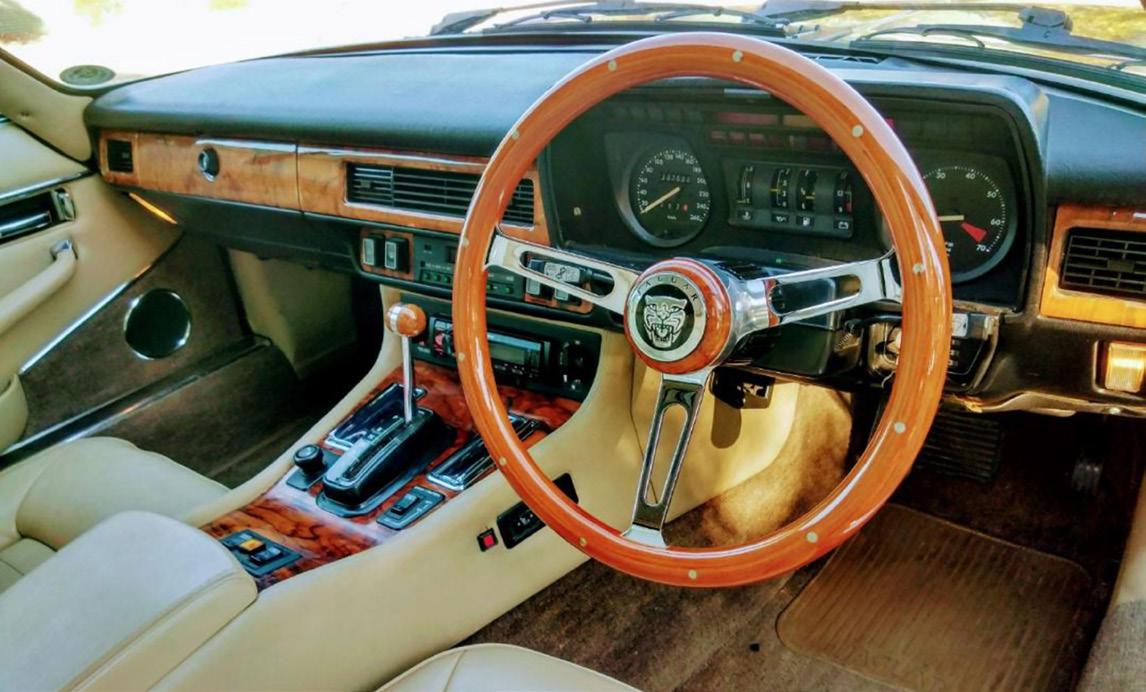
FOR SALE: XJ X308 Sports 3.2 Litre V8
207,000 Km
PRICE $15,000 ONO
Contact Brian 0427 373 086

FOR SALE: Two XJ40 sedans - could be used for parts or restoration. (1988 and 1993).
Have various spares, front seats, headlights, spare engine and a set of 4 pepper pot rims.
1988 Model runs - Has rust. Engine needs new water pump and brake Master cylinder repaired. Interior fitting to be refitted. 1993 Model is registered, engine runs, but has a bad oil leak from between the head and block. New roof lining. Brakes Master cylinder and sphere need servicing. New radiator to fit.
PRICE: Happy to discuss further
Please Contact David Klippel-Cooper 0417 873 050

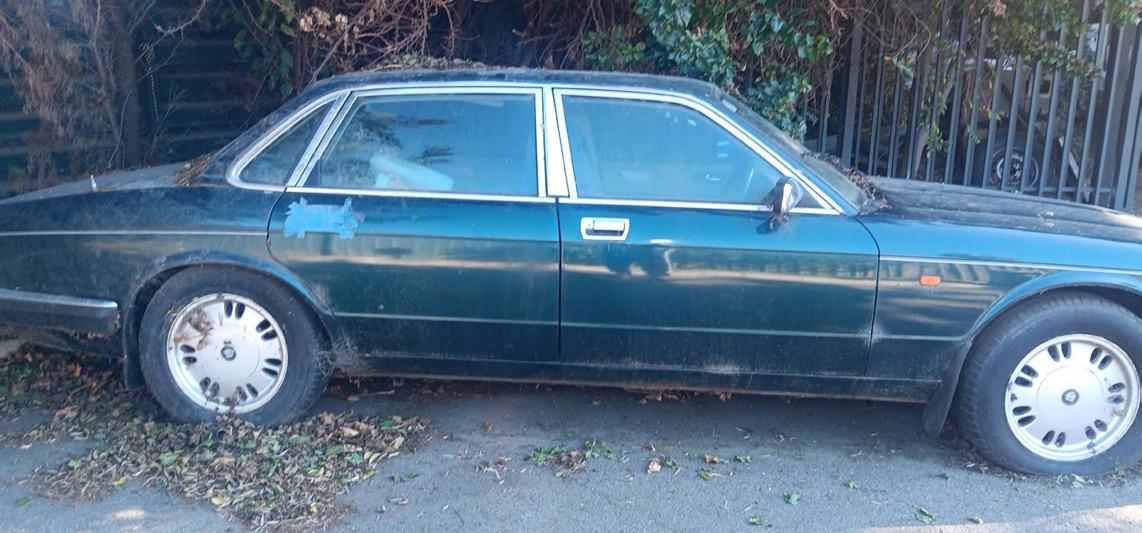
FOR SALE: 1996 XJ (X300) Sovereign 4.0 LWB
Immaculate silver blue duco, excellent leather, linings and wood. Books. Tool kit. SA govt approved chauffeur plates 2024. There is an issue with circuit controlling steering in/out and door mirrors adjustment. Genuine 174,000k's. A pleasure to drive.
Vehicle garaged in Clare SA. Inspection in Adelaide with notice.
PRICE $18,000 (Realistic Offers Considered).
Please Contact David Cowperthwaite 0419 035 946 or (08) 8842 1880

FOR SALE: 1964 MkX
Project Car. 27 years I bought the car and drove it for 6 months. Parked to work on it but unfortunately I never got around to it. Vehicle near Williamstown/Barossa.
PRICE - Best Offer
Please contact Steve Jones - (m) 0408 622 646

FOR SALE: 1965 MK10 4.2 Litre
Beautifully presented MK10 Jaguar. Stunning white paintwork with red leather interior. Stunning woodwork, carpets, hood lining. Carpeted boot. Complete new aircon system. Part of the family over 35 years
PRICE REDUCED - $28,500
Please contact Chris Michael - 0417 817 516
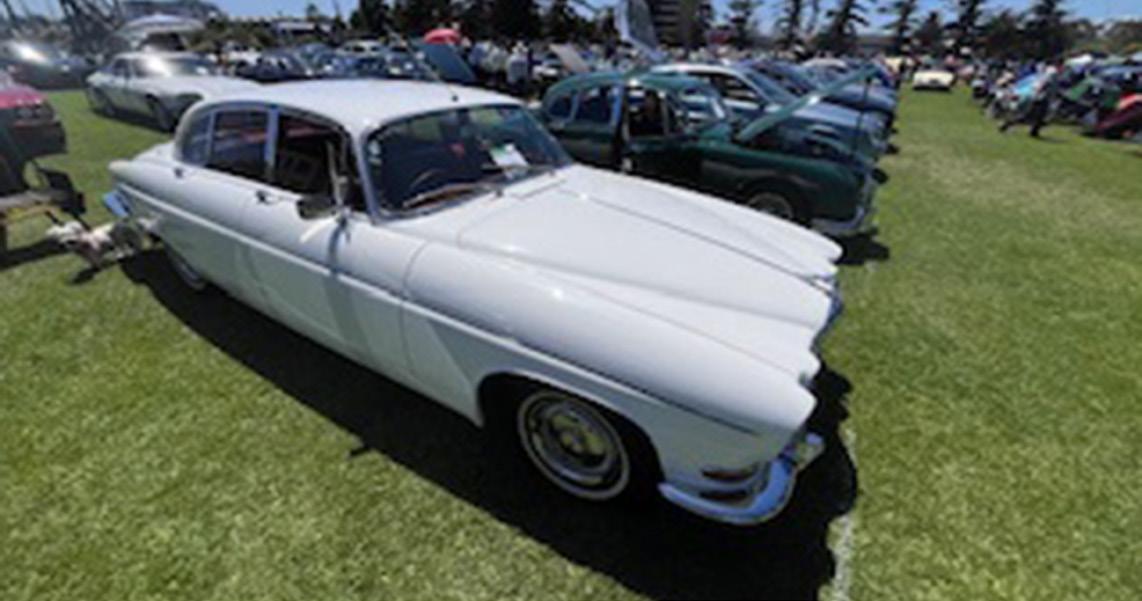
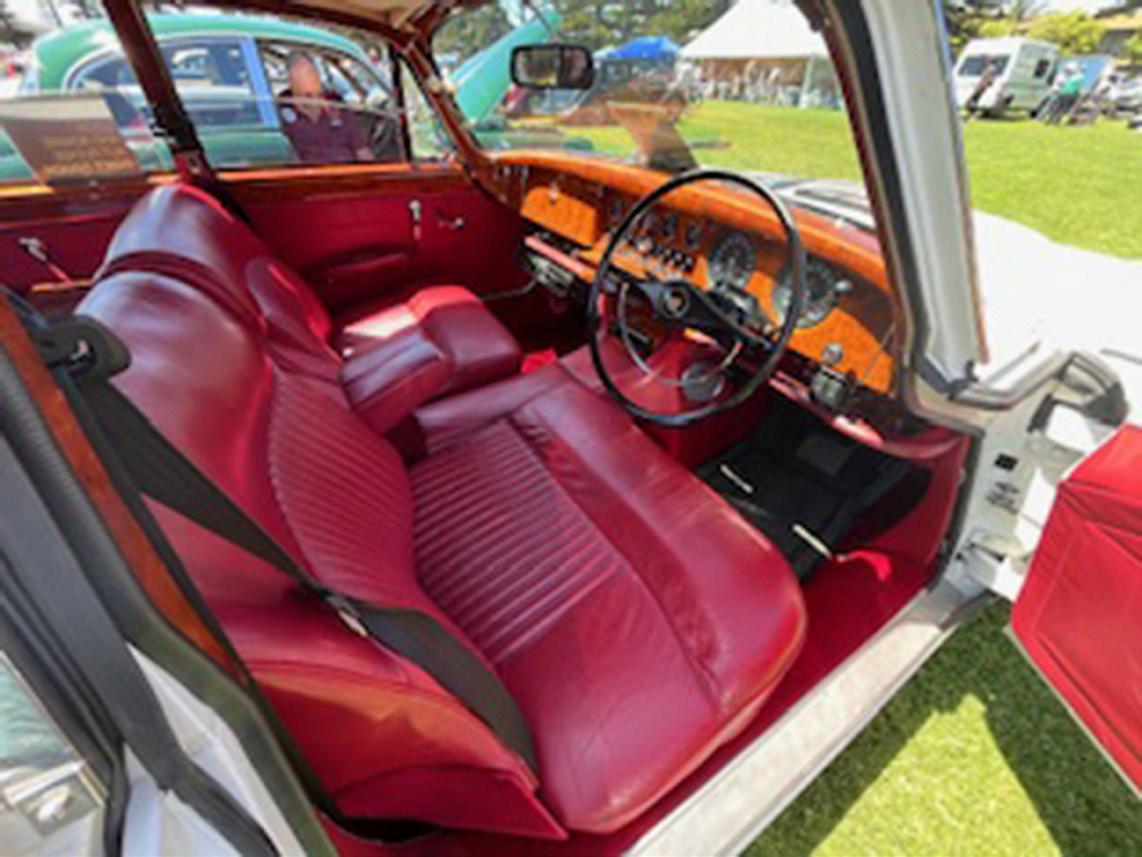
FOR SALE: Jaguar XE 2.0D
59,000km extraordinary economy with lively performance. One owner. Purchased new in January 2020. Extensive options including: Automatic self-steering parking; Distance cruise control; Autonomous emergency braking; Panoramic sunroof; Electric seat, steering and mirror adjust with memory;Leather seats; Stop start system. Regularly achieves 3.8 l/100km on city-rural driving.
PRICE - $29,000
Please Contact: Margaret Byles - 0412 094 450
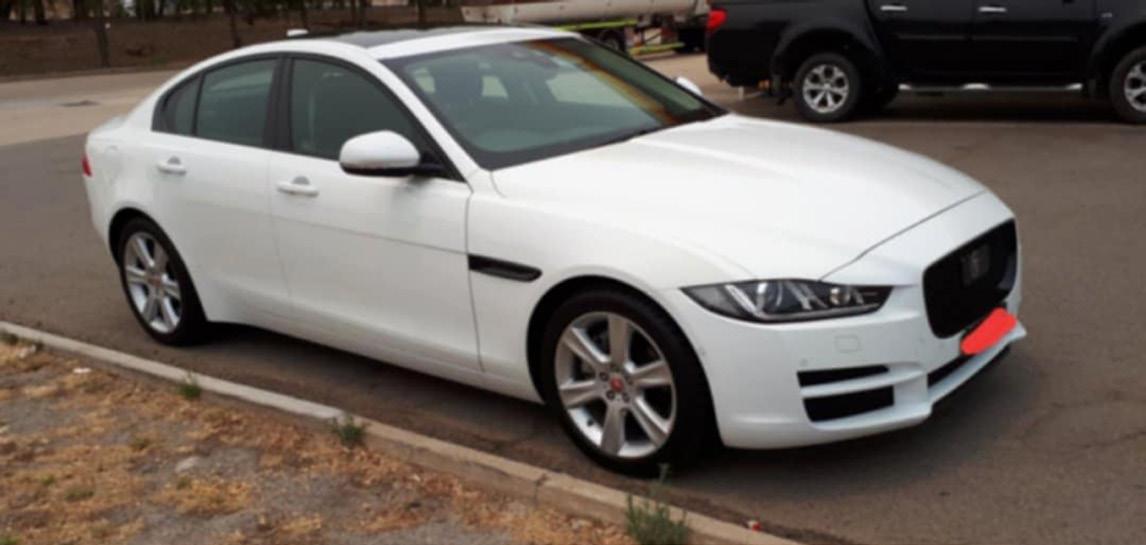
FOR SALE: 1996 XJ X300 3.2L
X300 with the AJ16 engines is one of the most reliable Jaguars ever built. This car is no exception. Low kilometres 130, 000. Runs superbly. Books since new, 2 owners, immaculate condition, arctic blue. Maintained by Tony at Stepney Autos Paintwork perfect. Lovely car but have to down size.
PRICE REDUCED - $12,500
Please ring Mark - 0401 444 919

FOR SALE: 1988 XJ-S Coupe
5.3 Litre V12 Auto
Owned for 17 years. Excellent condition, inside & out. Regularly serviced & maintained and garaged undercover.
POA - All Offers Considered
Please Contact Rick Luff 0411 426 913
Email: - rickluff@iinet.net.au
FOR SALE: 1972 Series 3 E type Roadster 60,000miles. Exceptionally well maintained with service records/invoices. Third owner. LHD USA no rust car imported by current owner in 2015. Soft top and tonneau cover in excellent condition. BRG paint over near new Cinnamon interior. Matching numbers as per Heritage Certificate.
PRICE - $165,000
Contact Bruce Davis (Adelaide) – 0400 872 438
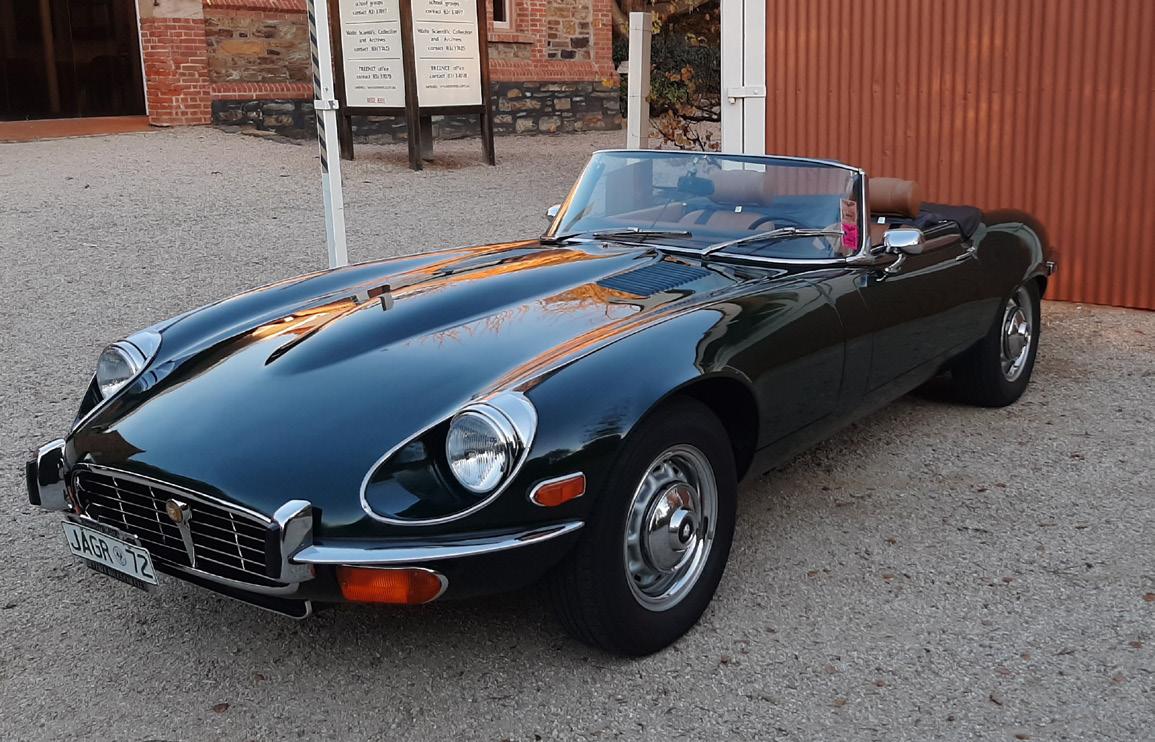
FOR SALE: 1984 XJ6 Series 3
Vehicle recently been re-sprayed and front suspension renewed Currently not running due to an issue with the head allowing coolant in.
Driven 338,800 kms. Car located in Kapunda
PRICE $5,000 (negotiable)
Please Contact David Atkins - 0429 890 597


120 Jaguars and 30 Aston Martins were displayed in Oak Bay's Windsor Park, British Columbia for the Jaguars on the Island Concours d’Elegance
The Jaguar Car Club of Victoria – one of only two such clubs in the world, the other being in Australia – gathered in Oak Bay’s Windsor Park on July 19 for the 20th annual Jaguars on the Island Concours d’Elegance, a highlight in a weekend of Jaguar-themed festivities.
The Concours d’Elegance, a competition of elegance, sees cars judged on their appearance, authenticity and condition.
The show welcomed Jaguars of all models and ages to the park, where they were displayed and judged among fellow enthusiasts. This year’s event placed a particular emphasis on the XKE Jaguar, also known as the E-Type.
Participants came from across North America, including entries from Washington, Oregon and even Florida, along with many local enthusiasts.
This year, the club also made room for a few Aston Martins to mark the 90th anniversary of the Aston Martin Owners Club. While the cars bear a different badge, they share a designer, Sir Ian Callum, who worked with both Aston Martin and Jaguar when the brands were under Ford ownership.
Jaguar Car Club of Victoria president Phil Nielsen said his passion for the vehicles began when he first saw them as a child.
“As a kid, one of my mom’s friends had one of these Mark 2 saloons, and I’m riding in the back seat of this and feeling
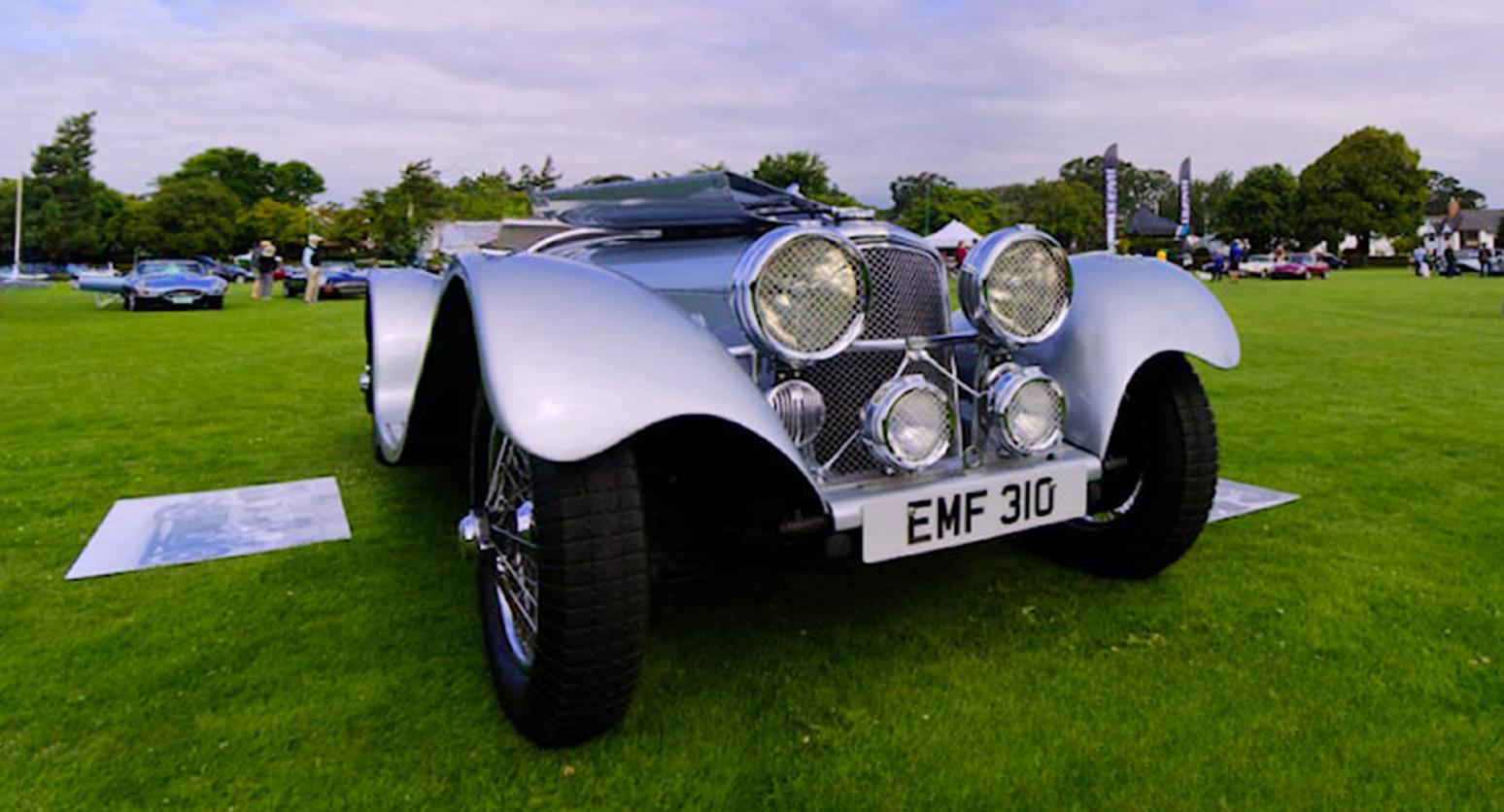
pretty special – you know, all the wood and leather. It’s just so different from a North American car, and I just got hooked,” said Nielsen.
“The term they used over the years was ‘grace, space and pace.’ That’s exactly it – they look like they’re going fast even when they’re sitting still.”
The crown jewel of this year’s show was a 1939 SS 100 – a pre-war Jaguar that predates the iconic big cat namesake. Originally called the “Super Swallow,” the company rebranded to Jaguar during the Second World War, as the term “SS” had taken on a much darker connotation.
For many participants, the enthusiasm began in childhood. Chris Moyse, who brought his 1969 E-Type to the show, said the passion runs deep.
“I always grew up around them, so I’ve kind of just been addicted from that age,”

said Moyse, who also enjoys seeing what other people bring to the shows.
He acquired his car from a friend who had used it as a daily driver for many years. At one point, it was even stolen in Vancouver, but was eventually recovered.
“You can tell it’s been used as a car. It doesn’t apologize for that,” said Moyse. While the vehicles appear pristine, it’s clear they all have a story – they are wellloved and well-used.
Most of our people don’t trailer their cars in from wherever they’re coming from – they drive them, and quite regularly,” said Nielsen.



Vehicle History: 1950 XK120 Alloy ‘Special’ (project). Chassis number: 660030.
In the same family ownership for the past 57 years, this alloy RHD XK120 left the production line on 3 January 1950 and dispatched to Bylaw of Melbourne. It sold in May 1950 to the new owner, James Skinner, who raced the car at the Rob Roy Hillclimb.
In 1958, the second owner modified the car extensively, adding a fibreglass fastback hardtop and a scalloped area in the front guards behind the wheels.
Then followed more owners and further body modification, along with the fitment of magnesium wheels. Unfortunately, the original engine was replaced with an XJ6 engine with manual overdrive gearbox. Mark 9 disc brakes up front and a complete Mk II rear axle were also fitted.
The XK120 was auctioned by Donington’s Melbourne and Sold for $38,000. They were hoping to get $55,000. .
Information from Donnington Auctions, Melbourne.
English singer, songwriter and musician Noel Gallagher ('Oasis') sold his Jaguar Mark II soft-top for £125,000 (Au$256,000) in 2022 - having never driven it in the 25 years he owned it.
At the time of the sale, it was reported that the car had been bought by an anonymous buyer. It turned out that it was in fact purchased by Jaguar Land Rover Classic, and it continued to make appearances in a number of high-profile events, including the Queen’s Platinum Jubilee celebrations with model Twiggy riding in the back.
Jaguar Land Rover Classic in turn sold the car in 2023 to a private buyer for £144,950 (Au$297,000). The Mark II convertible is now for sale again via Twyford Moors Classic Cars with its price released on application.
The Oasis star bought the 125mph soft-top during the band’s heyday in 1997 but never passed his test. Originally a fourdoor MKII saloon, the Jaguar underwent a two-year highspecification transformation into a convertible model by specialists "Vicarage". The rear doors were removed and the front doors extended, while an electric hood and window system were added to create a fully-functioning convertible.
Having originally planned to take lessons and get a licence while the car was being converted, Gallagher dropped out of driving school after just one session. He said: “My Jaguar just sits in the garage. It’s been there since the ’90s. I thought when I became a fully-blown rock star, I was gonna need a car. So, I got a MkII Jaguar from 1967, the year I was born. I thought I’ll easily have learned to drive.”
While the car was never driven by Gallagher in the end, it was kept in professional storage for many years, as well as making an appearance in a music video for Gallagher’s High Flying Birds band, driven by "Doctor Who" actor Matt Smith. .
Editor: Information for this story sourced from "The Irish News".
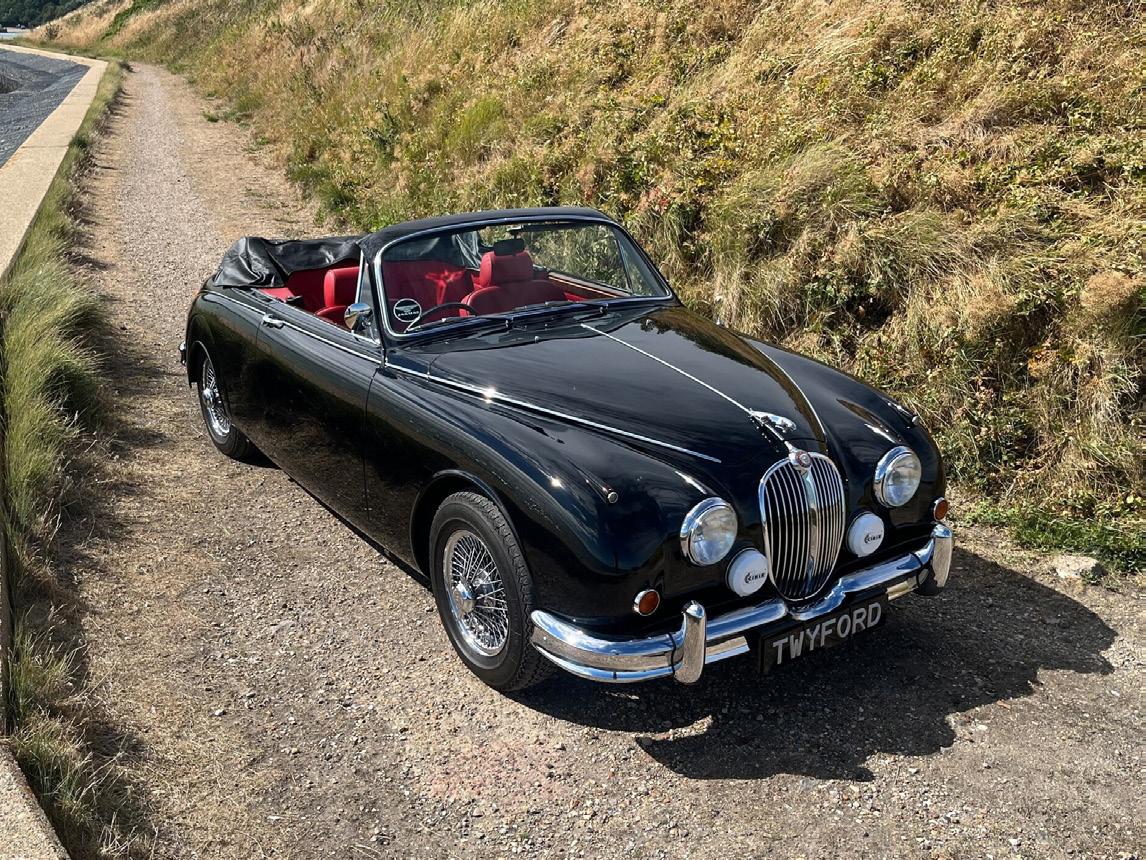
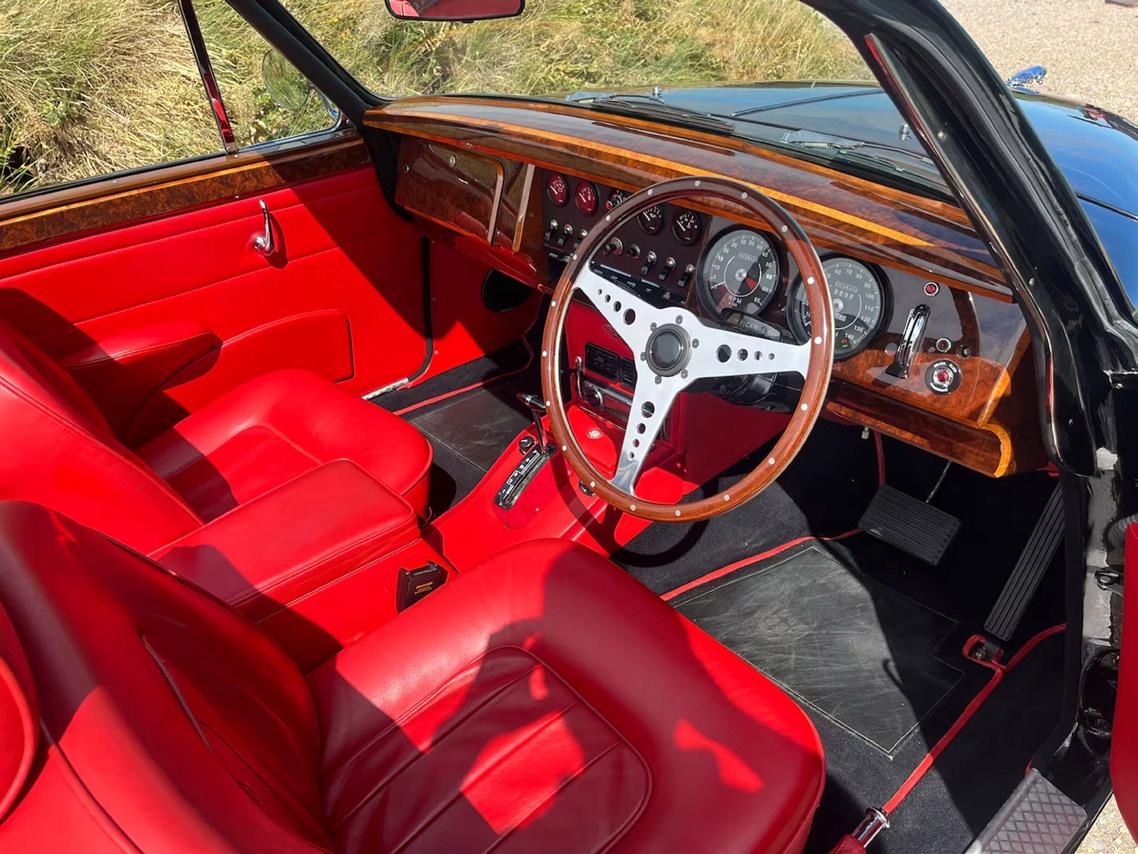

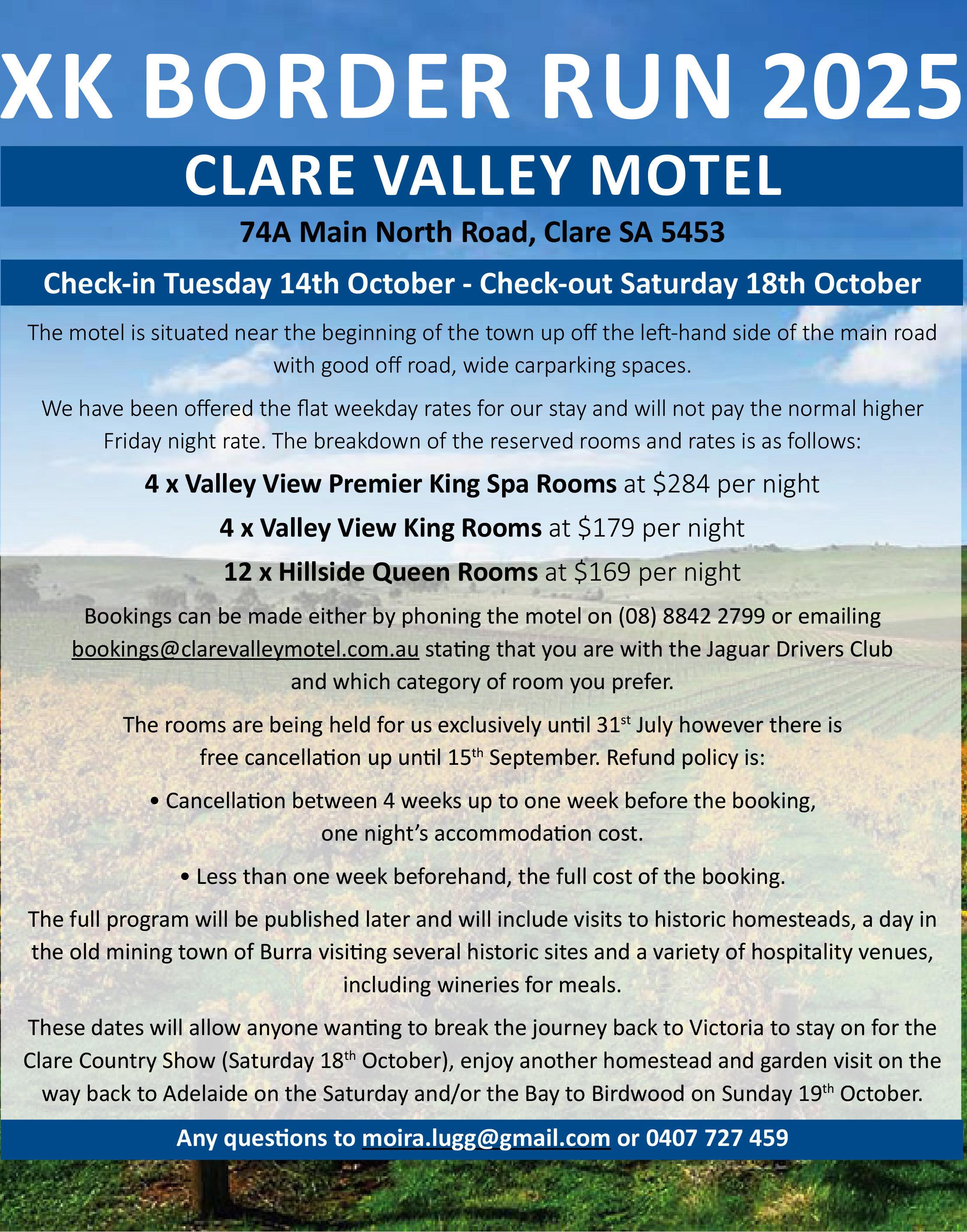
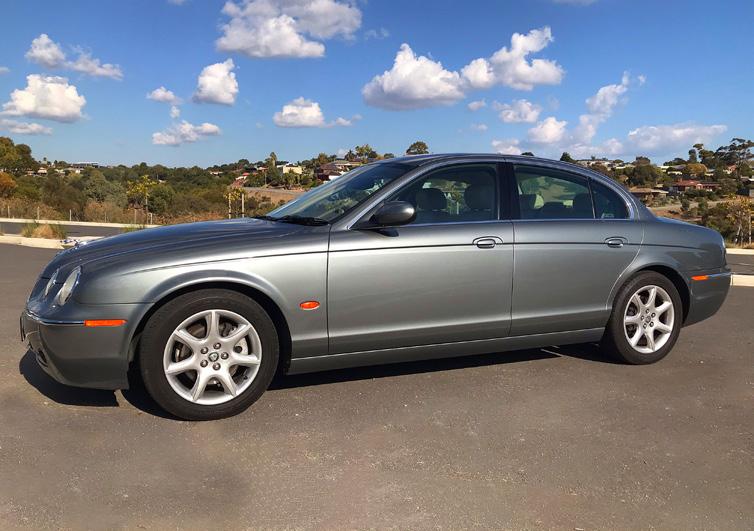
Multivalve Register meet bi-monthly or as advised.
Minutes of the Multivalve Register Meeting held at the Kensi Hotel, Regent Street, Kensington, Monday 28th July 2025.
Present: John Castle, Ron & Claire Palmer, Tom & Marj Brindle, Margaret Thomas, Michael Pringle, Josephine Orford, Jim Komaromi, Peter & Tricia Clarke, Bob & Daphne Charman, David Brewer, Peter & Heather Buck, Peter & Judy Goodale, Julian & Moira Lugg, Steve & Cecilia Schubert, Lesley Clarke.
Apologies: Arcadia Komaromi, Robert & Robyn Welch, Hugh & Lusia Guthrie, David Taddeo, Ray Smithers, Judy Langdon.
Welcome: The Register welcomed Peter & Judy Goodale from the XK Register, visiting for log books to be renewed.
Minutes of previous meeting: Accepted with no matters arising.
Welfare:
▪ Bev Buttery is still waiting for a hip replacement and Wayne is still undergoing extensive dental treatment.
▪ Peter Clarke advised that Sue Weeks has recently spent time in hospital.
Club Business:
1. The annual dinner was a great success and came in just over $1,400 under budget. Tricia, Daphne and Heather were congratulated on another very enjoyable event.
2. The Ladies Register is getting excellent numbers for each outing. The next one is at Utopia at Waterfall Gully on Thursday 31st July, with 33 ladies already registered.
3. The Executive is evaluating the recent survey and is looking for improvements that may advance our social/technical areas. Moira Lugg will give a short summary presentation of the results at the next general meeting.
4. Suzanne Jarvis (ex E-type Register Secretary) has volunteered as coordinator for SA Jag Day in October this year with the help of Phil Prior and Tim White.
5. The Club library has now been moved to the lock-up and the list of items is on the website.
6. The next General meeting is a week tomorrow on Tuesday 5th August at the Junction, dinner at 6:00, meeting at 7:30pm.
7. It was once again stressed that registration for all meetings or events is important so that numbers can be given to the venues for catering. Peter advised members that if their previous plans were cancelled and they could make meetings after all, they should come along – he doesn’t want them to miss out just because they haven’t booked. Extra places were always advised to venues as a “just in case”.
8. This year there will be vacancies for the President, Vice-President, Treasurer and Committee Member –nominations will be published in the next edition of the Classic Marque. The recent survey indicated a number of members feel they should have a say in the running of the Club, in which case they are encouraged to nominate for a committee position.
Register Business:
1. Members were asked for suggestions for the Multivalve Christmas lunch run so that a venue can be booked sooner rather than later. Please email, text or phone ideas as soon as possible.
2. A vote was taken for the election of a Multivalve Register Secretary for the coming year. Unfortunately Peter lost and will have to carry on for another twelve months.
Car Talk:
◊ Daphne Charman: Referred to Bob as he knows best…...
◊ Bob Charman: Took the XJ in for a bit of rust to be dealt with, very happy with the job so also had Big Red sorted for the same issue, mostly on the front passenger door. The XF had an electrical problem which has been fixed under insurance.
◊ Peter Clarke: Peter and Tricia have been away recently and so the Mk2 has been in hibernation. The E-type has been out with no problems at all.
◊ Tom Brindle: 1994 XJ40 – the new spoiler still needs to be installed, however the car has been outside in the weather and has a flat battery. Tom hasn’t had the time to work on it recently because of granddad duties.
Bob Charman, Michael Pringle and Peter Buck are willing to help. Tom just needs to name the day!
◊ Ron Palmer: 2014 XF 3-litre supercharged, nothing to report.
◊ John Castle: S-Type gathering dust at the moment and on trickle charge, as he is enjoying the Land Rover!
◊ Jim Komaromi: 2007 S-Type, still waiting for parts to fix the bodywork on the passenger side after the hit and run in a car park. Had a problem with a broken boot wire and couldn’t lift it up, has now had it repaired. Also had four new tyres, which hurt....!
◊ Michael Pringle: 2019 XE goes like a rocket. Asked if anyone had ever used Renovo product from the UK (sealer for car hoods, etc), but nobody had. Michael will try it on the head lining which is starting to let a bit of water through, and report back.
◊ Jo Orford: XKR battery conked out, not surprising as it was eight years old!
◊ Margaret Thomas: XJ sold to a collector in Whyalla.
◊ David Brewer: 2010 5-litre XK, running well, kept on trickle charge –all sweet.
◊ Julian Lugg: Started up the XK120 the other day after a trip to Europe. It fired up and ran beautifully. Has now owned it for 51 years so it is finally just “runin”.
◊ Steve Schubert: Has a new addition to the family, a “Masons Black” Mk2 that he is currently working on to fix the clunks and squeaks. Now has three Jags, might sell one, might not!
◊ Lesley Clarke: Nothing to report (but great to see Lesley back at our Register meeting!).
◊ Peter Goodale: Has a Mk2 and an XK140. Just got the log books signed so he can now drive them!
◊ Peter Buck: The group recommended he should use the trickle charge when he is not using the X308 (even though it’s driven every week).
Any Other Business: Various items are being offered for sale on the 2nd and 3rd September from the Carl Lindner collection. Photographs and further details will be released towards the end of August.
Next Meeting Date: Thursday 25th September at The Kensi, 6:00pm for a meal, 7:30pm for the meeting.
Meeting closed at 8:20pm Peter Buck Register Secretary
XJ , Mk 10 & 420G Register
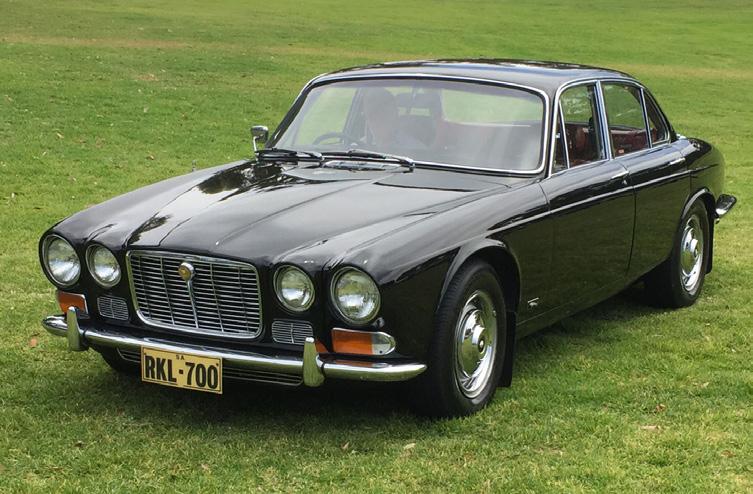
The XJ, Mk10 & 420G Register meet the second Wednesday of each month.
Minutes of meeting held at 7.30pm on Wednesday 9th July, at the Bartley Hotel, West Lakes Shore.
Present:
Ron & Rosie Bailey, David & Margaret Bicknell, Tom & Marj Brindle, Bob & Daphne Charman, Alan & Lurraine Davis, Jeannie De Young, Don Heartfield, Darryl & Fay Leyton, Louis Marafioti, Chris Michael, Dean McCarthy, Graeme & Betty Moore, Paul Moore, David & Angela Nicklin, Trevor Norley, Ray & Barb Offe, Michael & Jo Pringle, Charlie & Mary Saliba, Margaret Thomas.
Apologies:
Peter & Heather Buck, David Taddeo, Borys & Ellaine Potiuch.
Welfare:
My Sister, Jeanie De Young has had a few weeks in hospital and it’s good to see her back tonight.
Previous Minutes:
Acceptance of minutes: proposed & approved by David Bicknell seconded by Alan Davis.
General Business:
1. Dinner tickets to the Annual Presentation Dinner going well.
2. This year’s Register Xmas Dinner and Show is booked for Saturday the 13th December at the Glenelg Golf Club. It is now online and tickets selling well. 56 sold already.
3. Don’t forget our XJ Register Auction night in November at the Bartley Tavern.
4. A.G.M. Tuesday the 2nd Sept
5. Log Books are now one month overdue, if you haven’t already done them.
Car Talk:
◊ Ron & Rosie Bailey: Headlight problem - dirty fuse terminal.
◊ David Bicknell: Having window repairs on car and head tune up as well.
◊ Tom & Marj Bridle: Front panel still not fixed. Petrol pump packed up.
◊ Bob & Daff Charman: Big Red having small rust problem repaired.
◊ Alan & Lurraine Davis: X Type paint and dent repairs done. Great job.

◊ Jeannie DeYoung: All going well thanks.
◊ Don Heartfield: Toni really likes her new X Type.
◊ Darryl & Fay Leyton: N.T.R.
◊ Louis Marafioti: XJ8 going very well.
◊ Graeme & Betty Moore: XJS now running on all 12 cylinders.
◊ Paul Moore: X300 spoiler fell off.
◊ David & Angela Nicklin: XJ8 Batteries in key fob need replacing.
◊ Trevor Norley: XJ6 Ser 3 now starts in the cold mornings. X Type going well.
◊ Ray & Barb Offe: XJS flying.
◊ Michael & Jo Pringle: No problems.
◊ Charlie & Mary Saliba: Not using his cars at the moment.
◊ Margaret Thomas: Sold the Series2 through a dealer.
Meeting closed at 8.00pm and members invited to stay for coffee.
Next meeting to be held on Wednesday 13th August, at the Bartley Tavern.
See you all there,
Bob Charman, XJ Register secretary


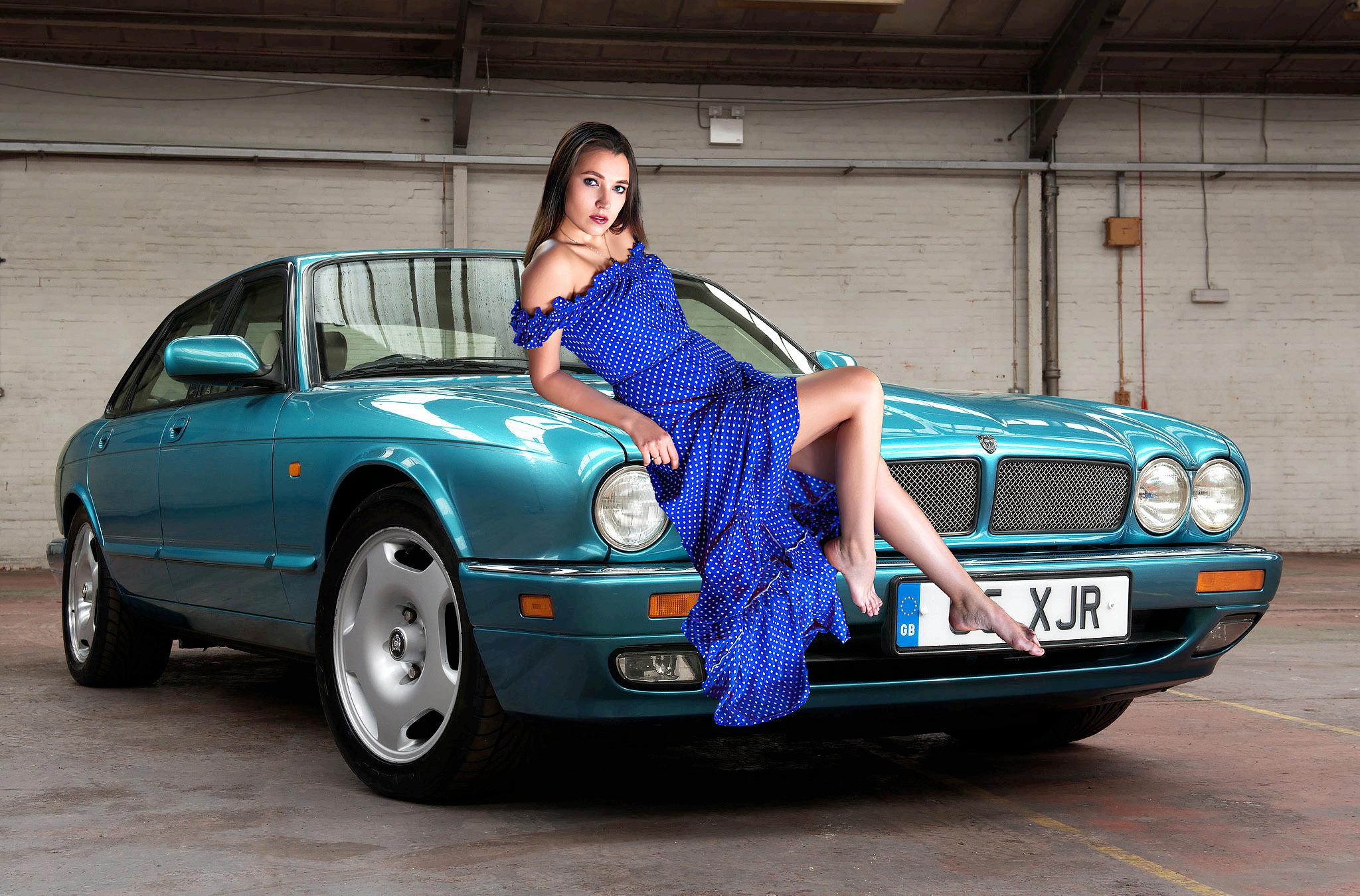
FEATURE - 30 YEARS OF THE XJ X300/XJR (unknown Model)

After 30 years, the XJ X300 supercharged XJR is still a very popular and very fast race car in the U.K and Europe.

Classic Marque is the official magazine of the Jaguar Drivers Club of South Australia (JDCSA). The opinions and views expressed in published articles are wholly those of the respective authors, and are not necessarily those of Jaguar, the Editor, the Club, or its members.
Advertisers and sponsors who place advertisements in the magazine do so because they value their association with the JDCSA. Placement of these advertisements should not necessarily be taken to mean the Club endorses the services offered.
Minutes of the JDCSA General Meeting held on Tuesday 1st July, 2025, at The Junction, 470 Anzac Highway, Camden Park.
Meeting opened at 7:30 pm
Apologies: Graham & Jan Franklin, Heather & Peter Buck, Moira & Julian Lugg, Wayne & Bev Buttery, Peter & Ros Holland, Jim & Arcadia Komaromi, Oggie Stojanovich & Gary Monrad
New Members:
Doug Gare – S3 Daimler Sovereign Welfare:
Steve Weeks shared health updates of Club Members: Margaret Evans, Bev Buttery, Mark Stojko and Onslow Billinghurst
Previous Minutes:
Minutes of 3rd June 2025 meeting were moved as correct by Bruce Davis and seconded by Dave Burton. Accepted by the meeting
Business Arising: Nil
President’s Report:
Michael Pringle expanded upon his report in Classic Marque and once again congratulated Alan Bartram on receiving his Order of Australia Medal in the King’s Birthday Honours List. Alan Responded.
Vice President’s Report: Nothing to report.
Secretary’s Report: Moira absent – no report.
Treasurer’s Report: Heather absent –sent a report that she is working on the end of year reports.
Membership Secretary’s Report: Daff reported 2 new memberships for July and she is continuing to process membership renewals. Badges and certificates for the Annual Dinner presentations are all done and letters of invitation have been sent out to recipients
Editor & Events Report:
Graham absent – sent a report that he is looking for photos for the 2026 club calendar. The August issue of Classic Marque will have a feature on XJ X300
(1995-2025). Members are invited to submit articles to Graham.
Logbooks Report:
Tim White reported that 294 logbooks have been renewed to-date; approximately 50 at various venues and 150 at register meetings with the balance via mail. There are 94 logbook renewals outstanding and members who have not yet renewed must NOT drive their car until they have renewed.
MSCA Report:
Barry absent. No report.
Librarian Report: Tom reported that the library has now been moved to the club’s storage facility. Tom thanked Peter and Heather Buck for their removal skills. The library is available online through the club website.
Regalia Report: No report.
REGISTER REPORTS:
Multivalve Register:
Peter absent – sent a report that the run last week went well, mostly dry.. The next Register meeting will be held at the Kensi Hotel on Thursday 24th July - 6 pm for dinner, 7:30 pm for the meeting. Register via THQ next week.
Compact Register:
Phil reported that the next run is a joint run with XK,7, 8,& 9 register on Friday 4th July and the next meeting will be on Tuesday 12th August. There is planning underway for a trip to Melbourne to the JCCV Display Day in November.
XJ, MK10 & 420G Register:
Bob reported that the next meeting is on Wednesday 9th July at 6 pm at The Bartley Tavern.
E, F & GT Register:
Bruce Davis reported that the next meeting is in late August.
SS, Mk IV, Mk V Register: Graham absent. No report.
XK, 7, 8 & 9 Register:
Steve Weeks reported that the next run is the joint run with Compact register on Friday 4th July and the next meeting will be in late August.
Ladies Social Register Report:
Tricia absent. Daff reported that the next meeting is a High Tea at 'Utopia', Waterfall Gully on 31st July. There are still tickets available for the the Annual Dinner being organised by the Ladies Register members on Friday 18th July.
General Business:
A coordinator is still needed for SA Jag Day.
Next meeting: Tuesday 5th August at The Junction.
Meeting Closed: Michael closed the general meeting at 8:05 pm after his usual joke.


Club Postal Address: PO Box 6020, Halifax Street, Adelaide SA 5000
Club Web Site / Email
Web: www.jdcsa.com.au
Email: hello@jdcsa.tidymail.co
President: Michael Pringle Mobile: 0418 311 422 president@jdcsa.tidymail.co
Vice President: Tim White Mobile: 0419 809 021 vicepresident@jdcsa.tidymail.co
Treasurer: Heather Buck Mobile: 0432 549 086 treasurer@jdcsa.tidymail.co
Monthly Meetings: 1st Tuesday of the month (Feb - Dec) 7.30pm at “The Junction”, 470 Anzac Highway, Camden Park. (Near the Morphettville Racecourse). Members can choose to have a meal from 6.00pm prior to the meeting.
Secretary Moira Lugg Mobile: 0407 727 459 secretary@jdcsa.tidymail.co
Committee Member: Peter Holland Phone: 0408 810 884 pholland@senet.com.au
Committee Member: Vacancy
Membership Secretary: Daphne Charman Phone: (08) 8248 4111 Mobile: 0404 999 200 membership@jdcsa.tidymail.co
SS, Mk IV, & Mk V
Meet TBA
Graham Franklin: (0490 074 671 E: ssregister@jdcsa.tidymail.co
XK & MK 7, 8, 9 - Meet TBA
Steve Weeks: 0414 952 416 E: xk789register@jdcsa.tidymail.co
Mk 1, 2, S Type, 420 (Compact) Meet TBA
Phil Prior: 0402 670 654. E: compactregister@jdcsa.tidymail.co
XJ, 420G, & MK X
Meet 2nd Wednesday of each month.
Bob Charman: 0421 482 007 E: xjregister@jdcsa.tidymail.co
E, F & GT
Meet 3rd Thursday every 2nd month. Bruce Davis: 0400 872 438 E: efgtregister@jdcsa.tidymail.co
Multi-Valve - Meet 4th Thursday of the odd Calendar month. Peter Buck: 0421 061 883 E: multivalveregister@jdcsa.tidymail.co
Jaguar Ladies Register:
Meet 3rd Thursday every 2nd month. Tricia Clarke: 0422 128 066 jaguarladiesregister@jdcsa.tidymail.co
Editor/Events Coordinator: Graham Franklin Mobile: 0490 074 671 Email: editor@jdcsa.tidymail.co
Librarian: Tom Brindle. Phone (08) 8387 0051. E: librarian@ jdcsa.tidymail.co
Marque Sports Car Association (MSCA): Club Representative: Barry Kitts: 0412 114 109
All British Day: -
Club Representative: Fred Butcher: 0428 272 863
Federation of Historic Motoring Clubs (FHMCSA): Club Representative: David Burton Mobile: 0417 566 225
Technical Officer: Geoff Mockford Phone: (08) 8332 3366 Mobile: 0438 768 770
Public Officer: Steve Weeks Mobile: 0414 952 416. E: publicofficer.@jdcsa.tidymail.co
Archives: Peter Holland, Dave Burton, Graham Franklin Email: hello@jdcsa.tidymail.co
TidyHQ Administrator: Tim White. Mobile: 0419 809 021. E: thqadmin@ jdcsa.tidymail.co
Web Master: Phil Prior/Tim White Phil Prior. Mobile: 0402 670 654. Tim White. Mobile: 0419 809 021. webmanager@jdcsa.tidymail.co
Logbook Compliance Officer:
• Tim White - Phone: 0419 809 021. E: logbookofficer@jdcsa.tidymail.co
To obtain MR334 Application Forms
• Geoff Mockford: 0438 768 770
• Evan Spartalis: 0408 827 919
• Roger Adamson: 0421 052 518
• Tim White: 0419 809 021
